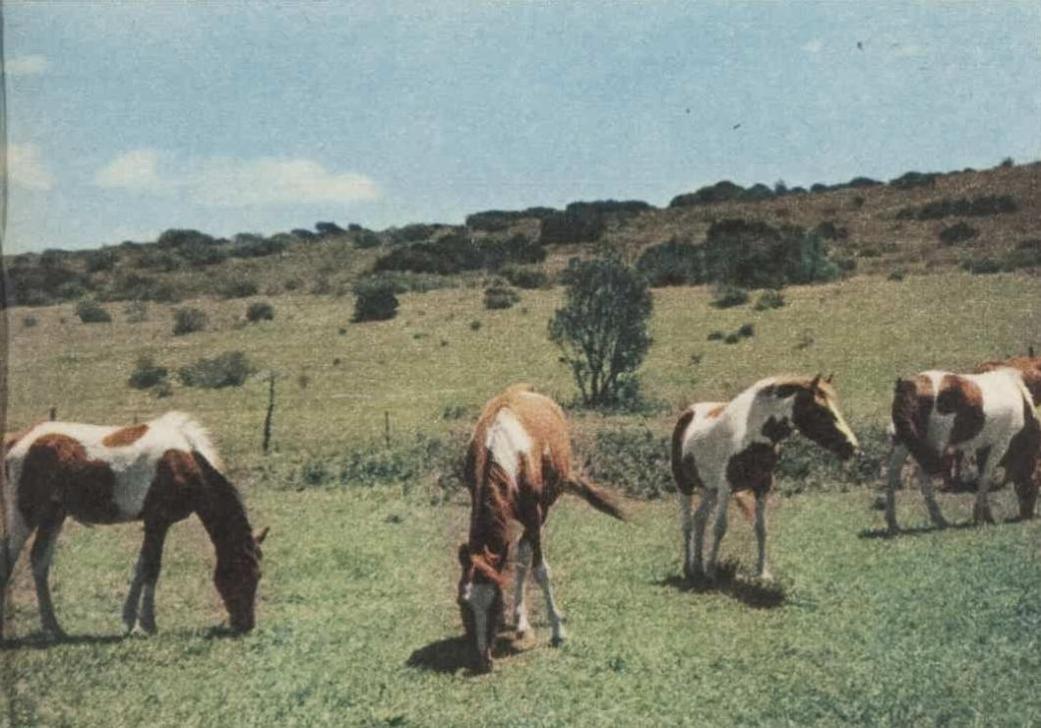June 2 - 8, 2019: Issue 407
Pittwater Roads II: Where The Streets Have Your Name- Warriewood
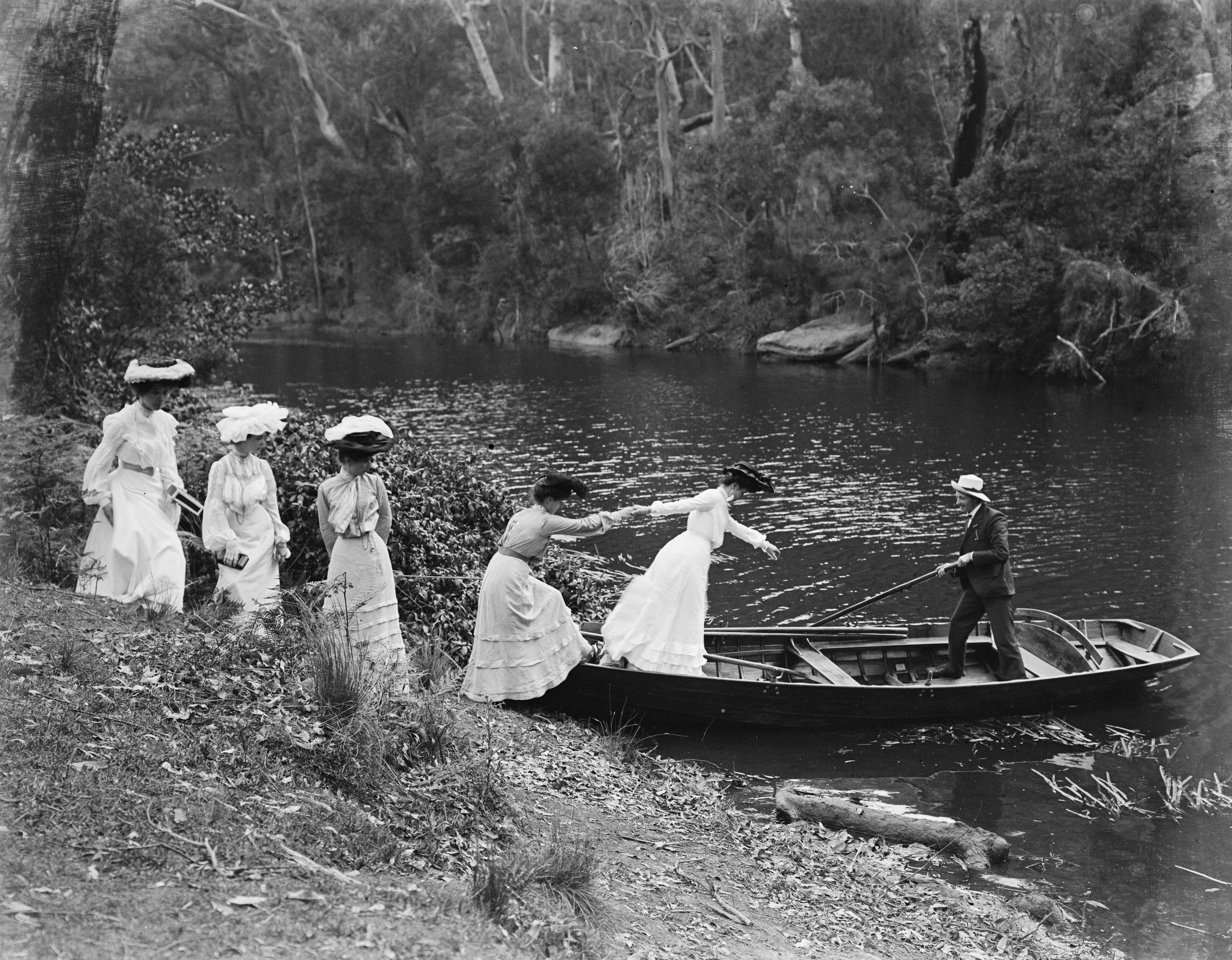
Five women stepping into a punt at Narrabeen Lagoon with [Macpherson] male at stern, c1905, Image No.: c071400026, courtesy State Library of NSW. From MacPherson Family Albums
James Jenkins, patriarch of the Jenkins family of four sons and four daughters, an ex-convict and family who also had acreage at Long Reef, is the first recorded settler in this area, granted land in 1826. His first born child, Elizabeth, named after her mother, had lands to and from the other side of Narrabeen Lagoon on the east at what we today call Warriewood Beach . An indication of his holding and use of it appears;
Sydney, 22d April, 1829. GOVERMENT NOTICE. Colonial Secretary's Office, Sydney, 22d April, 1829.
THE following Persons are permitted to Depasture their LIVE STOCK on the Lands adjoining their respective Properties, as undermentioned, on the conditions specified in the Resolutions of the 16th October, 1828; namely:
1st. That they pay Rent for the same, at the Rate of Two Shillings and Sixpence Sterling per Annum for every Hundred Acres; and 2d. That they abandon the said Land at any time, on receiving One Month's Notice.
They are accordingly informed, that they will be expected to Pay the said Rent from the 1st of the ensuing Month.
30. Narrabeen - James Jenkins, 500. Five hundred Acres, bounded on the South by his own Land, and on the East by that of Mr. Robert Campbell, Jun. Classified Advertising. (1829, April 25). The Sydney Gazette and New South Wales Advertiser (NSW : 1803 - 1842), p. 1. Retrieved from http://nla.gov.au/nla.news-article2192301
In ensuing years:
GRANTS OF LAND. NARRABEEN.
1. ELIZABETH JENKINS, 60, Sixty Acres; described as No. 4 in the Government Notice of 19th September,1831, in the name of Alexander Mc Donald.
2. ELIZABETH JENKINS, 60, Sixty Acres; described as No. 5 in the Government Notice of 19th September,1831, in the name of Alexander Mc Donald.
3. ELIZABETH JENKINS, 80, Eighty Acres; described as No. 6 in the Government Notice of 19th September, 1831, in the name of Alexander Mc Donald.
4. JAMES JENKINS, 50, Fifty Acres; described as No. 1 in the Government. Notice of 29th September, 1831, in the name of Daniel Rowan.
Classified Advertising. (1831, October 13). The Sydney Gazette and New South Wales Advertiser (NSW : 1803 - 1842), p. 1. Retrieved from http://nla.gov.au/nla.news-article2203043
James Jenkins' main grants north of Narrabeen Lagoon are:
250 acres granted to James Jenkins on 19 October 1831, to be called "Cabbage Tree Hill" (LTO SN 30 129)
100 acres granted to James Jenkins on 19 October 1831. This adjoined the 250 acres on the north. (LTO SN 30 110) [2.]
His daughter's inherited land grants:
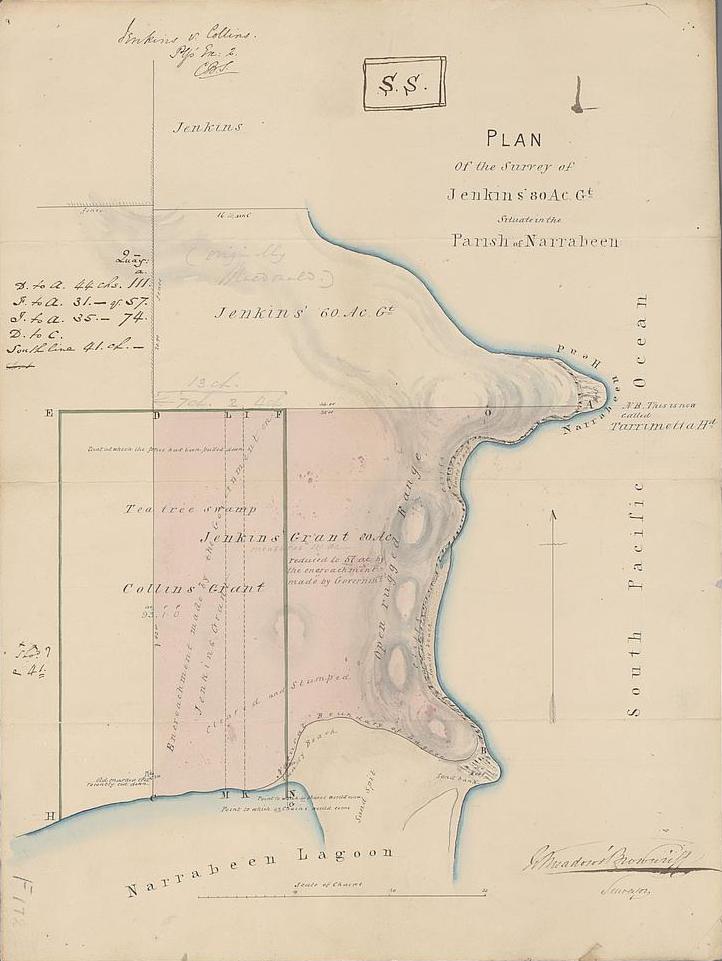
Brownrigg, W. Meadows (William Meadows) Plan of the survey of Jenkins' 80 acre grant [cartographic material] : situate in the Parish of Narrabeen 1831 - 1859. MAP F 172. Courtesy National Library of Australia.
LABOURERS for Powder Works, Narrabeen. Apply to John Taylor, on the Works, Thursday next. Advertising (1884, December 31). The Sydney Morning Herald (NSW : 1842 - 1954), p. 3. Retrieved from http://nla.gov.au/nla.news-article13578812
In the Supreme Court of New South Wales (20,1701)
IN INSOLVENCY.
In the Insolvent Estate of Carl Von Bieren, formerly of Narrabeen, powder manufacturer.
FIRST AND SECOND MEETINGS.
WHEREAS the estate of the abovenamed insolvent was, on the 27th day of October, 1885, placed under sequestration by order under my hand: I hereby appoint a First Meeting of the creditors of the said insolvent, to be holden before me, or before the Registrar in Insolvency, at the Court, Phillip-street, Sydney, on Friday, the 4th day of December next, to commence at the hour of 10 a.m., or as soon afterwards as the course of business will permit, for the proof of debts against the said estate: And I appoint a Second Meeting, to be holden as abovementioned, at the same place, on Friday, the 11th day of December next, to commence at 11 a.m., for the further proof of debts, and for the election of a Creditors' Assignee, if required, and that the insolvent may account for his insolvency.—Dated at Sydney, the 24th day of November, A.D. 1885.
GEORGE HIBBERT DEFFELL,
Chief Commissioner of Insolvent Estates.
ARTHUR HENRY,
Registrar in Insolvency. Official Assignee—Francis MacNab IN INSOLVENCY. (1885, November 27). New South Wales Government Gazette (Sydney, NSW : 1832 - 1900), p. 7685. Retrieved from http://nla.gov.au/nla.news-article223764412
A cablegram tells Van Beiren, the absconding manager of the Narrabeen powder works, has been cleverly captured on a vessel in the English Channel, and has been remanded to Sydney. £760 was found in his possession. ESSENCE OF EPHEMERIDES. (1886, January 16). The Protestant Standard (Sydney, NSW : 1869 - 1895), p. 5. Retrieved from http://nla.gov.au/nla.news-article207518945
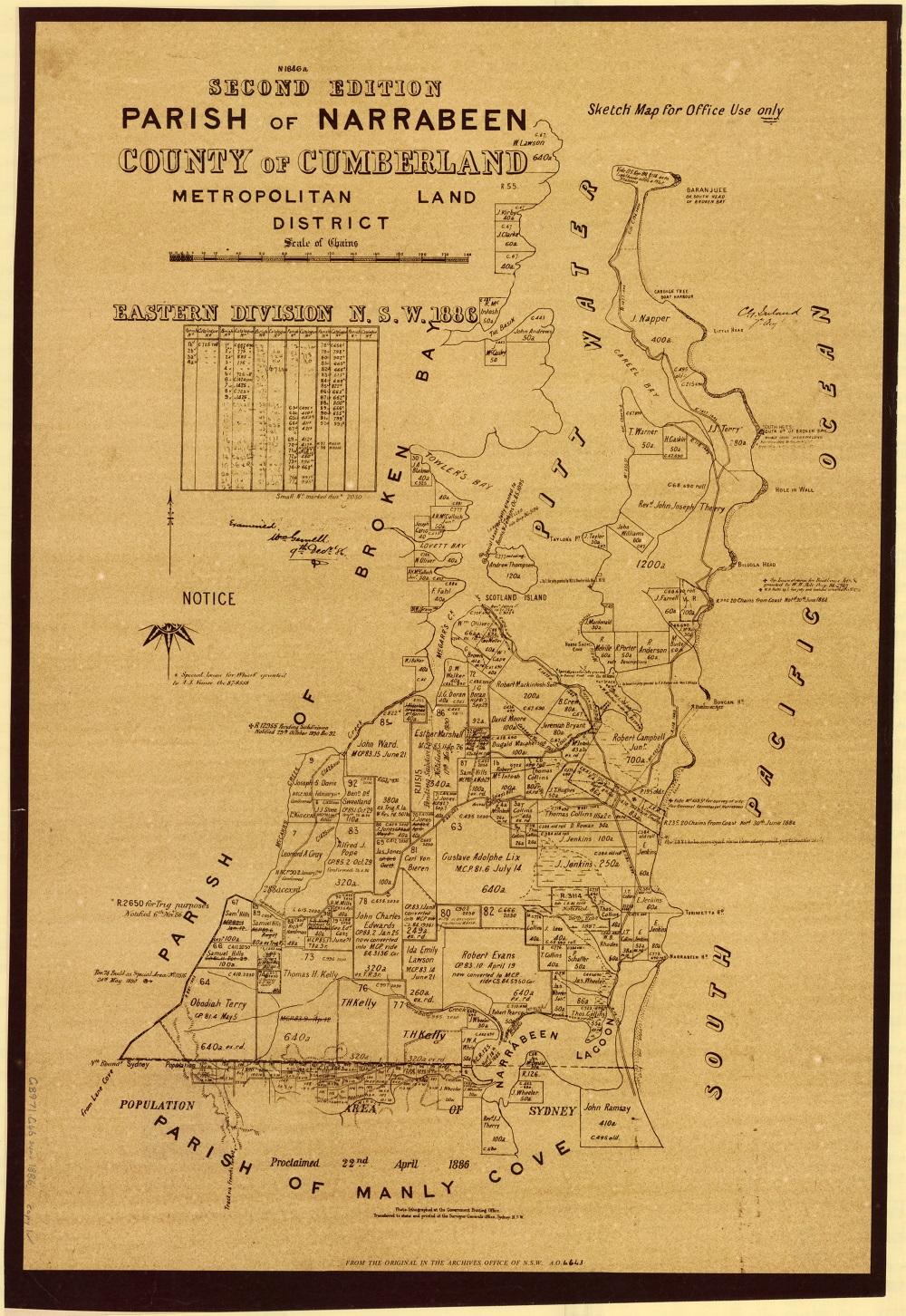
New South Wales. Department of Lands. (1886). Parish of Narrabeen, County of Cumberland Metropolitan Land District, Eastern Division N.S.W Retrieved from http://nla.gov.au/nla.obj-233833505
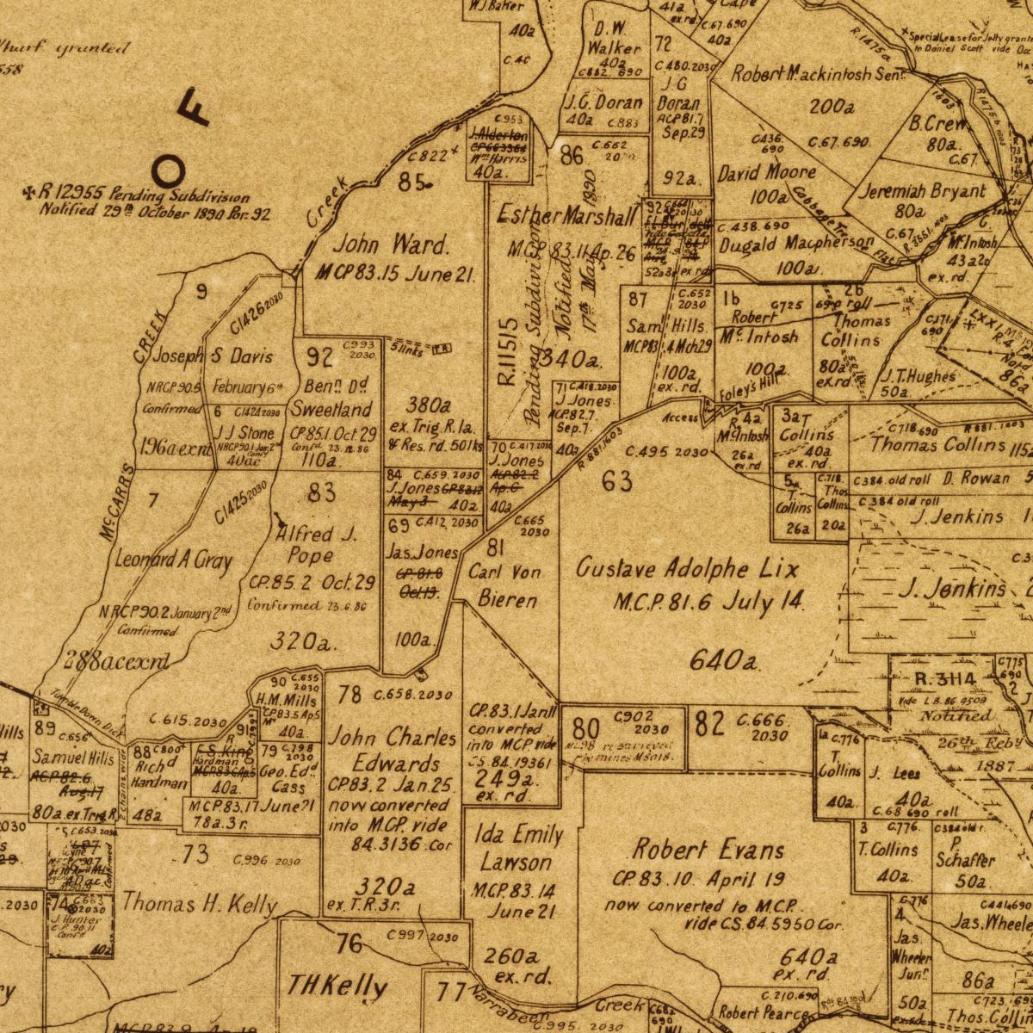
Above: New South Wales. Department of Lands. Parish of Narrabeen, County of Cumberland [cartographic material] : Metropolitan Land District, Eastern Division N.S.W. 1886. MAP G8971.G46 svar (Copy 1). Section from to show detail
Below this an enlargement from: : New South Wales. Department of Lands.Parish of Narrabeen, County of Cumberland ... N.S.W. [cartographic material] 1895. MAP F 173. all courtesy National Library of Australia. G M Frankland was brother to G J Frankland
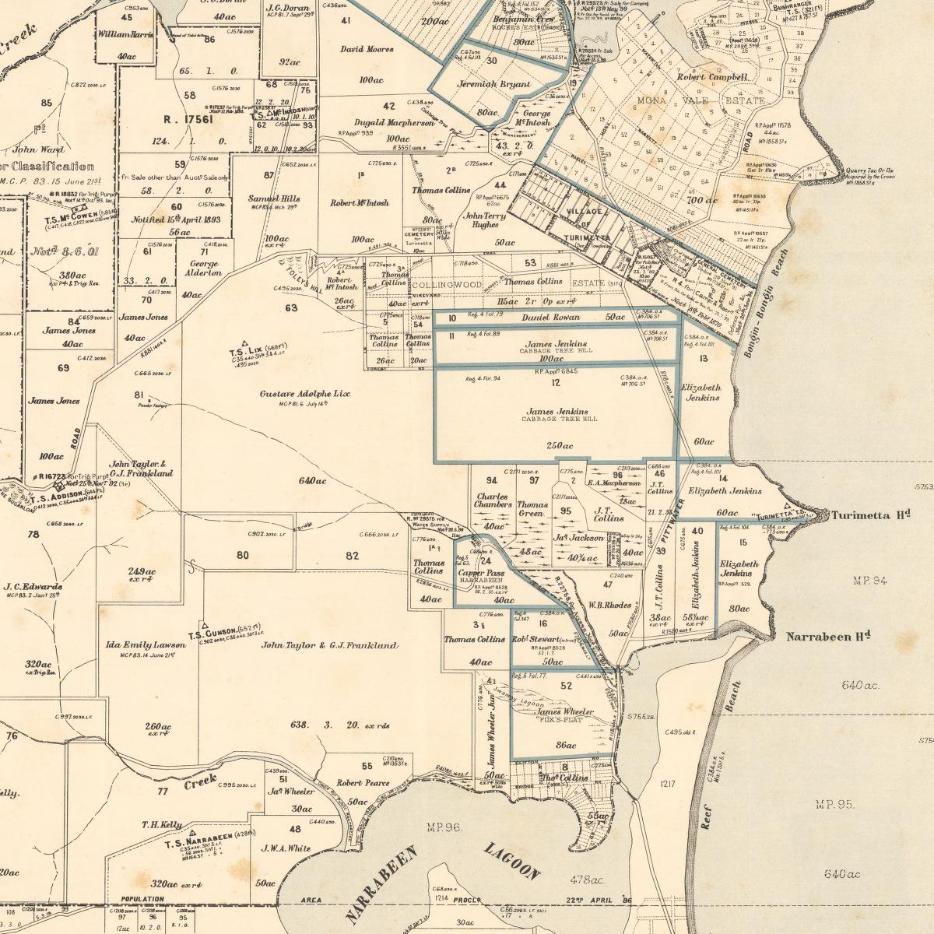
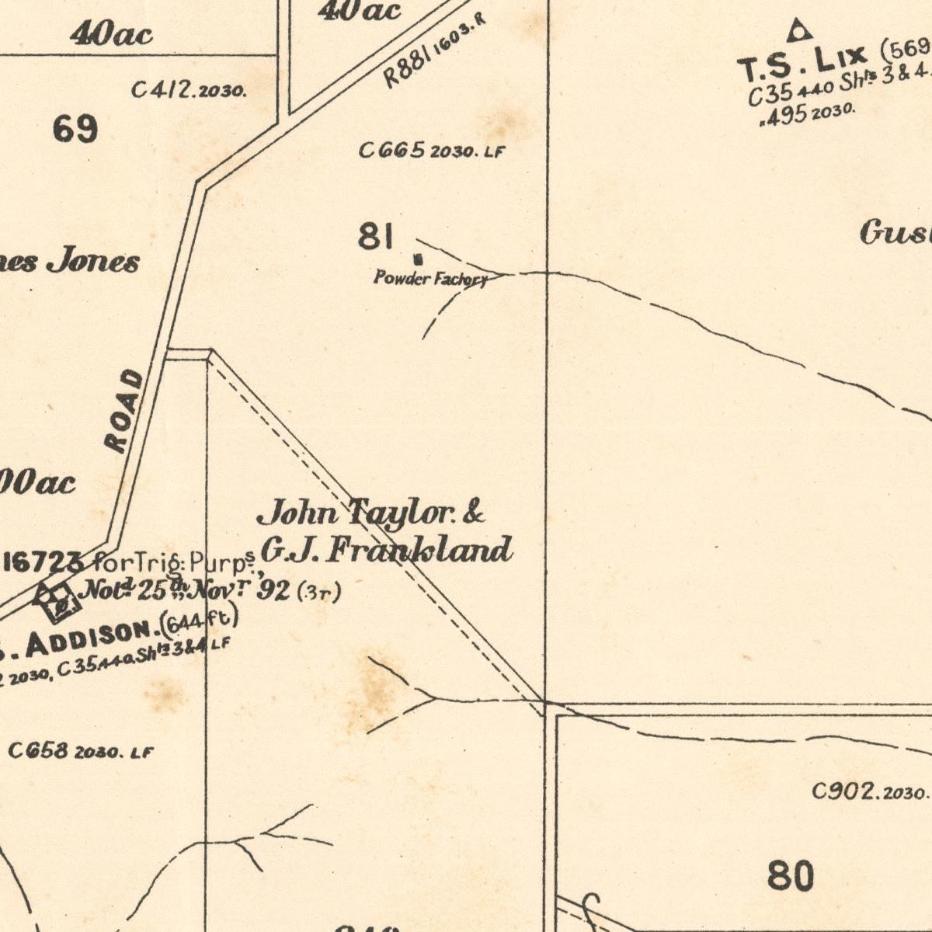
The Ingleside Powder Works and the lands of John Taylor and G J Frankland on one side and the lands of Gustave Adolphe Lix on the other are where the water courses the converge into Mullet creek were.
Gustave Adolphe Lix came out to Australia from France for the International Exhibitions in Sydney and Melbourne, then stayed on, is shown in possession of 640 acres where one of the origins of Mullet Creek flows towards Irrawong's waterfall and pond.
Among the passengers by the mail steamer Siam, which brought the Japanese Commissioner, were M. Gustave Lix and M. Bourdil, the former of whom is the commercial agent for the French exhibitors, and the latter a gentleman to whom has been entrusted the duty of fitting up the French Court and arranging the French exhibits. M. Lix was secretary to the French Commissions at the exhibitions of London, Vienna, and Philadelphia. The Exhibition. (1879, July 26). The Sydney Mail and New South Wales Advertiser (NSW : 1871 - 1912), p. 147. Retrieved from http://nla.gov.au/nla.news-article161870268
He may have been associated with the building of or cutting down trees for The Ingleside Powder Mill.
In a cancelled Land Map of 1905 the 640 acres of Warriewood that had been Gustave Lix land is now owned by J K Heydon. Born in or close to 1836, Monsieur Lix would have been around 50 years of age when his name was affixed to land in Warriewood in 1886, the same year Leon Houreaux, another French gentleman 'farmer' and timber cutter in Warriewood prior to then, applied for a publicans licence.
Lix 's land in Warriewood may have been where Leon Houreaux first came to Pittwater. Some sources state by March 1886 a bearded, 20-stone Frenchman named Leon Houreaux, occupied a hut in the Warriewood area and worked as a woodcutter. While he was doing this work he was also making plans to build a house of eight rooms:
NOTICE OF APPLICATION FOR A PUBLICAN'S CONDITIONAL LICENSE. I, LEON HOUREUX, of Narrabeen, Farmer, do hereby give notice that I desire to obtain, and will at the next Licensing Court to be held at Sydney on the 10th day of July next, apply for a certificate authorising the issue of a publican's conditional licence for a house to be erected at Narrabeen, and to contain eight rooms, exclusive of those required for the use of the family, set in conformity with the provisions of section SO of the Licensing Act of 1882. Dated the 18th day of June, 1885, Signature of applicant-LEON HOUREUX. Address-Farmer, Narrabeen. Advertising. (1885, June 22). The Sydney Morning Herald (NSW : 1842 - 1954), p. 2. Retrieved from http://nla.gov.au/nla.news-article28362579
Mr. Lix passed away in 1920 at Mount Druitt, aged 84.
The North End Of The Valley - Towards Mona Vale
Although the roads to this part of Pittwater came from the south in the Pittwater Road, and from the west in the road to Lane Cove, later known as the Mona Vale Road, the terrain was one for woodcutters and the track made for their wagons, while Narrabeen and the valley to its north, although close to a very popular Manly, was still accessed best by steamers going all the way up the coast and around Barrenjoey headland to disembark visitors at wharves on the Pittwater estuary.
The bridge across Narrabeen lagoon did not exist in 1880:
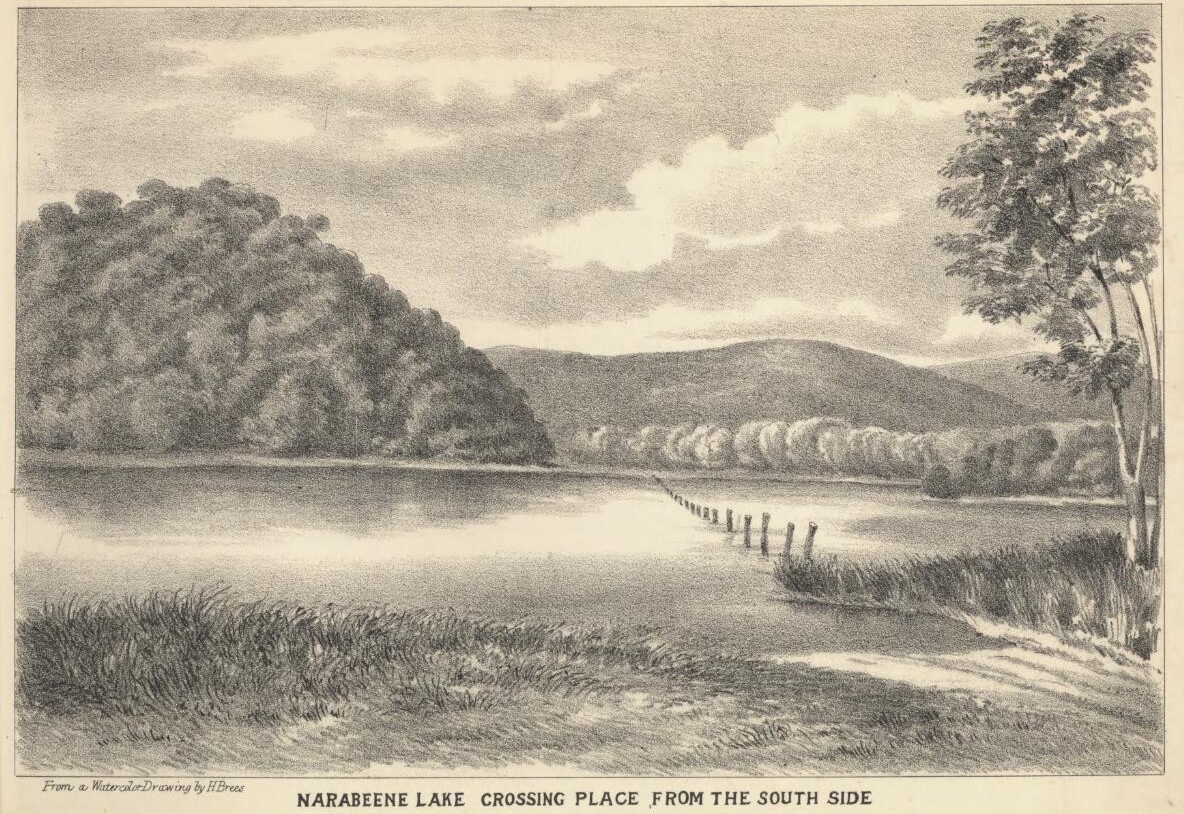
NARABEENE LAKE CROSSING PLACE FROM THE SOUTH SIDE
From: Brees, Harold & S.T. Leigh & Co & Mills, Pile & Gilchrist. (1880). The Pittwater and Hawkesbury Lakes album Retrieved from http://nla.gov.au/nla.obj-460123425
FOR many years a teak beam-one of the relics of the ill-fated Dunbar-has been jammed between the rocks at Narrabeen. It was recently extricated and taken to Bolton's farmhouse, where it may be seen bleached like deal on tho outside, but retaining its natural colour internally. NEWS OF THE DAY. (1880, August 27). The Sydney Morning Herald (NSW : 1842 - 1954), p. 5. Retrieved from http://nla.gov.au/nla.news-article13467015
There was talk about building a bridge:
NARRABEEN BRIDGE.
Mr. LACKEY, in reply to Mr. Furnell, stated that a sum had been noted for consideration of the Cabinet for the erection of a bridge across the Narrabeen lagoon. LEGISLATIVE ASSEMBLY. (1881, January 15). Australian Town and Country Journal (Sydney, NSW : 1870 - 1907), p. 13. Retrieved from http://nla.gov.au/nla.news-article70951884
And after a fair amount of talking and time later:
Mr LACKEY in answer to Mr Teece, said that tenders for a bridge over Narrabeen Lagoon, close to the present road, would be invited in two weeks. PARLIAMENT OF NEW SOUTH WALES. (1882, September 9). The Sydney Morning Herald (NSW : 1842 - 1954), p. 9. Retrieved from http://nla.gov.au/nla.news-article13526176

Narrabeen Manly - Pittwater Rd, Lane Cove Rd, [1881] Item No.: c050370239 , courtesy State Library of NSW, Narrabeen Subdivision Plans album - this is towards Mona Vale (then called the 'Village of Turimetta')
Department of Lands,
Sydney, 20th April, 1881.
RESERVES FROM SALE FOR RAILWAY AND OTHER PUBLIC PURPOSES.
HIS Excellency the Governor, with the advice of the Executive Council, directs it to be notified that in pursuance of the provisions of the 4th section of the Crown Lands Alienation Act of 1861, the land specified in the Schedule appended hereto shall be reserved from sale for railway and other public purposes.
JAMES HOSKINS.
No. 63. County of Cumberland, parishes of Broken Bay, Narrabeen, and Gordon, area about 20,000 acres. The Crown Lands within the following boundaries: Commencing on the right bank of Cowan Creek, at a point where the north extremity of the west boundary of reserve No. 51, notified 21st June, 1880, meets that creek; thence bounded by the west boundary of that reserve south to its south-west corner thence by the south and east boundaries of that reserve east and north to the south boundary of reserve No. 55, notified 21st June, 1880; thence by part of that south boundary east to the west boundary of John Clark's 100 acres thence by part of the west and south boundaries of that portion south and east to Pittwater; thence by Pittwater southerly to the north-east corner of Robert M'Intosh's 50 acres; thence by the north boundary of that portion and the north boundary of the reserve for public recreation, dedicated 7th January, 1879, west, to the north-west corner of that reserve; thence by the west boundary of that reserve south to its south-west corner, and by the south boundary of that reserve and the south boundary of James M'Cauley's 50 acres east to the south-east corner of that portion; thence by part of the east boundary of that portion north to the south boundary of John Andrews' 50 acres, and by that south boundary east to Pittwater; thence by Pittwater southerly to M'Carr's Creek, and by that creek upwards to its head; thence a line southerly, forming a west boundary of the parish of Narrabeen, to the road from Lane Cove to Bulgola Head; thence by that road south-westerly to the north boundary of the reserve on account of population for City of Sydney, as per Census of 1871; thence by part of that north boundary westerly to the east boundary of reserve No. 62, notified 23rd March, 1881, on Cowan Creek ; and thence by that creek downwards following its right bank, to the point of commencement. [Ms. 81-6,401]
No. 64. County of Cumberland, parishes of Marra Marra and Berowra, area about 26,000 acres. The Crown Lands within the following boundaries: Commencing on the road from Wiseman's Ferry to Parramatta, at a point where the northern boundary of George Acre's 1,500 acres, situated in the parishes of North Colah, Nelson, and Berowra, meets the north-eastern side of that road; thence bounded by that road in a northwesterly direction about 6£ miles in a direct line to the top of the 'range forming the boundaries between the parishes of Frederick and Marra Marra; thence bounded by that range and a small gully forming that parish boundary in a north-easterlv direction to the right bank of the Hawkesbury River; and thence by that bank of that river downwards to the junction of Berowra Creek with that river at Fisherman's Point; and by the left bank of Berowra Creek upwards to a small gully which forms part of the boundary dividing the parishes of Berowra and North Colah; thence by that gully upwards to a point east from the point of commencement; tlience by a line partly forming part of the north boundary of George Acre's 1,500 acres aforesaid westerly, to the point of commencement. [Ms. 81-6,401]RESERVES FROM SALE FOR RAILWAY AND OTHER PUBLIC PURPOSES. (1881, April 20). New South Wales Government Gazette (Sydney, NSW : 1832 - 1900), p. 2275. Retrieved from http://nla.gov.au/nla.news-article224294826
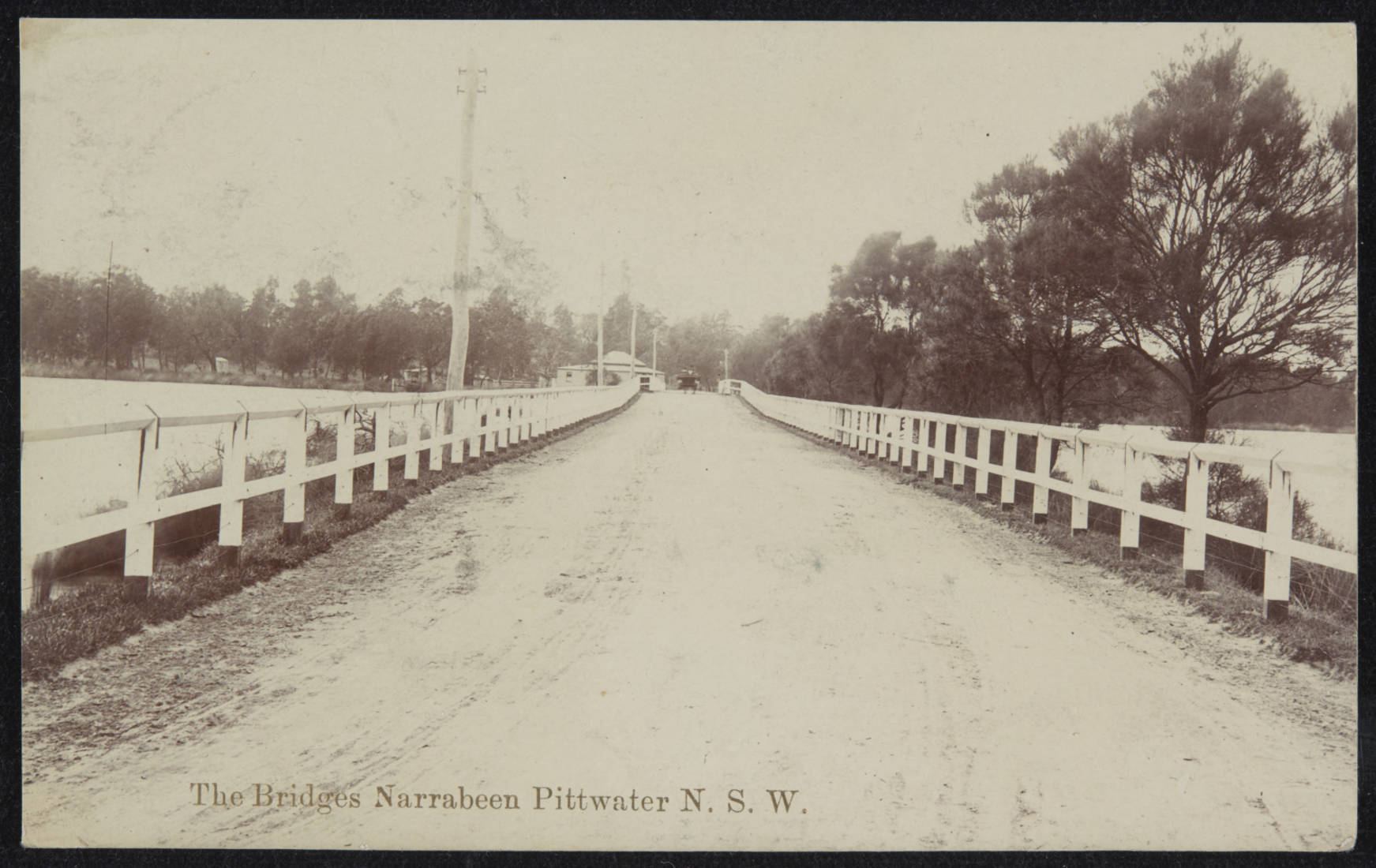





Access meant the large blocks of acreage may attract investors. David Moore, who also had a 100 acre holding sold as the 'Narrabeen Heights Estate' on the way to Collaroy, appears among the earlier sales, as does the Jenkins 350 acre holding in 1886:
MANLY COVE, close to the famous Narrabeen Lagoon.
An, original early selection grant of 100 ACRES, shown on the county map In name of David Moore.
This grant is famed for the quality of its soil, and on It is some remarkably fine timber. Seeing the great attraction of MANLY BEACH and its surroundings, especially in this direction, and the consequent largo enhancement of value of ALL ELIGIBLE LANDS, the sale of this largo block will afford a good chance to SPECULATORS and OTHERS to acquire at a small cost an extensive area that in a very few years will discover to them AN ENORMOUS PROFIT by subdivision into smaller parcels.
The Immediate district around is the delight of all holiday ramblers and excursionists, and doubtless before long numerous population will be settled in this part.
TERMS will ho VERY EASY.
RICHARDSON and WRENCH have received instructions to sell by public auction, at the Rooms, Pitt-street, on FRIDAY, 31st JULY, at 11 o'clock,
The above 100 acres Manly Cove, D. Moore's grant, near Narrabeen Lagoon. Plan on view. Advertising (1885, July 25). The Sydney Morning Herald (NSW : 1842 - 1954), p. 17. Retrieved from http://nla.gov.au/nla.news-article13593914
In the Supreme Court of New South Wales.
IN INSOLVENCY.
In the Insolvent; Estate of James Wheeler, of Narrabeen, near Manly, farmer.
TAKE NOTICE that on the twenty-eighth day of May instant, at 11 o'clock in the forenoon, or as soon thereafter as the course of business will permit, this Honorable Court will be moved that the estate of the abovenamed insolvent be released from sequestration, upon the grounds that the whole of the debts proved in the estate and all claims made by or on behalf of the Official Assignee have been paid and satisfied in full, and on the further grounds disclosed by the affidavit of the insolvent filed herein.—Dated this 13th day of May, 1885.
A. H. M'CULLOCH, Attorney for Insolvent. IN INSOLVENCY. (1885, May 15). New South Wales Government Gazette (Sydney, NSW : 1832 - 1900), p. 3200. Retrieved from http://nla.gov.au/nla.news-article221692340
New South Wales, to wit.
I, Augustus Loftus, Governor.
Proclamation by His Excellency The Right Honorable Lord Augustus William Frederick Spencer Loftus, Knight Grand Cross of the Most Honorable Order of the Bath, a Member of Her Majesty's Most Honorable Privy Council, Governor and Commander-in-Chief of the Colony of New South Wales, and its Dependencies.
WHERE AS the Commissioners of Fisheries for New South Wales have recommended that the waters of Curl Curl, Deewhy, and Narrabeen Lagoons, in the county of Cumberland, and the waters of Tom Thumb Lagoon and Illawarra Lake, in the county of Camden, be exempted from net fishing : Now, therefore, I, Lord Augustus William Frederick Spencer Loftus, the Governor of the Colony of New South Wales in pursuance of the provisions of the Fisheries Act, 1881, and with the advice of the Executive Council, do, by this my proclamation, declare that the aforesaid waters shall be exempted from net fishing for the period of twelve months from the 1st proximo.
Given under my Hand and Seal, at Government House, Sydney, this thirtieth day of September, in the year of our Lord one thousand eight hundred and eighty-five, and in the forty-ninth year of Her Majesty's Reign.
By His Excellency's Command,
ALEX. STUART. GOD SAVE THE QUEEN !Government Gazette Proclamations and Legislation (1885, September 30). New South Wales Government Gazette (Sydney, NSW : 1832 - 1900), p. 6437. Retrieved from http://nla.gov.au/nla.news-article219878737
Department of Lands,
Sydney, 18th November, 1885.
RESERVES FROM SALE FOR CAMPING AND PUBLIC RECREATION.
HIS Excellency the Lieutenant-Governor, with the advice of the Executive Council, directs it to be notified that in pursuance of the provisions of the 101st section of the Crown Lands Act of 1884, the land specified in the Schedule appended hereto shall be reserved from sale for camping and public recreation, and is hereby reserved accordingly.
JOSEPH P. ABBOTT.
No. 126. County of Cumberland, parish of Manly Cove, area about 50 acres. The Crown Lands within the following boundaries: Commencing at the water's edge, on the eastern side of Narrabeen Lagoon, at a point west of the north-west corner of James Wheelers 50 acres; thence by a line east to the north-west corner of that portion and its north boundary and its prolongation east to the west boundary of John Ramsay's 410 acres grant, thence north by part of that boundary to the waters of Narrabeen Lagoon; thence by the water's edge of that lagoon westerly to the south-eastern corner of James McDonald's 30-acre grant thence by the south boundary of that portion and its prolongation west to the water's edge of the aforesaid lagoon; thence by the water's edge of that lagoon, to the point of commencement, [Ms* 85-17,154]
No. 125 of the county of Cumberland, parish of Narrabeen, area 12 acres. The Crown Lands within the following boundaries: Commencing at the south-east corner of J. W. A. White's, now Josiah Taylor's 60-acre grant, at high-water mark of Narrabeen Lagoon ; and bounded on the north by the south boundary of that grant, being a line bearing west about 9 chains 33 links} thence on the west by a line bearing south to the left bank of Wheeler's Creek; thence on the south by the left bank of that creek downwards to the Narrabeen Lagoon} thence on the east by high-water mark of Narrabeen Lagoon to the point of commencement. RESERVES FROM SALE FOR CAMPING AND PUBLIC RECREATION. (1885, November 18). New South Wales Government Gazette (Sydney, NSW : 1832 - 1900), p. 7445. Retrieved from http://nla.gov.au/nla.news-article223763666
Department of Mines,
Sydney, 20th November, 1885.
APPLICATION received in the Department of Mines, for permission to mine under roads, &c., &c., under the Mining Act of 1874, section 28.
GEO. THORNTON.
Date of Application. 14 Nov., 1885
Date of Receipt of Application. 14. Nov., 1885
Name of Applicant
J. Coghlan, T. M. Dalveen, W. T. Coonan.
Description of Land applied for. Part of Pacific Ocean and Narrabeen Lagoon, county of Cumberland, parish of Narrabeen. Extent. a. r. p. 1,730 o o Purpose for which Land is to be used. To mine for coal. Government Gazette Notices (1885, December 4). New South Wales Government Gazette (Sydney, NSW : 1832 - 1900), p. 7811. Retrieved from http://nla.gov.au/nla.news-article223765068
Shelagh Champion, OAM, B.A.(Lib.Sc.) and George Champion, OAM, Dip.Ed.Admin, in their Profiles of the Pioneers in Manly, Warringah and Pittwater (2013 Revision) state that W.B. Rhodes, of Wellington, New Zealand, merchant, sold his land, the site of the present Narrabeen High School, to Thomas Collins for £50 on 5 September 1849. [LTO Book 40 No.940]
Thomas and Lavinia had four children: Mary (b.1848), John Thomas (b.about 1852), Peter (b.about 1856), and Samuel. Frank Poyner, Lavinia’s uncle, was living with the Collins on their farm when he and Thomas Collins were suspected of murdering David Foley, on 8 November 1849. (See The Murder of David Foley), by S. and G. Champion.
Collins received other land grants by purchase in the Mona Vale area, on both sides of Mona Vale Road, in 1858 and 1859:
- 115 acres 2r. Advertised as Lot 1 on 22 November 1858 Purchased by Thomas Collins on 29 December 1858 for £115-10-0 Granted to Thomas Collins on 13 May 1859 [LTO SN150/680]
- 20 acres Advertised as Lot 2 on 22 November 1858 Purchased by Thomas Collins on 29 December 1858 for £65 Granted to Thomas Collins on 13 May 1859 [LTO SN150/679]
- 80 acres Advertised as Lot 2 on 21 February 1859 Purchased by Thomas Collins on 30 March 1859 for £80 Granted to Thomas Collins on 4 July 1859 [LTO SN152/1101]
- 40 acres Advertised as Lot 3 on 21 February 1859 Purchased by Thomas Collins on 30 March 1859 for £40 Granted to Thomas Collins on 4 July 1859 [LTO SN152/1102]
- 26 acres Advertised as Lot 5 on 21 February 1859 Purchased by Thomas Collins on 30 March 1859 for £39 Granted to Thomas Collins on 4 July 1859 [LTO SN152/1103] 55 acres Advertised as Lot 8 on 21 February 1859 Purchased by Thomas Collins on 2 May 1859 for £116-6-6 Granted to Thomas Collins on 4 July 1859 [LTO SN155/1864]
In 1861 Charles de Boos (My Holiday), with his friends Nat and Tom, took a walking holiday northwards from Manly. They had just crossed Narrabeen Lagoon in company with a local guide, who happened to be a sailor (probably Frank Poyner).
“ ‘Whose place was this?’ ‘This! - why this was Collins’.’ And now we approached a tender point - one upon which we all felt, I won’t say tenderly, because we didn’t, but ravenously. ‘Didn’t he know where we could beg, borrow or steal a piece of meat, salt or fresh?’ He shook his head doubtingly. We had evidently given him a puzzler. Ducks, wallobi or pigeons could be mapped out with a wave of the hand but the location of meat, which I had always deemed an indispensable requisite to man’s carnivorous nature was not so readily to be pointed out. At last he said ‘You see meat is rather a scarce article in these parts. They have to bring it all the way from Sydney, for they can’t always get it at Manly, and in consequence, they often run out of it. It’s hard to say where you’ll get any. But,’ and here he brightened up a bit, and, of course, our countenances which had got ruefully long during this speech, brightened up a little also, ‘- come up to Collins’. If he’s got any he’ll let you have some.’ ‘Is this Collins’ place here?’ ‘Yes,’ answered the sailor, ‘he’s a very decent fellow too.’ And so to Collins’, under the guidance of our nautical acquaintance we determined to go, and with something like hope in our hearts we shouldered our loads. We entered the paddock by the slip rails, and followed the cart track up to the house. When within fifty yards of this, another fence occurred, with a slip rail also, that had just been let down to allow the passage of some five and twenty head of small, ill-bred cattle, mostly milkers, that were being driven through by two children - a girl and a boy; the one about eight, and the other perhaps seven years old. The little creatures were only scantily clad, and were bare-footed and bare-legged, the latter being more prominent in the girl’s case, from her having (since her frock had been made for her) taken one of those periodical shoots upward that children are accustomed to make, whereby the lower part of the leg protruded very much more beyond the frock than had been originally intended. They were two pretty interesting children, although they stood gaping at us with that bashful, halfwondering, half-spoony look so often seen on the faces of youngsters who are unaccustomed to strangers. The boy simply stood in open-mouthed astonishment, whilst the girl assumed an attitude of a most remarkable kind, and one perfectly emblematical of Australian mauvaise honte. Raising the left leg, she rested the left foot against the inside of the right knee, the left knee being thus projected sideways neatly at right angles, the body being meanwhile poised upon the right foot only. This attitude, not unlike that of a goose on a dull day, she maintained, steady as a rock, although upon one foot only, until we had passed. A few words passed between the children and our guide in reference to ‘Ball’ who hadn’t come home, and to ‘Daisy’ who had calved, and then we caught sight of a tall, stalwart, but not very smart-moving man, who, with a bucket of milk in his hand, was coming out of the stockyard, where he had evidently just finished his morning’s work of milking. This was our man, the padrone of the establishment, upon the plenitude or emptiness of whose harness cask, our fate depended. ‘At him, Tom,’ cried Nat and I, for we knew that if negotiation was to be carried on successfully, it would be by our companion. Cautiously Tom attacked him with the weather and the season, and then with the stages and distances on our route, into which Tom with his usual judgment managed to introduce some facetious small talk with a view of making a favourable impression. At last, fancying he had gained some ground he put the question, ‘Oh! by the by,’ as if he had forgotten it till then, ‘can you sell us a piece of salt meat; we have unluckily come away from Manly without any.’ We listened breathlessly for the reply, and Nat even turned pale with anxiety. ‘No,’ at last he said, ‘I’ve been out of it these three days, and my missus has gone to Sydney to see the doctor and get some.’ Here we were down again. Our nautical guide, who seemed to take considerable interest in our proceedings, now came up, and told us he was sure that Collins had none, or else he would not have denied it to us. ‘But what?’ asked I, ‘did he mean by saying that his wife had gone to the doctor’s to get some.’ The seaman looked at me with something like contempt. ‘Why, you don’t suppose as she gets corned beef at the doctor’s?’ he asked. ‘Well, I thought not, and that made me wonder.’ ‘Wonder!’ said he, ‘there ain’t nothing wonderful in a woman wanting the doctor. Hanged if I think women are ever happy unless they are running after the doctor.’ This was a physiological fact that I had never noticed, and I told him so. ‘Well,’ he replied, ‘you would notice it if you lived hereaway; for you would see that all the women about wanted the doctor every fortnight or so.’ ‘Dear me,’ said I, ‘it must be a very unhealthy neighbourhood.’ ‘Not at all,’ he answered, ‘but’ - and here he sank his voice mysteriously, and winked knowingly at Tom – ‘it’s my opinion that it’s all ribbons!’ I didn’t see how ribbons made the doctor necessary, but of course Tom did, and roared with laughter. Nat looked at Nauticus for an explanation. ‘Why, don’t you see,’ and he appeared disgusted at our slowness of perception, ‘a fortnight of the bush tires ‛em, and they want to see what’s going on in Sydney, and what bargins is to be had in ribbons, and so a little cough, or a headache, or a queerness or something or other, and then they must see the doctor.’ ... This important question settled, he asked us if we felt inclined to try the swamp road [through present Warriewood wetlands] - we might get a duck, and he would pilot us. Of course we did; ducks were the very object of our ambition. He didn’t know how the road was after the late rains, but would ask. He did ask, and Collins told him it was up to the waist in water. We had had quite enough that morning of water up to the knee [crossing Narrabeen Lagoon] and didn’t feel inclined to dip any deeper in it that day; and not even the prospect of roast duck could induce Nat or me to undergo such an immersion. We had no alternative then, but to fall back on the road we had left, and this we did by crossing the paddock diagonally, thus reaching the corner of the fence, after the perilous passage of a deep, muddy creek [Mullet Creek], by means of a tree thrown across it, and forming a very precarious bridge, not from any want of solidity, but from the slippery nature of the stem.”
Collins’ 55 acres, just north of the bridge over Narrabeen Lagoon, on the western side of Pittwater Road, was conveyed to F.C. Hedemann on 26 November 1883 for £460. [LTO Book 280 No. 742] The bridge was constructed at this time, which enhanced the value of the land.
Collins’ five grants near Mona Vale Road were conveyed to F.C. Hedemann for a total of £1990-10-0, being £20 deposit, previously paid at Collins’ Narrabeen house at 10.30 a.m. on 7 April 1883 [LTO Book 280 No.486], and £1970-10-0 on 3 December 1883. [LTO Book 280 No. 741] - Collingwood Estate
A Sale Note was also made on 3 December 1883, Hedemann agreeing to purchase J.T. Hughes’ grant on Mona Vale Road for £350, “Mr. Collins to endeavour to find the title deeds within two years”, or the sale would be void. [LTO Book 280 No.487] The sale went ahead on 13 November 1885. [LTO Book 328 No.171] - Collingwood Estate
Collins sold Rhodes’ grant, the site of Narrabeen High School, to Manly builder James Blair on 30 September 1886, for £900. [LTO Book 349 No.730]
Collins contracted to sell Lees’ grant, which formed part of his own farm at North Narrabeen, to John George Cousins of Manly for £30 per acre on 3 May 1886. [LTO Book 337 Nos 584] Cousins paid a deposit of £250 but the contract was cancelled on 15 June 1891, Cousins then owing Collins £233-9-5 for interest and his costs. [LTO Book 482 No.376] Collins applied to have two grants (Schaffer’s, granted in the name of Robert Stewart, and Lees’, granted in the name of Capper Pass) brought under the Real Property Act, and a Certificate of Title was issued to him on 15 June 1892. [LTO Vol.1060 Fol.211]
The farm was sold to Edward Augustus Macpherson on 20 March 1895. It was finally subdivided and sold by Sir Allen Taylor, timber merchant, in 1912.
Thomas died at his Manly home, “Addiscombe” on 6 June 1897. He was 82 years old, although his gravestone in Manly cemetery wrongly states that he was aged 94. [2.]
Jenkins 350 acres in Warriewood Valley is shown on this section - he also purchased Daniel Rowan's 50 acre land grant - this also shows the Collingwood estate:
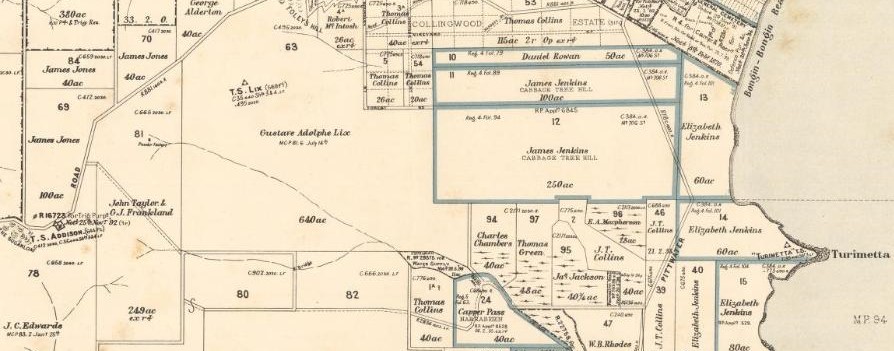
Land Grants - NARRABEEN.
1. Robert Anderson, 60, sixty acres; bounded on the north by a line east 25 chains; on the east by a line south 24 chains; on the south by a line west 10 degrees south 20 chains; and on the west by a line north 28 chains-promised by Governor Macquarie on the10th September, 1818; Quit rent, 1s. sterling per annum, commencing 1st January, 1827.
2. Richard Porter, 50, fifty acres; bounded on the north by a line west 17 chains, commencing at Ander-sons north west corner; on the west by a line south 42 chains to Pitt Water; on the south by a line east 10 degrees north 13 chains; and on the east by Ander-son's farm, bearing north 23 chains—promised by Governor Macquarie on the 16th January, 1816; Quit rent, 1s. sterling per annum, commencing 1st January, 1827.
3. Robert Melville, 60, sixty acres; bounded on the east by a line north 24 chains, commencing at Porter's south west corner; on the north by a line west 32 chains; and on the west and south by Pittwater.—Quit rent, 1s. sterling per annum, commencing 1stJanuary, 1827.
4. Alexander McDonald, 60, sixty acres bounded on the north by a line west 20 degrees north 20 chains, commencing at Campbell's south east corner ; on the west by a line south chains; on the south by a line east 16 chains; and on the east by the sea coast—promised by Governor Macquarie on the 30th October,1813; Quit rent. 1s. sterling per annum, commencing 1st January, 1827.
5. Alexander McDonald, 60, sixty acres; bounded on the west by a line south 20 chains 90 links, commencing at Jenkins' south east corner; on the south by a line east 44 chains to Narrabeen Head; on the east bv the sea coast; and on the north by a line west 16 chains—promised by Governor Macquarie on the 31st March, 1821; Quit rent, 1s. sterling per annum, commencing 1st January, 1827.
6. Alexander McDonald, 80, eighty acres; bounded on the east by the sea coast, commencing at Narrabeen Head; on the south by the entrance into the Narrabeen Lagoon; on the west by a line north 42 chains; and on the north by 34 chains of his sixty acres farm, bearing west to Narrabeen Head—promised by Governor Macquarie on the 16th January, 1816;Quit rent, 1s. sterling per annum, commencing 1st January, 1827.
7. James Jenkins, 100, one hundred acres; bounded on the north by a line west 82 chains, commencing at Rowan’s south east corner; on the west by a line south 13 chains; on the south by a line east 82 chains; and on the east by 13 chains of Macdonald—promised by Sir Thomas Brisbane on the 17th August, 1824; Quit rent, 15s. sterling per annum, commencing 1st January, 1831.
8. James Jenkins, 250, two hundred and fifty acres; bounded on the west by a line south 34 chains, commencing at the southwest corner of his 100 acre grant, on the south by a line east 82 chains; on the east by a line north 31 chains; and on the north by his 100acre grant—promised by Sir Thomas Brisbane on the 6th April, 1825; Quit rent, £1 17s. 6d. sterling per annum, commencing 1st January, 1831.
9. Philip Chaffer, 50, fifty acres; bounded on the north by a line west 22 chains 70 links; on the west by a line south 21 chains; on the south by a line east 30 chains; and on the east by Narrabeen Swamp —promised by Governor Macquarie on the 16th January, 1816; Quit rent. 1s. sterling per annum, commencing 1st January, 1827. Government Notice. (1831, October 3). The Sydney Herald(NSW : 1831 - 1842), p. 1 Supplement: Supplement to the Sydney Herald.. Retrieved from http://nla.gov.au/nla.news-article12843563
The McDonald land grants, on the site of Sheep Station Hill and along the Warriewood beachfront to Mona Vale hospital, were conveyed to James Jenkin's daughter Elizabeth in 1831.
James Jenkins died on January 27th, 1835, leaving his estate to his widow Elizabeth (nee Saunders) and their eight children; Elizabeth (b.1816), Mary (b.1818), William (b.1819 or 20), James (b.1822), Martha (b.1826), Philip (b.1829), Ann (b.1831) and John Henry (b.1835). Elizabeth remarried a widower but died soon after her marriage, and he followed her soon after:
On the 25th instant, at St. Philip's Church, Sydney, Mr. William Burnicle, of Balmain, to Mrs. Elizabeth Jenkins, Kent-street North. Family Notices. (1843, April 26). The Sydney Morning Herald(NSW : 1842 - 1954), p. 3. Retrieved from http://nla.gov.au/nla.news-article12417243
DEATH. On the 22nd of September, at her residence, Balmain, after a lingering but painful illness, Elizabeth, the wife of William Burnicle, aged forty-six years. Family Notices. (1841, September 25). The Sydney Herald(NSW : 1831 - 1842), p. 3. Retrieved from http://nla.gov.au/nla.news-article12871305
At his residence, Kent-street North, on the 12th instant, Mr. William Burnicle, shipwright, in his 49th year, much regretted by a large circle of friends. Family Notices. (1846, February 13). The Sydney Morning Herald (NSW : 1842 - 1954), p. 3. Retrieved from http://nla.gov.au/nla.news-article12885258
Worth noting is the government's bringing the below under their jurisdiction during these 1886 land sales:
Department of Lands,
Sydney, 6th November, 1886.
RESERVE FROM SALE FOR TRIGONOMETRICAL PURPOSES.
HIS Excellency the Governor, with the advice of the Executive Council, directs it to be notified that, in pursuance of the provisions of the 101st section of the Crown Lands Act of 1884, the laud specified in the Schedule appended hereto shall be reserved from sale for trigonometrical purposes, and is hereby reserved accordingly.
HENRY COPELAND.
EASTERN DIVISION.
Land District of Sydney,
No. 2,650. County of Cumberland, parish of Narrabeen, area 1 acre 2 roods. The Crown Lands within the following boundaries : Commencing on the south-western side of a road forming the north-eastern boundary of portions 67 and 69, at a stake marked broad-arrow, bearing south 59 degrees 21 minutes east, and distant 1 chain 76 links from the north-east corner of portion 67 ; and bounded thence on the north-west by a line bearing south 9 degrees 30 minutes west 4 chains 62 links; thence on the south-west by a line bearing south 80 degrees 30 minutes east 4 chains 5 links ; thence on the southeast by a line bearing north 9 degrees 30 minutes east 3 chains and 5 links to the south-western side of the aforementioned road ; and thence on the north-east by that side of that road bearing north 59 degrees 21 minutes west 4 chains 34 1/2 links, to the point of commencement,—shown on plan catalogued C. 903-2,030. RESERVE FROM SALE FOR TRIGONOMETRICAL PURPOSES. (1886, November 6). New South Wales Government Gazette (Sydney, NSW : 1832 - 1900), p. 7743. Retrieved from http://nla.gov.au/nla.news-article223778833
Just north of the MacPerson's holding, as seen on the top rim of their Deposited Plan was:

Plan shewing subdivision of 115 acres 2rds (by deed), John Hope, Balmain Surveyor, surveyed 27th of March 1885. Parish of Narrabeen - The Property of F. C. Hedemann. Item No.: c050370068
Collingwood, meaning "wood of disputed ownership" (from Middle English calenge ‘dispute’, ‘challenge’). In this instance, perhaps a reference to Thomas Collins, the owner prior to Frederick Caesar Hedemann.


Richardson & Wrench & Balmain, John Hope & John Woods & Co. (February 12th 1886). Collingwood Estate, Parish of Narrabeen, a few miles from Manly, at the corner of Pittwater Road & Lane Cove Road 30 choice blocks from 3 to 7 acres each : at the rooms Pitt St., Friday, 12th Febry. 1886, at 11.30 Retrieved from http://nla.gov.au/nla.obj-230339763 - and section from showing Herbert Street and Emma Street.
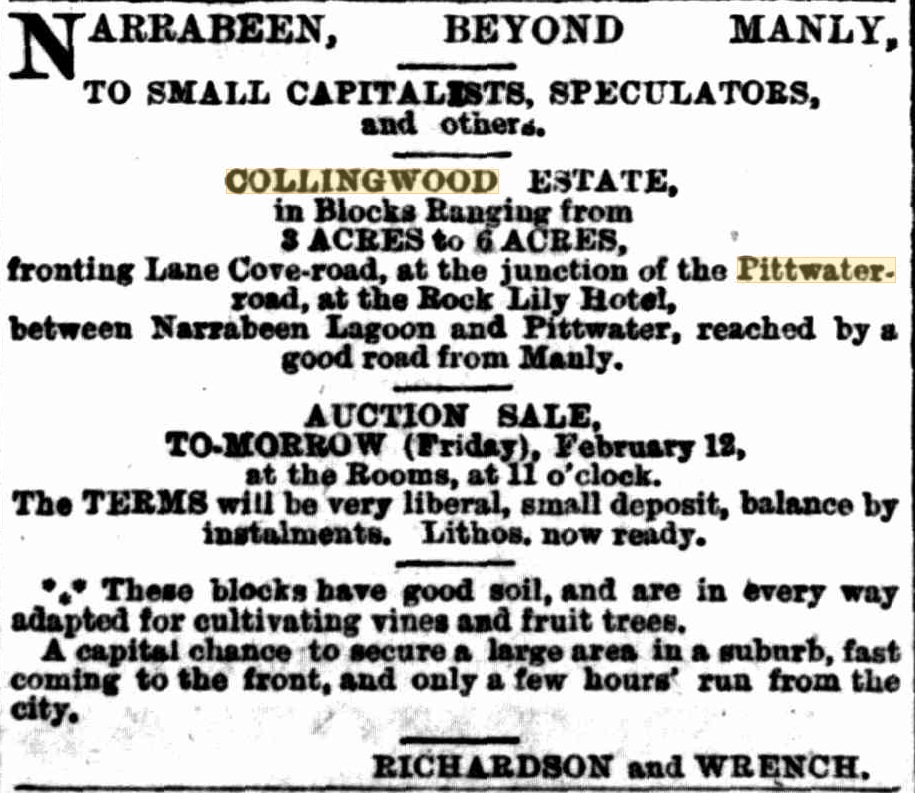
Advertising (1886, February 11). Evening News (Sydney, NSW : 1869 - 1931), p. 8. Retrieved from http://nla.gov.au/nla.news-article111184143
PROPERTY SALES.
Messrs, Hardie and Gorman report having sold by public auction and private contract, during the week, the following properties: ...Mr Phillips, block of land at Narrabeen 53a 2r in area, for the sum of £1 per acre £53 10s-Mr Inglis, Pittwater, block of land, 6a 1r 2p In area being lot 7a of villa sites in Pittwater Estate, for £60 ...PROPERTY SALES. (1886, March 20). The Sydney Morning Herald (NSW : 1842 - 1954), p. 15. Retrieved from http://nla.gov.au/nla.news-article13614719
NOTICE UNDER REAL PROPERTY ACT.
APPLICATION'S having been made to bring the lands hereunder described under the provisions of the Real Property Act, Certificates of Indefeasible Title will issue, unless Caveats be lodged in Form B of the said Act, on or before the date named opposite each case respectively.
No. 6,571. Narrabeen, 107 acres, parish Manly Cove, comprises the land granted as 100 acres to D. Moores. Applicant John Wetherill. Caveats to be lodged by May 6, 1886
NOTICE UNDER REAL PROPERTY ACT. (1886, April 2). New South Wales Government Gazette (Sydney, NSW : 1832 - 1900), p. 2418. Retrieved from http://nla.gov.au/nla.news-article227667518
Frederick Caesar Hedemann was a shipowner who imported goods from Fiji and also traded goods to and from Europe. He and his brother, Ferdinand Hugo, were merchants, with premises at 14 Bond street, in Sydney. The company formed under the name Hedemann & Co. and by led by Hedemanns younger brother Ferdinand Hugo, at Fiji was one of many interests:
KEEN'S UNBREAKABLE SADDLE COMPANY, Limited,
Referring to an advertisement in the Sydney Morning Herald we hereby give NOTICE that we hale PURCHASED the SOLE RIGHT to the above for New South Wales.
For Keen's Unbreakable saddle Company, Limited.
F. C. HEDEMANN ( Trustees for the
L. C. HENDERSON ( Company.)
245, Castlereagh-street.
KEEN'S PATENT TOR UNBREAKABLE SADDLE for Germany has been purchased, and on behalf of the purchaser-, we CAUTION anyone against negotiating for same without our authority.
F. C. HEDEMANN ) Trustees for
L. C. HENDERSON ( Purchasers ). Advertising (1889, March 29). The Sydney Morning Herald (NSW : 1842 - 1954), p. 2. Retrieved from http://nla.gov.au/nla.news-article13719137
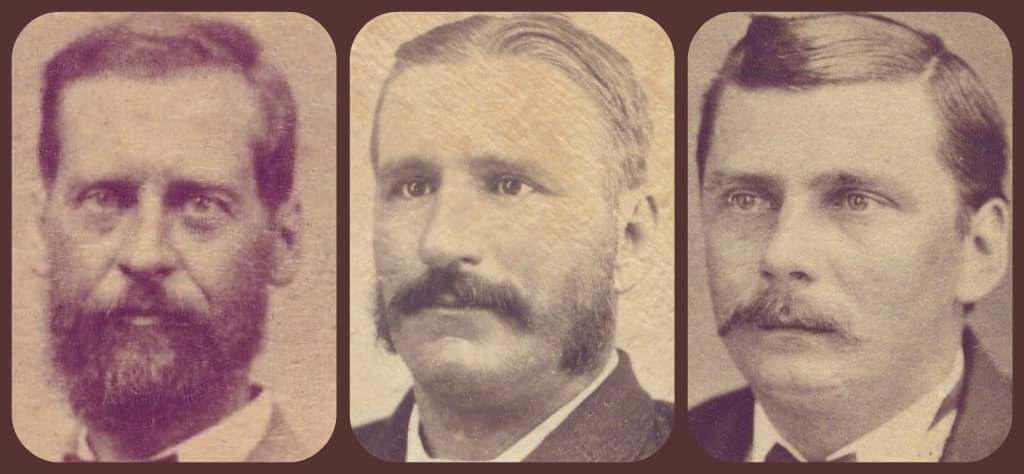
Early Fiji Colonists - William Burleigh Chute, James Borron, Ferdinand Hugo Hedemann. From Fiji Museum
His wife's named was Emma - which is where we get the above named street name from. The street named 'Herbert' for their third son and 'Alfred' for their second son.
.jpg?timestamp=1559536894618)
NOTICE UNDER REAL PROPERTY ACT.
APPLICATIONS having been made to bring the lands hereunder described under the provisions of the Real Property Act. Certificates of Indefeasible Title will issue, unless Caveats be lodged in Form B of the said Act, on or before the date opposite each case respectively. Diagrams delineating these lands may be inspected at the Registrar General's Office, in Elizabeth-street, Sydney.
Dated this 6th day of April. 1887, at the Registrar General's Office, Sydney.
E. G. WARD,
[2379] Registrar General.
No. 6,675, Pitt Water, 62 acres,—comprises the land granted as 60 acres to J. T. Hughes. Applicant Frederick Caesar Hedemann, Sydney. 15 June, 1887. NOTICE UNDER REAL PROPERTY ACT. (1887, April 7). New South Wales Government Gazette (Sydney, NSW : 1832 - 1900), p. 2508. Retrieved from http://nla.gov.au/nla.news-article224184871
HEDEMANN—STRAUBE.—On the 14th inst., at the German Lutheran Church, by the Rev. H. Herlitz, Frederik Casar Hedemann, of Levuka, Fiji, second son of John William Hedemann, Esq., of Hamburg, to Emma Marie Straube, youngest daughter of the late John G. Straube, Esq., of Saxony. Family Notices (1873, October 25). The Australasian (Melbourne, Vic. : 1864 - 1946), p. 25. Retrieved from http://nla.gov.au/nla.news-article137583272
Their four sons born in New South Wales:
HEDEMANN FRIEDRICH CAESAR 7276/1879 FRIEDRICH CAESAR EMMA MARIA ST GEORGE
HEDEMANN ALFRED HUGO 4637/1880 FREDERICK CEASER EMMA MARIA CONCORD
HEDEMANN HERBERT A 4976/1881 FREDERICK C EMMA M CANTERBURY
HEDEMANN ALEXANDER S 7572/1887 FREDERICK C EMMA M GLEBE
HEDEMANN.—June 12, at Toxteth-road, Glebe Point, Alexander Straube, beloved infant son of Frederick Cæsar and Emma Hedemann, aged 18 months. Family Notices (1888, June 13). The Sydney Morning Herald (NSW : 1842 - 1954), p. 1. Retrieved from http://nla.gov.au/nla.news-article28342913
This shows a German community looking after others in Sydney at that time:
SOCIAL.
Mr Henry Kendall, the well-known Australian poet, has been appointed by the Government Inspector of State Forests The appointment is a new one, and tho duties appertaining to the position will be those of a head forest ranger, or of an officer who is required to examine the condition of the natural forests of the colony, and to report upon their present state and the facilities at hand for their preservation, and for planting out forest trees in suitable places For some five or six years past Mr Kendall has been residing at Camden Haven, and during that time he has devoted himself in a singular manner to the study of this question, forming the acquaintance of timber-getters, and acquiring a thorough knowledge of forestry.
The second annual meeting of the subscribers to the Kaiser Wilhelm Spende (German Chanty) took place on Ihursday, the 12th instant, at Weber's Post Office Hotel, York-street. The president, Mr Hedemann, was in the chair. The secretary's yearly report and the treasurers Balance-sheet were received It was resolved that both documents be printed and circulated among the subscribers and friends of the society During the past year 130 cases were brought before the directors, including 83 new applications, and in nearly all cases relief was afforded. Applicants were supported with money by gift or loan, sick people were assisted with medical advice, while a great number received temporary board and lodging. The society paid for the latter for 243 days and nights during the past year The following gentlemen were elected directors for the ensuing year; Messers A Boekemann, J A Engel, H. H Groth, J. Hagen, F. C. Hedemann (president), Chas. Horn (hon secretary), Dr Krauel, O. Meyer (hon treasurer) C. H. Meurer, A Shadler, Dr. R Schuette, and E. R. Weber, as auditors --Messrs O Fein and Wiesener...SOCIAL. (1881, May 19). The Sydney Morning Herald (NSW : 1842 - 1954), p. 7. Retrieved from http://nla.gov.au/nla.news-article13474553
He still had parcels of land at Narrabeen after the above was brought under the Real Property Act:
NEXT WEDNESDAY, MARCH 0th,
AT 11.30 O'CLOCK,
AT THE ROOMS, 133 PITT-STREET.
SHARES.-Civil Service Co-operative Society.
All the OFFICIAL ASSIGNEE'S RIGHT, TITLE, and
INTEREST (If any) IN and TO LAND at
NARRABEEN. ESTATE of FREDERICK CAESAR HEDEMANN, of Westmoreland street, Forest Lodge.
... Hardie and Gorman, Auctioneers. Advertising (1907, March 4). The Sydney Morning Herald (NSW : 1842 - 1954), p. 3. Retrieved from http://nla.gov.au/nla.news-article14847949
Frederick passed away in 1919, at Mona Vale:
HEDEMANN.—August 4, 1919, at The Bamboos, Mona Vale, F. C. Hedemann, aged 76 years
HEDEMANN.—The Funeral of the late Mr. F. C. HEDEMANN, of Mona Vale, will leave our Mortuary Chapel, 810 George-street, city, THIS DAY, at 1.15 p.m., for Rookwood Cemetery. WOOD, COFFILL, and COMPANY, LTD. Family Notices (1919, August 5). The Sydney Morning Herald (NSW : 1842 - 1954), p. 5. Retrieved from http://nla.gov.au/nla.news-article15859165
Emma died in 1926, aged 76 (some records state she was 81), the death registered at Manly,. She was living in the area at the time:
HEDEMANN. - April 29 1926 at her residence The Bamboos, Pittwater road Mona Vale, Emma Marie widow of the late Frederick Ceaser Hedemann aged 81 years. Family Notices (1926, May 3). The Sydney Morning Herald (NSW : 1842 - 1954), p. 10. Retrieved from http://nla.gov.au/nla.news-article16289990
In the Supreme Court of New South Wales.
PROBATE JURISDICTION.
In the will of Emma Marie Hedemann, late of The Bamboos, Pittwater-road, Rock Lily, in the State of New South Wales, widow, deceased.
PURSUANT to the Wills, Probate and Administration Act, 1898, and the Testator's Family Maintenance and Guardianship of Infants Act, 1916: Notice is hereby given that all creditors and other persons having any debts, claims, or demands of what kind soever upon or affecting the estate of the abovenamed deceased, who died on or about the 29th day of April, 1926, and probate of whose will was granted by the Supreme Court of New South Wales, in its Probate Jurisdiction, on the 10th day of August, 1926, to the Permanent Trustee Company of New South Wales Limited, the executor named in the said will, are hereby required to send in particulars of such debts, claims and demands to the said executor, on of before the 24th day of November next, at the expiration of which time the said executor will proceed to/distribute the assets of the said deceased among the persons entitled thereto, having regard to the debts, claims and demands only of which it shall then have had notldc; and the said executor will not be liable, for the assets so distributed, to any person of whose debt, claim or demand it shall not have had notice at the time of such distribution.—Dated this 23rd day of September, 1926.
For the Permanent Trustee Company of New South Wales Limited, J. W. BARNES, Manager. Creagh and Creagh, Proctors for the Executor, Union House, 247 George-street, Sydney, and Peel Chambers, Peel-street, Tamworth. PROBATE JURISDICTION. (1926, September 24). Government Gazette of the State of New South Wales (Sydney, NSW : 1901 - 2001), p. 4048. Retrieved from http://nla.gov.au/nla.news-article222992949
Other Hedemanns' in the Mona Vale area:
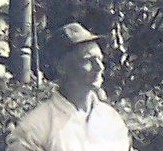 Marriage: 3426/1925 HEDEMANN EVERARD E FULLER BEATRICE PARRAMATTA
Marriage: 3426/1925 HEDEMANN EVERARD E FULLER BEATRICE PARRAMATTA
Everard was Emma and Caesar's eldest son.
HEDEMANN - August 13 1935 at her residence Waratah street Mona Vale Beatrice beloved wife of E H Hedemann. Family Notices (1935, August 14). The Sydney Morning Herald (NSW : 1842 - 1954), p. 12. Retrieved from http://nla.gov.au/nla.news-article17177433
Everard was an Accountant - he passed away in 1951, still a resident of Mona Vale:
HEDEMANN, Everard Herbert - August 23, 1951 at his residence Darley Street Mona Vale beloved father of Jill (Mrs. Westwood) aged 77 years. Family Notices (1951, August 25). The Sydney Morning Herald (NSW : 1842 - 1954), p. 44. Retrieved from http://nla.gov.au/nla.news-article18221669
Their surviving sons went to Western Australia's goldfields, taken their by their father who had launched a gold company:
The entertainment, nevertheless, embraced more things than can be dealt with in detail in this account. In the representation of the comedy "Utopia," two adults-Mr George Marshall and Mr Herbert Hedemann--helped the juveniles. The whole of the doings of the participants in the comedy were marked by genuine talent. AMUSEMENTS. (1899, September 7). Kalgoorlie Western Argus (WA : 1896 - 1916), p. 24. Retrieved from http://nla.gov.au/nla.news-article32200812
KANOWNA v. COOLGARDIE
The above association match was brought to a conclusion on the Kanowna reserve yesterday afternoon. Coolgardie, with the task of topping their opponents' score of 243 runs, began by sending' Maynard and Parsons to the wickets, aghast the trundling of Hall and Hampton. The former, although suffering from a bad leg, which necessitated the services of Alf. Hedemann as his runner, soon got going, while Coolgardie's young wicket-keeper contented himself with 'his usual Bannerman-like tactics. KANOWNA v. COQLGARDTE. (1905, February 27). Kalgoorlie Miner (WA : 1895 - 1950), p. 8. Retrieved from http://nla.gov.au/nla.news-article89129293
Alfred Hugo leaves W.A.:
LONG TENNIS CAREER
Mr. A.H. Hedemann leaving the State
An interesting connection with tennis in Western Australia over the past 38 years will be severed at the end of the month by Mr. A. H. Hedemann— one-time Australian doubles and state singles title holder— who will vacate the sub-manager ship of the Bank of Australasia to become manager of the head office of Tasmania in Launceston. In early Coolgardie days he was a well-known cricketer, footballer and lacrosse player. Latterly, a leg ailment has restricted his activities to the council table of the West Australian Lawn Tennis Association.
On leaving Sydney Grammar School Mr. Hedemann joined his father's business at Coolgardie in 1896.
'The goldfields was practically Western Australia in those days.' says Mr. Hedemann. 'Coolgardie, as the district centre of the whole of the fields, was booming. The railway had not been extended to Kalgoorlie, and it was usual to see hundreds of great teams coming in for supplies from the outlying districts. Every man spent as though he was a millionaire and sport of every description was well patronised. ' "Smiler' Hales' who afterwards wrote some fine books and became a war correspondent had a boxing booth, at the Red Bluff hotel, about a mile out of town and many wonderful fights we saw there. The Western wheel race used to be held each Boxing Day. Next to the Austral wheel race in Melbourne, the event was the biggest cash prize attraction in the world in those days. It was worth £500 and competitors came from all parts of Australia and from overseas. What with heavy betting and the prize, Floyd McFarlane, an American and his followers, won between £8,000 and. £10,000 on one race. People came from far and wide; I suppose the usual crowd was about 10,000.
Foot Running had an enormous attraction in Kalgoorlie. Rufe Naylor who is now in America with the racehorse Winooka ran all the big meetings. Once he matched Arthur Postle, one of the greatest runners Australia has ever known and Bert Day, the Briton. The race was supposed to start at 8 p.m. under electric light but the crowds pushed the fences down and it was not until two hours later that the runners left the mark:
''The Coolgardie Tennis Club had three courts and some very strong players when I first arrived. A few years later we beat a Perth team.. The Goldfields was alive with fine athletes. Coolgardie, Kalgoolie, Boulder Mines, Hannan's Staff, and Kanowna formed an association, and we played practically every form .of sport. Our Rugby was real Rugby, we played on stone studded clay and when you bit the ground you remembered the bump for weeks."
Mr. Hedemann joined the Bank of Australasia about 1898, and was transferred to Perth 10 years later. He played cricket with the old Wanderer's Club, rowed with the Bank's crews, and played tennis with the WACA pennant team until it was debarred from competition on account of possessing no courts of its own. He joined King's Park and won many events, both singles and doubles until in 1913, partnered with the late Ernest Parker, he won the doubles championship of both Australia and Western Australia. In the same year he won the metropolitan singles champion and with T. M. Coombe, the doubles. In 1919, following the Great War, he won the State singles championship and in the two following years was runner-up to Rice Gemmell. For 20 years he has lent valuable aid to the council. He is a life honorary member of the W.A.L.T-A. and his portrait hangs in the presidents gallery of the Kings Park Tennis Club.
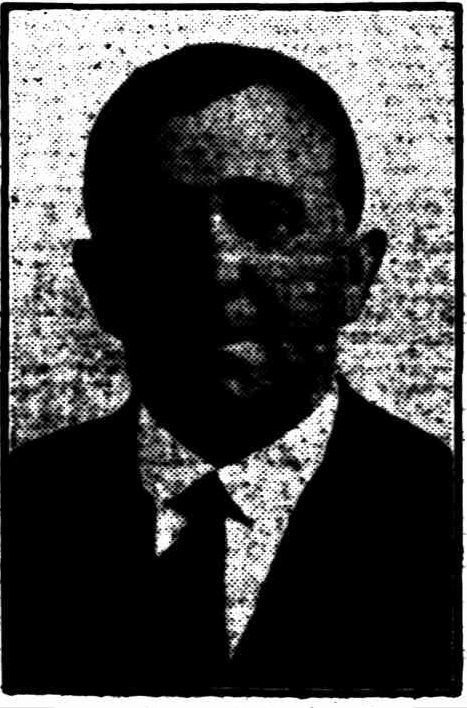
Mr. A. H. HEDEMANN.
LONG TENNIS CAREER. (1933, July 20). The West Australian (Perth, WA : 1879 - 1954), p. 11. Retrieved from http://nla.gov.au/nla.news-article33327383
In 1912 Frederick married a girl there:
A pretty wedding was solemnised at the Roman Catholic Church, Kanowna, on Tuesday, February 20, the contracting parties being Miss Lizzie Murphy, youngest daughter of Mr. and Mrs. John Murphy, and Mr. Frederick Caesar Hedemann. The Rev. Father Sheridan was the officiating clergyman. The bride, who was given away by Mr. Harry Law son, of Boulder, wore a dainty gown of cream silk marquisette, prettify trimmed with rich silk lace. The first bridesmaid, Miss Daisy Gogan, wore cream Shantung silk, trimmed with Paris guipure. Miss Myrtle Kidd wore pink Oriental satin, trimmings to match. The brother of the bride, Mr. Jack Murphy, acted as best man. The wedding breakfast was served at the | residence of the bride's parents. The happy couple left by the evening train for Comet Vale, where they intend to take up their future residence.. Ever yours, CARRIE. A LADY'S LETTER (1912, March 1). Kalgoorlie Miner (WA : 1895 - 1950), p. 2. Retrieved from http://nla.gov.au/nla.news-article91341188
Their third son, Herbert Alexander Hedemann, for whom one of these early streets was named, is known as one of Australia's great early runners. Herbert Hedemann was born on the 10th November 1881. When he showed promise as a distance runner, the professional ranks must have attracted him. His close contemporary Arthur Postle, the famous Australian professional sprinter made his impact on the running scene, some five years earlier than Hedemann, and Jack Donaldson. another famous professional sprinter, who was five years younger, also was competing internationally by 1909.
It is possible that for family reasons Herb Hedemann delayed his move in the professional rankings until he was nearly 30 years old. However when he finally did so, he became recognised as one of the greatest Australian distance runners. He recorded a feat which has still to be beaten - winning the Federation Mile and Grampians Two Miles in the one day at the 1912 and 1913 Easter Gift meetings.
In 1913 Hedemann won the Federation Handicap mile event at Stawell, second was Charles E Bergmeier. Professional sprinter Jack Donaldson described the then desperate situation in Australian professional athletics, 'With matches as scarce as hens' teeth and handicaps almost hopeless’. After the Stawell race Hedemann and Bergmeier decided to seek their fortunes on the more flourishing and therefore more attractive British professional running circuit. He then went to South Africa:
HERBERT HEDEMANNS RECORD TIME FOR THE MILE AT JOHANNESBURG
There was' a large'.crowd at the Johannesburg Stadium on the night of June 1, when the big night's sport was presented to the patrons of the club. The' 'Evening Chronicle' reports that a £50 whippet handicap was decided, and, in addition. Herb Hedemann, the holder; of the mile worlds championship met H. Wilson, the Transvaal professional 'champion;in a mile match, conceding 25sec start: : ' The pedestrian event was put on at about 9.48. Very little time was cut to waste in preliminaries. Mr; P. O'Connell fired the gun and Mr. Dave Mackay acted as judge, -whilst Messrs. W. T. and N. T. Seccombe held the official watches. Wilson moved off first and, making good use of his liberal allowance, was a good 170yds in front before Hedemann got the signal to move, a second gun being fired, so as to give private watchholders a chance to clock the champion.
The Australian, who moved in perfect style with long and sweeping strides, sped over the ground with a free and easy action, and early in the race it was apparent that he would bridge the gap, but the thought that was agitating the minds of most people was, 'would Wilson pace him fast enough to enable him to get inside 4min 30secs' a feat which had never hitherto been performed in the Transvaal. Wilson plugged along in good style, but with two laps to go a gap of only 15yds separated the two, and the champion was on the leader's heels when the bell rang. Three long strides at the first bend settled the issue, and half-way down the back stretch the Australian was 5yds in front, striding along at an easy pace. Wilson hung on, and Hedemann was content to win by about 5yds. Both the official watches recorded 4min 27 4-5sec, and when the figures were hoisted, the winner was given a round of applause. He had accomplished the seemingly impossible and on a 65 lap track. Hedemann will go a long way before he gets beaten, provided that he does not reach the sere and yellow stage before he gets another match. HERBERT HEDEMANN'S RECORD TIME FOR THE MILE AT JOHANNESBURG (1914, July 8). Referee (Sydney, NSW : 1886 - 1939), p. 7. Retrieved from http://nla.gov.au/nla.news-article120280882
He stayed in South Africa and then left late in 1925 for Britain, landing in the United States, where he had decided to emigrate, in 1926. Hedemann settled in New York and soon married a widow with children. Now 45 years old, he had decided to put down roots at last but supporting his new family was not to be easy. There was no professional running scene in the United States at this time.
By early 1928 Herbert Hedemann was broke and he and his wife and five children were reduced to living in one room but possible salvation was at hand. In late 1927 the promoter C.C. Pyle had come up with the idea of an annual Trans-America footrace, using the newly completed Route 66 from Los Angeles to Chicago and then onward to New York. The entry fee was $25 with food and lodging provided by Pyle. The 1928 Trans-Continental race offered Herbert Hedemann a lifeline, a chance to re-join the professional running scene once more, and perhaps even a way out of poverty.
The 1928 race was said by its promoter to be the first of an annual series of races across America, like the famous French Paris-Strasbourg walk and the Tour de France cycle race. Hedemann, out of condition after at least ten years away from the professional circuit, was to use the first race as preparation and experience for the future events. Unlike his fellow Australian, Mike McNamara, Hedemann managed to complete the race, reputedly finishing 38th. The promoter of the race, C C Pyle was not able to come up with the prize money but another promoter, Tex Rickard and the Californian millionaire father of one of the finishers, ensured the money was paid.
Many of the veterans of the 1928 race decided to provide their own handlers for the 1929 race, and invested their prize money in a vehicle for a handler. Hedemann and his fellow countryman, McNamara, pooled their capital and built their own motorised caravan. As Pete Guvuzzi, one of the strongest runners in both races, often remarked, “The first race was an amateur event. The second was professional.”
Hedemann was a very different competitor in the 1929 race, placing 6th, 7th, 2nd in the first three stages. Hedemann would have taken the overall lead on the fourth day if he had not been misdirected off course and lost 40 minutes.
On Day 5 in the 37 miles stage from Wilmington to Havre de Grace Hedemann was locked in battle with the much younger Paul Simpson. For 30 miles they matched strides until eventually Simpson was forced to slow to a walk. The bearded Hedemann won in 4:44:45, and moved into the lead on cumulative time. However his early push had been premature, and other more cautious and prudent runners now began to come into their own. On the sixth day stage, Hedemann dropped to 18th, and within five days was down to 10th place on the elapsed time.
At the end of the epic race of 3,635 miles/5850 km which had lasted 79 days, the two Australians were separated by just three hours, McNamara with a time of 627:45:28 in 7th and Hedemann in 8th with 631:23:48. Many of the runners had lost up to fourteen pounds/6.5kg in weight. They should have been well rewarded for all their efforts – with McNamara receiving $2000 and Hedemann $1750. Instead they were offered worthless cheques. Pyle had run out of money.
What happened to Herbert Hedemann afterwards is largely unknown. By the 1940s he was living in East 53rd Street, New York and working for the largest Real Estate broker in Manhattan, Douglas Elliman & Co and worked from the Park Avenue office. (Elliman was a long established company, founded in 1911.) There had been a massive improvement in Hedemann’s financial situation.
With the attack on Pearl Harbour, and the threat to his Australian homeland, Hedemann was determined to do his bit, and joined the equivalent of the Home Guard at the age of 60. On his eventual retirement, he relocated to Los Angeles in California
According to the Stawell Athletic Club, he was a regular visitor to the Stawell Easter gift at least up to the mid sixties, travelling from the USA. At that time, he would have been in his eighties, so he obviously was still active into his old age, with the funds to pay for frequent trans-Pacific trips.

Herbert Hedemann - 1948, courtesy Australian National Archives
Herbert Hedemann died on September 22nd 1976 in Los Angeles, California, in his mid nineties. He was the longest lived of the Pyle runners, although his greatest opponent from the 1929 race, much younger Harry Abramowitz, was still around in 1985.
In 1958 the Stawell Athletic Club named their annual Mile competition, the 'Herb Hedemann Mile', and the event has been won by several distinguished professional runners since. It is a fitting memorial for one of Australia’s great distance runners, but ironically perhaps his greatest performance, racing across America, is largely forgotten. [3].
Herbert lost his tribute street in the 1950's:
SHIRE OF WARRINGAH.—Renaming of Roads.—Ordinance
30, Clause o6} .Local Government Act.—.Notice is hereby given that the undermentioned roads have been renamed in accordance with section 249 (a) of the Local Government Act:—
Past name and new name. Arthur-street, Brook vale—Miles-street.
Arthur-street, Frenchs Forest—Knibbs-street.
Boronia-street, Seaforth—Rignold-street.
Currie-road, Frenchs Forest—Kurrali-street.
Elvina-crescent, Scotland Island—Thompson-street.
Herbert-street, Mona Yale—Foley-street.
Oak-road, Ingleside—McLean-street.
Park-lane, Harbord—Lodge-lane.
Eyrie-street, Balgowlah—Sayers-street.
Short-road, North Curl Curl—Molong-street.
Brown-street and Gordon-street west of Brown-street, Manly Vale—Quinlan-parade.
Dunlop-avenue, Bee Why West—Prescott-avenue.
Section of road formerly known as Pymble-road and .unnamed road extending south from it commencing from road known as Pymble-road opposite its junction with Prince Charles road and running southward therefrom—Prince Charles road.
J. MORGAN, Shire Clerk, Council Chambers, Brookvale.
2448—£1 16s. SHIRE OF WARRINGAH.—RENAMING OF ROADS.—Ordinance (1953, August 14). Government Gazette of the State of New South Wales (Sydney, NSW : 1901 - 2001), p. 2653. Retrieved from http://nla.gov.au/nla.news-article220067748
Wow! I found this news site by accident and have just read my great-grandfather’s story in your History section. He was Friedrich Caesar Hedemann (known as Caesar). What a nice surprise.Many thanks.I have a few photos of the house at Mona Vale and of Caesar, Emma and their eldest son Everard. They’re not great quality, but they’re all I have. I cropped the photos to get images of their faces as I hadn’t seen any of them before.Caesar was an interesting man. He was born in Germany, started as a merchant in Fiji, then moved to Sydney (his brother Ferdinand didn’t come to Australia), then went to Kalgoorlie to start again after going bankrupt in the 1893 financial crash. He was an old man when he moved back to Mona Vale and lived at The Bamboos.
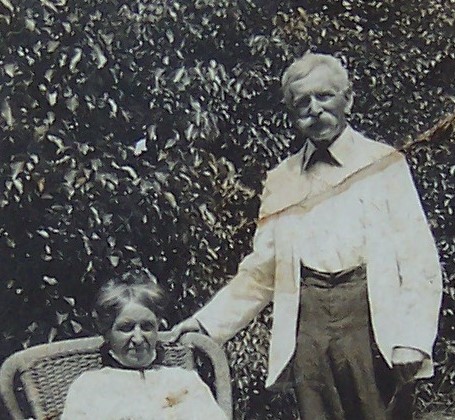
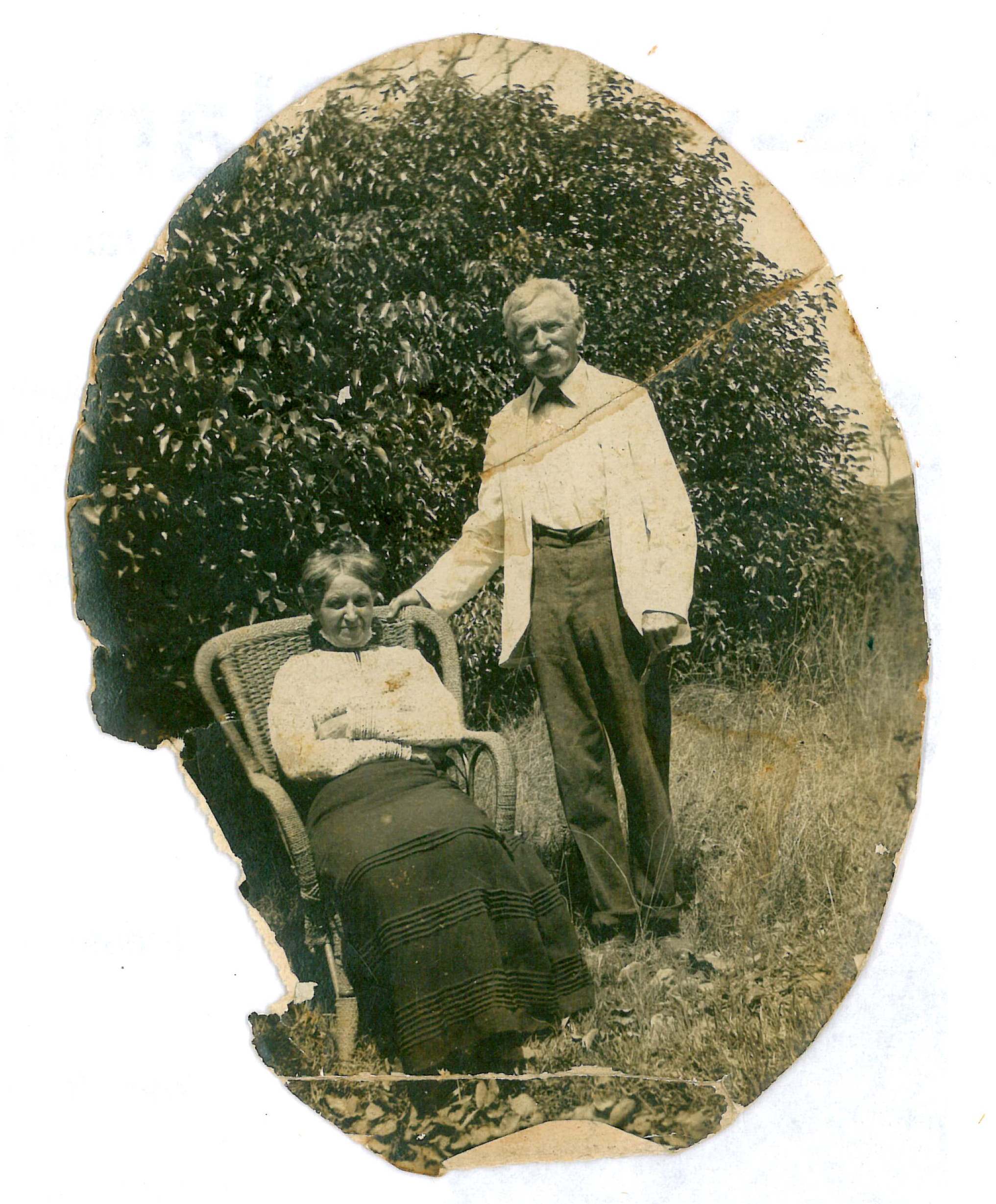

Ev (Everard), Mater and Pater at Mona Vale - 'The Bamboos', photo courtesy Catherine Quinn (nee Hedemann).

Ev (Everard), Mater and Pater at Mona Vale - 'The Bamboos', photo courtesy Catherine Quinn (nee Hedemann).
The Middle Of The Valley And South Towards Narrabeen Lagoon
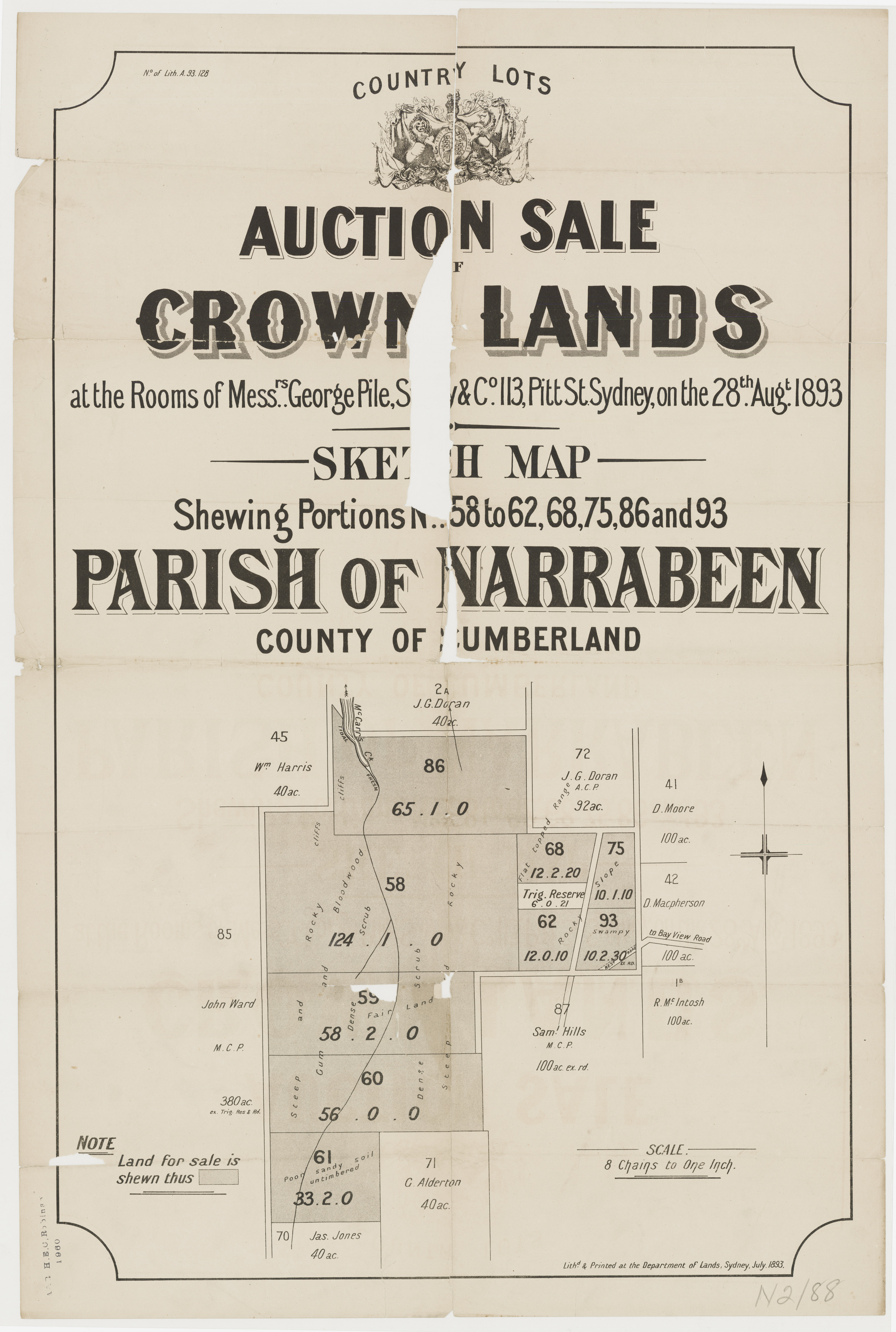
Sketch Map shewing Portions no. 58 to 62, 68, 75, 86 and 93, Auction of Crown Lands by George Pile on August 28th, 1893. Item No.: c050370091, courtesy State Library of NSW, from Narrabeen Subdivision plans.
This sale is actually going to take place for land in the then named 'Village of Turimetta', now known as Mona Vale, which will run as a stand alone page. A perusal of more information about the blocks within that sale is available at: LAND SALE. (1893, June 22). New South Wales Government Gazette (Sydney, NSW : 1832 - 1900), p. 4977. Retrieved from http://nla.gov.au/nla.news-article222202957
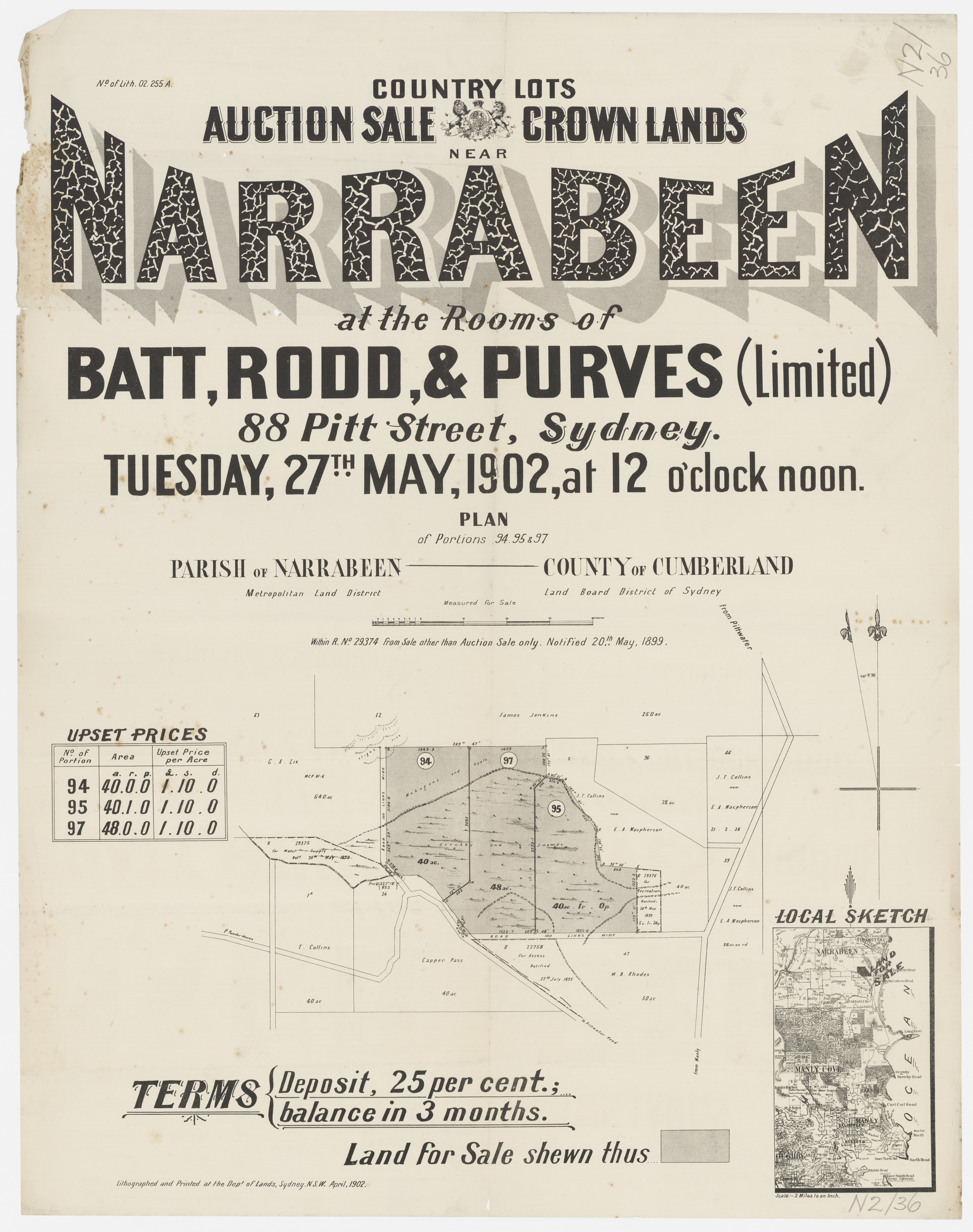
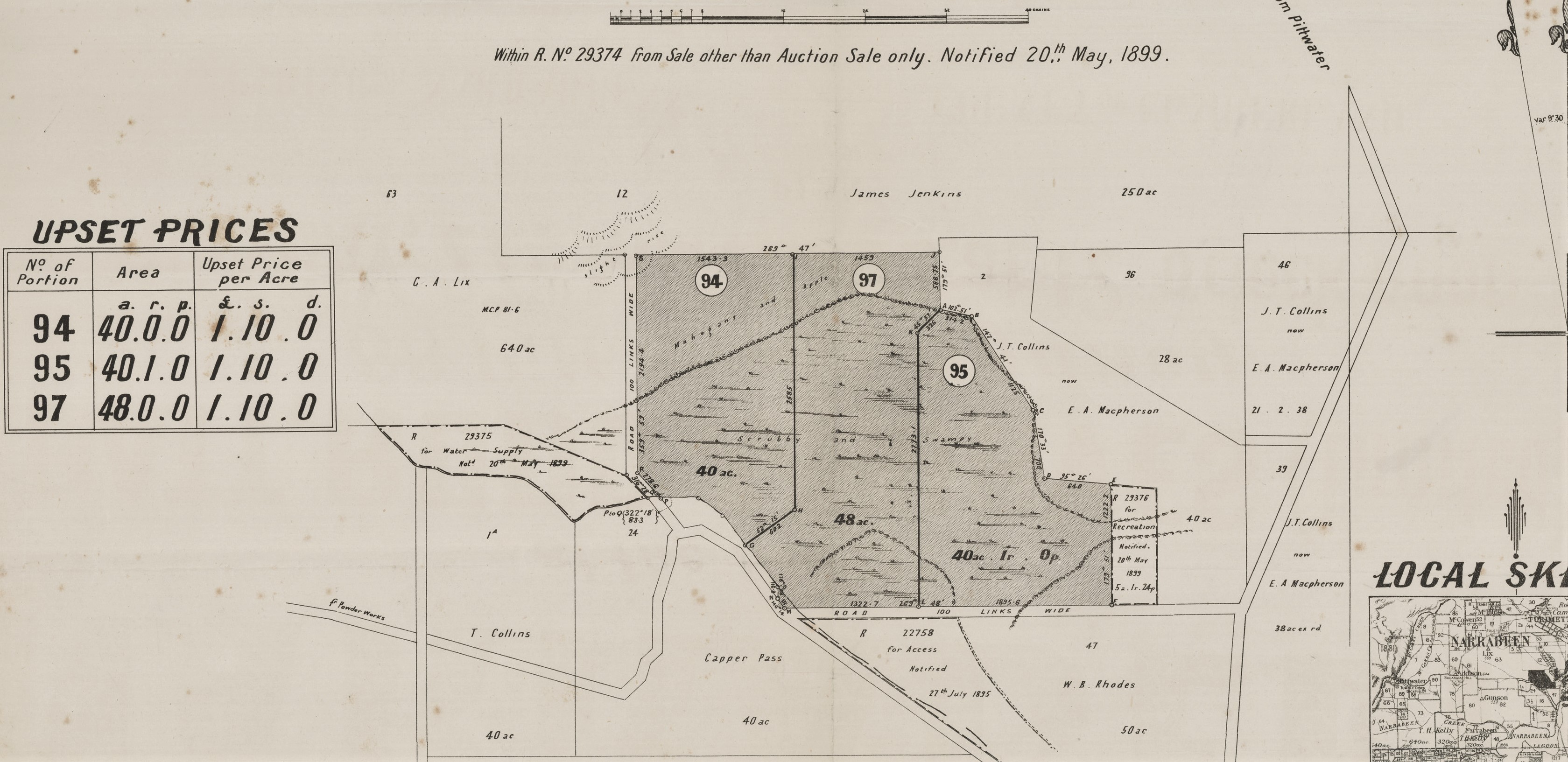
.jpg?timestamp=1559522867216)
Narrabeen - Plan of Portions 94, 95 & 97, Parish of Narrabeen, County of Cumberland - No boundaries shown, 1902, Item No.: c050370036, courtesy State Library of NSW - Narrabeen Subdivision Plans - Note 'now E A Macpherson' lands owned. Enlarged sections from described as ' Mahogany and Apple' and 'Scrubby and Swampy'.
The Jenkins Warriewood Valley holdings were put up for sale at the beginning of 1886:
SUBDIVISION BLOCK.
To Speculators, Building Societies, and others.
BOYD and KING are instructed by the owners to sell
the following properties, suitable for Immediate subdivision:
NARRABEEN-350 acres, with water and main road frontage.
PITTWATER-Commanding 50 acres, with bold frontage to Broken Bay.
Particulars can be obtained at the Auctioneers' Rooms, 96, Pitt street. Advertising (1886, January 13). The Sydney Morning Herald (NSW : 1842 - 1954), p. 15. Retrieved from http://nla.gov.au/nla.news-article13608940
These gentleman bought part of the holding:
NOTICE UNDER REAL PROPERTY ACT.
APPLICATIONS having been made to bring the lands hereunder described under the provisions of the Real Property Act, Certificates of Indefeasible Title will issue, unless Caveats be lodged in Form B of the said Act, on or before the date named opposite each case respectively.
No. 7,879. Narrabeen Lagoon, 36 acres 0 roods 17 perches,—comprises the land granted as 30 acres to James Jenkins. Applicant: Ballington Booth - of New York, America, Charles Herbert Lindsay - of Ballarat, Victoria, and Thomas Henry Howard - of Melbourne, Victoria. Caveats may be lodged until 27, Feb., 1890. NOTICE UNDER REAL PROPERTY ACT. (1889, December 20). New South Wales Government Gazette (Sydney, NSW : 1832 - 1900), p. 9252. Retrieved from http://nla.gov.au/nla.news-article224336900
The Hon. Francis Abigail, under instruction of transfer from John Jenkins, Elizabeth Jenkins and Martha Jenkins, owned the 419 acres, 3 roods, 38 ¼ perches, on January 18th 1888 that comprised the Jenkins Warriewood land holdings, along with other acres they had acquired along the way.
He sells to Edward Augustus MacPherson on July 3rd 1889, registered July 9th (Certificate of Titles). On November 13th 1893 he transfers this to Edward Hume MacPherson and he and William Joseph MacPherson have Power of Attorney from March 24th 1906. In December 1909 they transfer the whole into ‘Warriewood Limited’.
‘Warriewood Estate’ – Vol-Fol 867-24:
.jpg?timestamp=1754625913392)
.jpg?timestamp=1754625956561)
.jpg?timestamp=1754626000820)
.jpg?timestamp=1754626049095)
.jpg?timestamp=1754626095954)
.jpg?timestamp=1754626134954)
.jpg?timestamp=1754626225200)
Caveat placed on December 14 1909 on Lots 65 Section A and Lots 19, 56, 57, 55, 64 and 65 in Section C of D.P. 5464 (Lots 56 and 57 are sold same date to Walter Evans Peterson and his wife Sarah Ann Peterson Vol-Fol: 2033-215 – near Pittwater road on old named ‘Seaview’. Lots 64 and 65 are sold same day to Lucy Adelaide Chandler, wife of William Alfred Chandler Vol-Fol: 2033-216).
Then becomes Vol-Fol: 2045-47 on March 19 1910 when 'Warriewood Limited' is registered (sales - 10 pages of them- under this Vol-Fol):
.jpg?timestamp=1754626290486)
.jpg?timestamp=1754626441869)
.jpg?timestamp=1754626372527)
.jpg?timestamp=1754626515398)
Macpherson's Deposited Plan (D.P. 5464) for Warriewood – per HRLV:
.jpg?timestamp=1754626637998)
.jpg?timestamp=1754626684871)
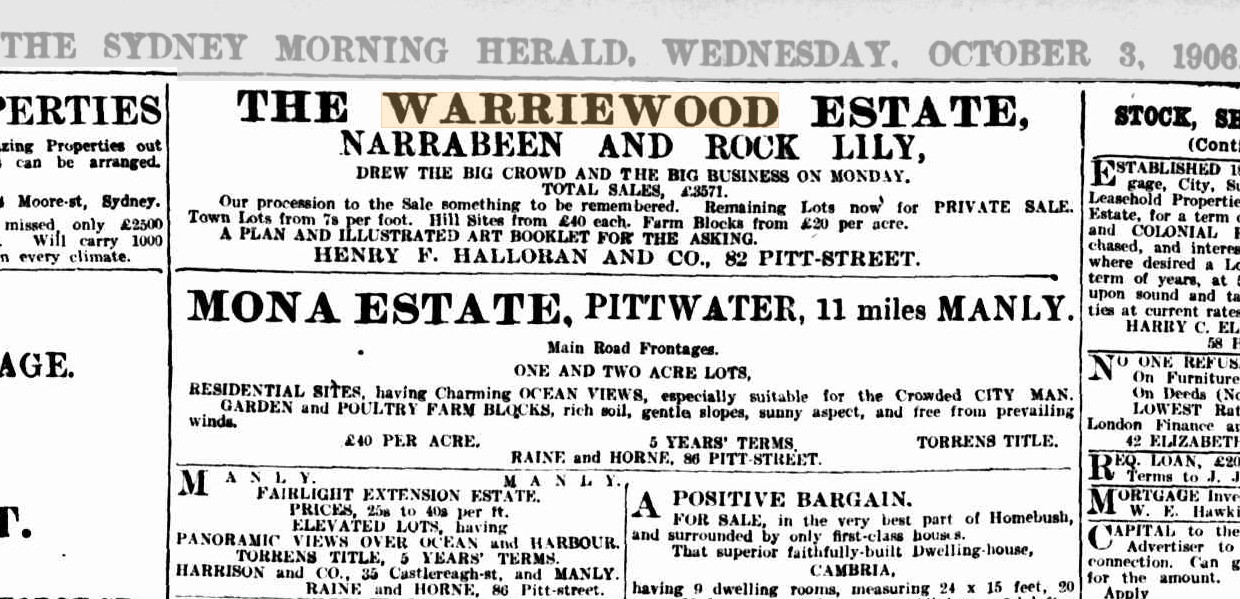
.jpg?timestamp=1754629150878)
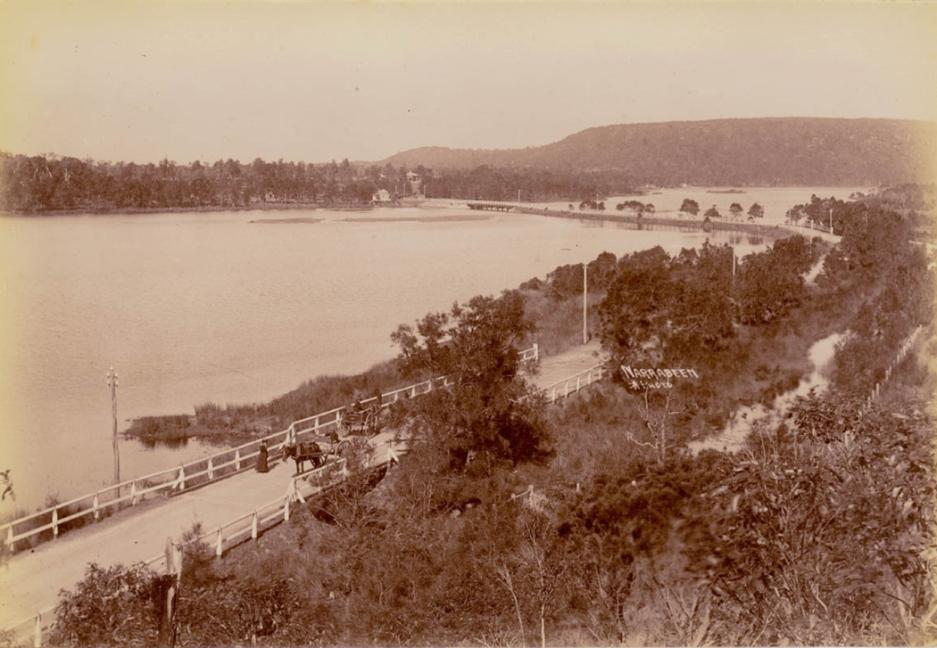
View - Narrabeen Lakes, ca. 1900-1910, Image No.:a116483 courtesy State Library of NSW.
MANLY TO BAY VIEW—A POPULAR EASTER RESORT BY ROAD
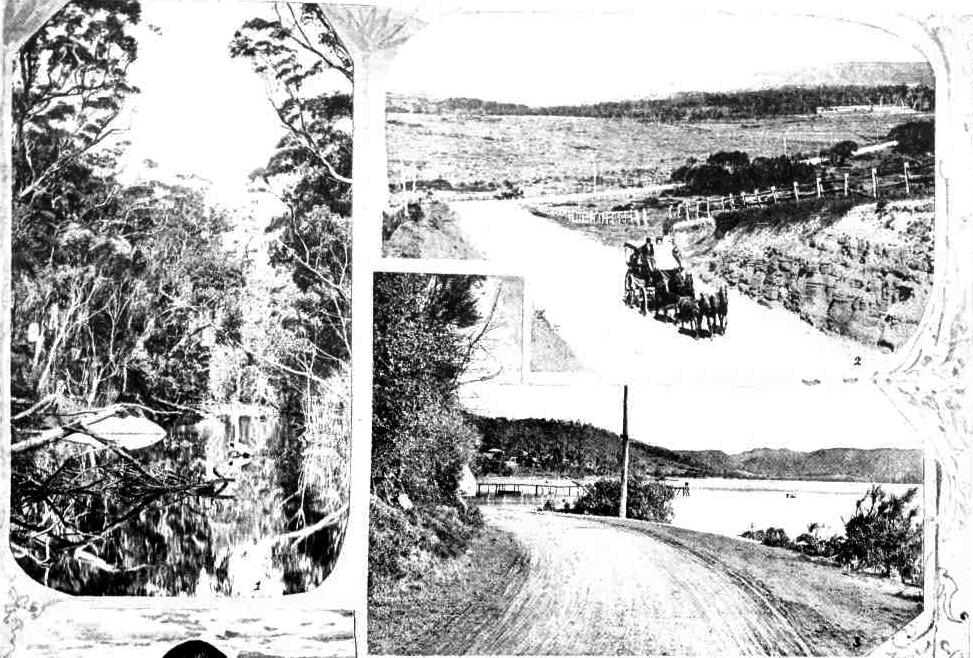
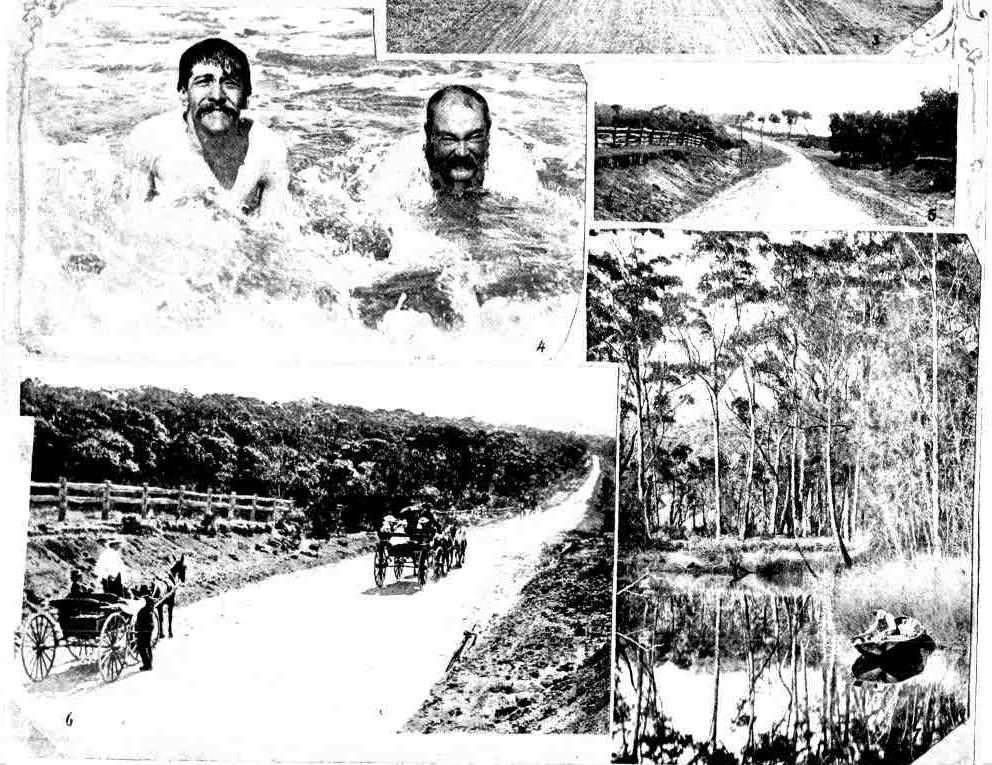
1. On the Narrabeen Lagoon. 2. View from Sheepstation Hill, looking south. 3. Bay View. 4. A dip in the surf at Narrabeen. 5. Near Long Reef. 6. Approaching Narrabeen. 7. One of the creeks.
The distance from Manly to Bay View is about 15 miles. The road is by the Narrabeen-road past Rocklily. A proposal to put down a tram line is now being considered, and a member of the ministry was recently driven over the country, which in many parts is remarkably picturesque. MANLY TO BAY VIEW—A POPULAR EASTER RESORT BY ROAD. (1900, April 14). The Sydney Mail and New South Wales Advertiser (NSW : 1871 - 1912), p. 878. Retrieved from http://nla.gov.au/nla.news-article165297416
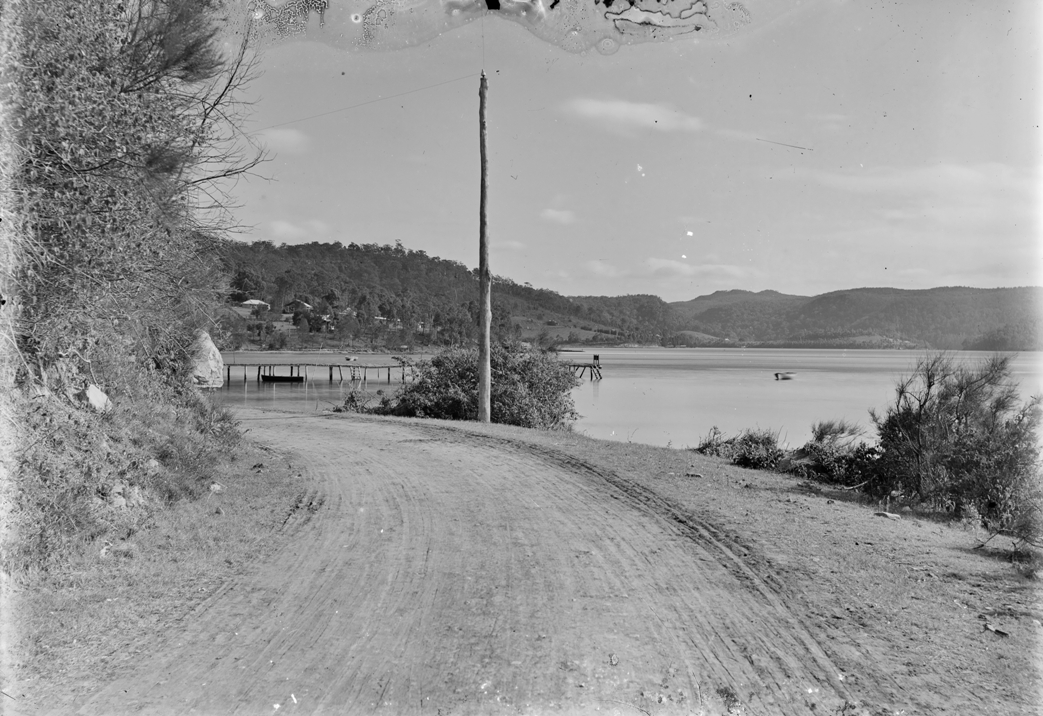
Image No.: c071950005 Box 17, Albums of William Joseph Macpherson - 'Bay View', courtesy State Library of NSW and Macpherson Family.
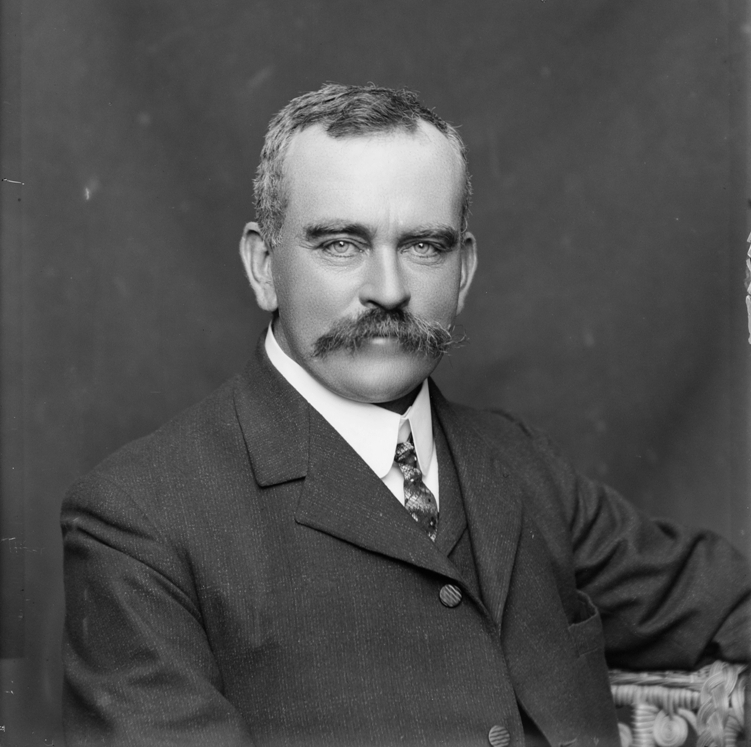
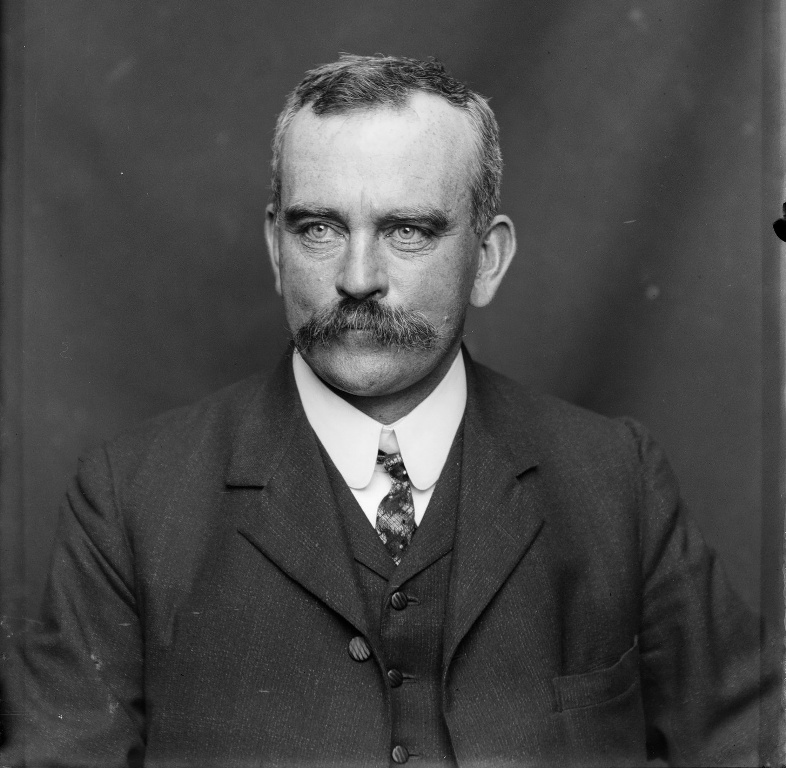
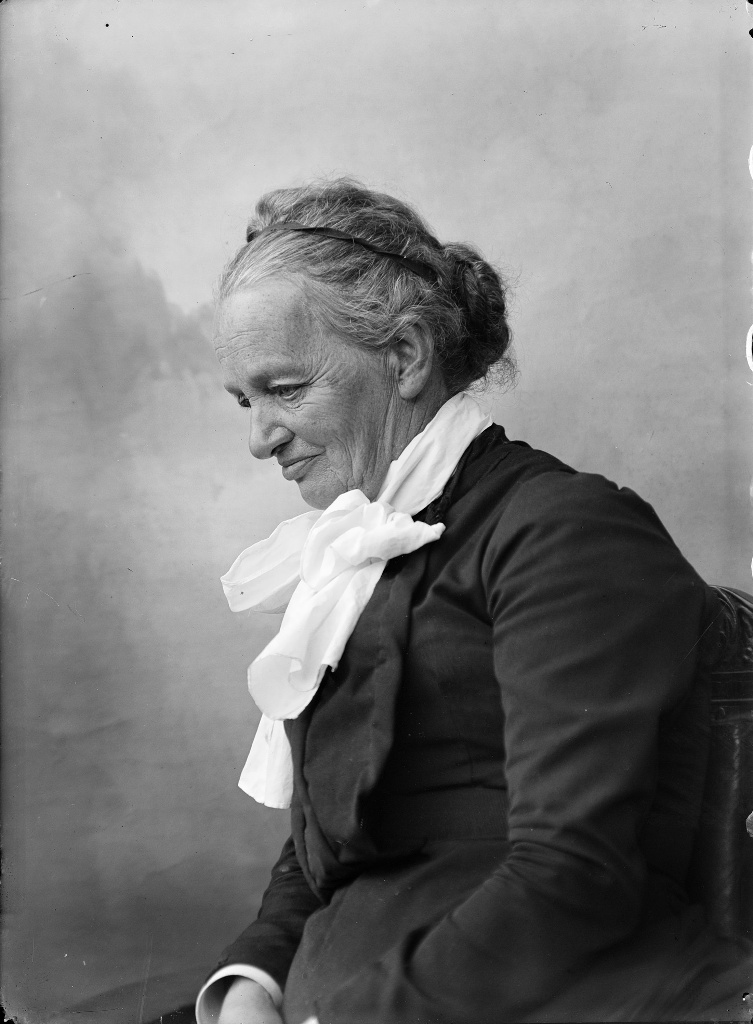
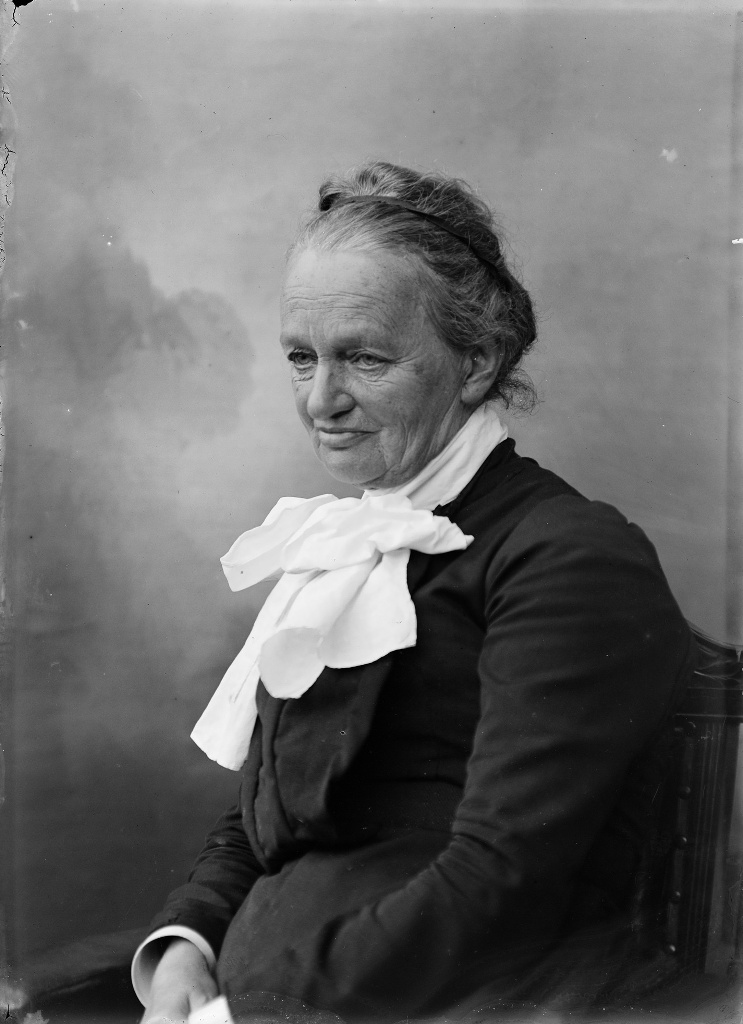
Department of Lands,
Sydney, 28th June, 1899.
LANDS RESUMED FOR ROADS DECLARED TO BE PUBLIC ROADS.
NOTICE is hereby given that the lands which have been resumed by notification in the Government Gazette for Roads, under the Public Roads Act of 1897, are now declared to be Public Roads.
By His Excellency's Command,
J. H. CARRUTHERS.
Roads No. Description of Roads. Date of Gazette of last notice
99-88-9 R. 6,136 Road giving access to portions Nos. 94 and 95, from the road from Manly to Pittwater, parish of Narrabeen, county of Cumberland. 3rd of June 1899, folio 4398. LANDS RESUMED FOR ROADS DECLARED TO BE PUBLIC ROADS. (1899, June 28). New South Wales Government Gazette (Sydney, NSW : 1832 - 1900), p. 4889. Retrieved from http://nla.gov.au/nla.news-article220944536
Edward Augustus Macpherson was the son of Joseph Wharrie and Catherine Macpherson. He took an assignment of land dated December 28, 1875 and house known as “Hawthornden” in Roslyndale Avenue, Woollahra, New South Wales. The Macpherson family resided there between 1876 and 1902 but remained associated with the site until 1918.
He owned land at Bayview, Dee Why, on Narrabeen Lagoon and of course 'Wharriewood' as shown above.
DISTRICT COURT.
Monday, September 19.
(Before Judge Wilkinson.)
Claim for Commission.— J. E. Robberds and Thomas William Woodin v. Edward Augustus MacPherson. The plaintiffs sued the defendant for work, journeys, and attendances performed as agents for the defendant, and for commission in connection with the sale of land at Narrabeen, near Manly. The amount of claim was £200. Judgment was given for the plaintiffs for £150. DISTRICT COURT. (1892, September 20). The Daily Telegraph (Sydney, NSW : 1883 - 1930), p. 3. Retrieved from http://nla.gov.au/nla.news-article235968204
In 1899 part of these lands were resumed for a road 100 links wide:
Department of Lands,
Sydney, 29th March, 1899.

NOTIFICATION OF PROPOSED RESUMPTION OF LAND UNDER THE PUBLIC ROADS ACT OF 1897. NOTIFICATION OF PROPOSED RESUMPTION OF LAND UNDER THE PUBLIC ROADS ACT OF 1897. (1899, March 29). New South Wales Government Gazette (Sydney, NSW : 1832 - 1900), p. 2547. Retrieved from http://nla.gov.au/nla.news-article220982847
Why 'Wharriewood'
Visit: The Macphersons Of Wharriewood: The William Joseph Macpherson Albums
.jpg?timestamp=1537905699975)
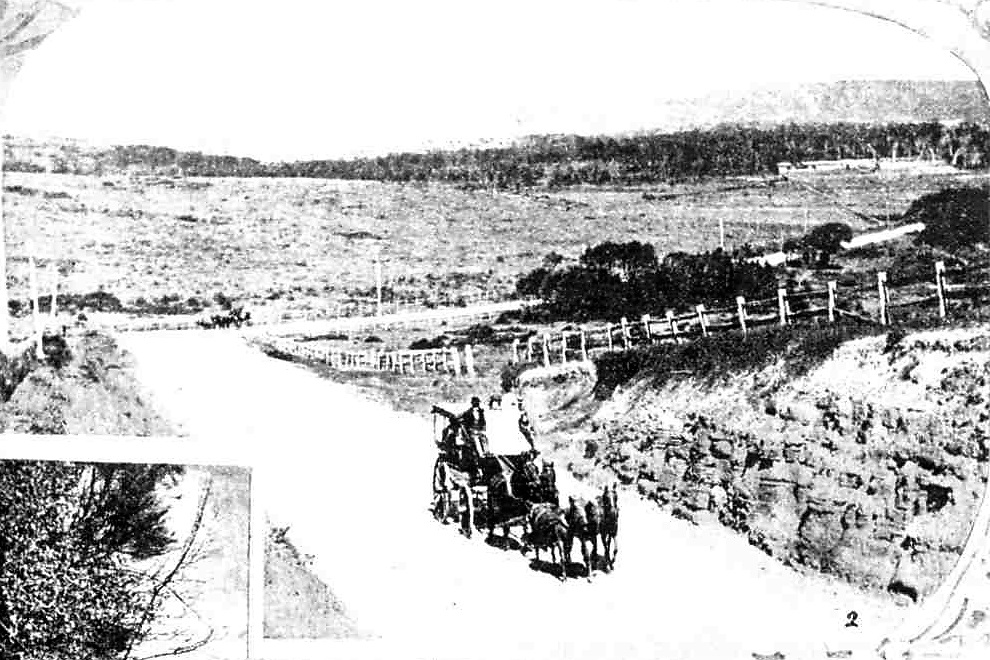
1. On the Narrabeen Lagoon. 2. View from Sheepstation Hill, looking south. 3. Bay View. 4. A dip in the surf at Narrabeen. 5. Near Long Reef. 6. Approaching Narrabeen. 7. One of the creeks. The distance from Manly to Bay View is about 15 miles. The road is by the Narrabeen-road past Rocklily. A proposal to put down a tram line is now being considered, and a member of the ministry was recently driven over the country, which in many parts is remarkably picturesque. MANLY TO BAY VIEW—A POPULAR EASTER RESORT BY ROAD. (1900, April 14). The Sydney Mail and New South Wales Advertiser (NSW : 1871 - 1912), p. 878. Retrieved from http://nla.gov.au/nla.news-article165297416
Warriewood at this time was still very wooded - although men such as Leon Houreux, of the Rock Lily, was one of the woodcutters who may have worked for fellow Frenchman Gustave Lix who owned the land housing the failed Ingleside Powder Works are stated to have been woodcutters in the valley, even as late as the 1950's and 1960's the valley and its hill surrounds were still very alike the hills above and part of the Narrabeen Lagoon State Park we see today.
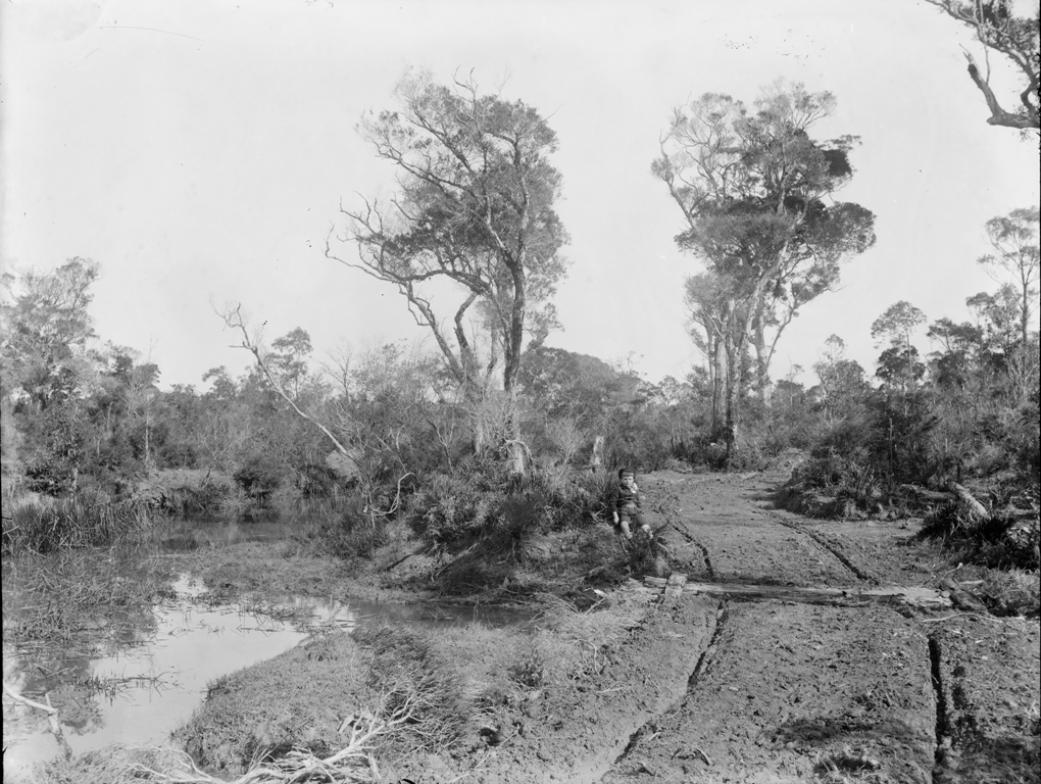
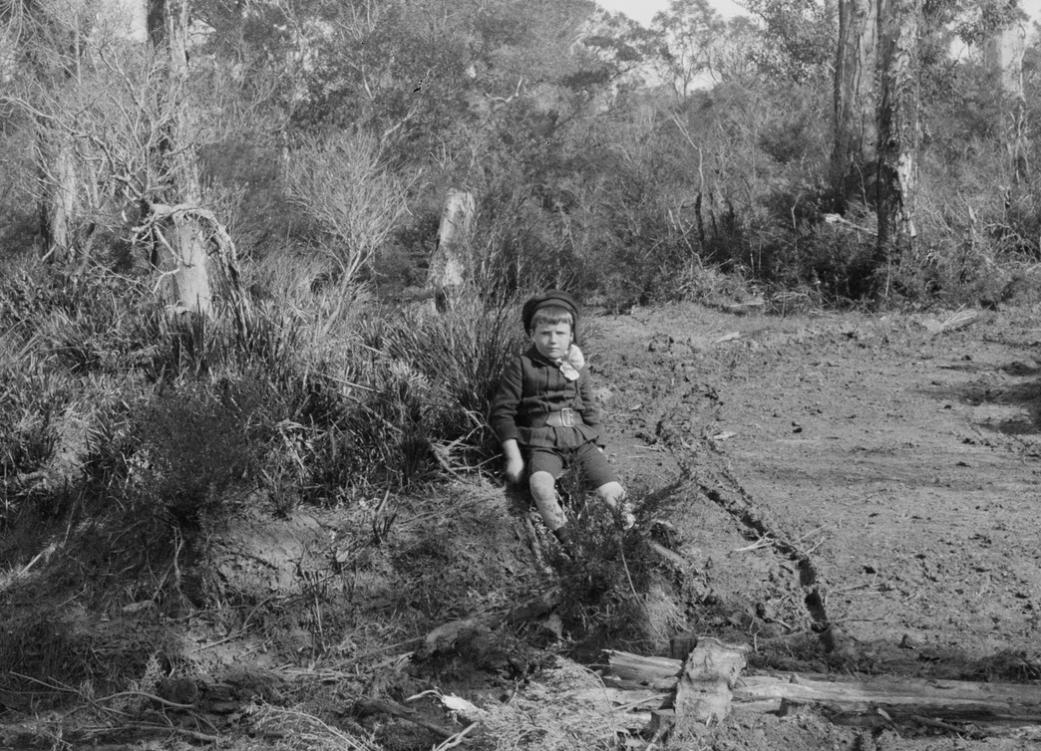
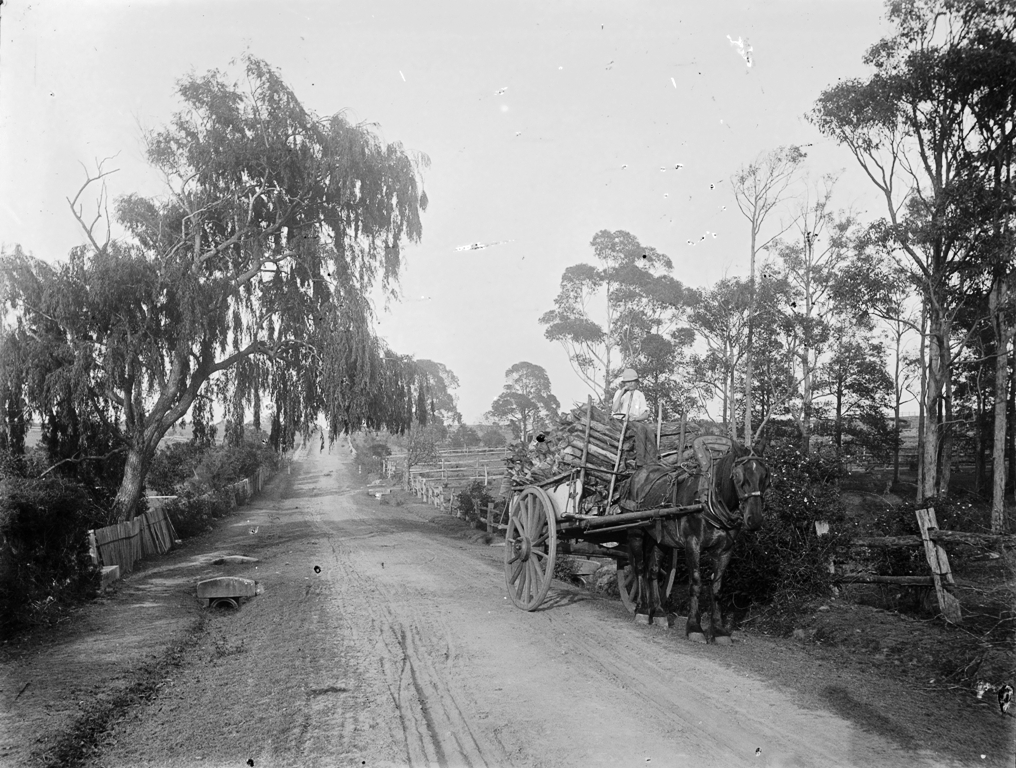
NOTICE UNDER REAL PROPERTY ACT.
APPLICATIONS having been made to bring the lands hereunder described under the provisions of the Real Property Act, Certificates of Indefeasible Title will issue, unless Caveats be lodged in accordance with the Third Schedule to the said Act, ON OR BEFORE THE 30TH MAY, 1906
No. 14,106. APPLICANT Henry Ferdinand Halloran, Sydney. LAND:—County of Cumberland, parish of Narrabeen, 4 acres 2 roods, 7 acres 3 roods 16 1/2 perches, 17 acres 32 perches, 10acres 26 perches, 71 acres 33 perches, and 86 acres 1 rood 8 perches, situated in Vinevard-street, Herbert-street, Emma-street, and Lane Cove Road, near Pitt Water,—being lots Nos. 8, 12, 14, 13, 17, 22, 18 and 19 of section A, lots Nos. 1 to 18, the sites of Vineyard-street, Alfred-street, and Orchard-street, and reserves of section B of the Collingwood Estate, and is the whole of 40 acres, portion No. 3, 26 acres portion No 5, and 20 acres (portion No. 54 of parish) granted to Thomas Collins, and part of 115 acres 2 roods (portion No. 53 of parish) and part of 80 acres (portion No. 2) granted to the said Thomas Collins, exclusive of the roads 1 chain wide and 50 links wide, the areas of which have been deducted from the total areas; adjoining the properties of J. Austin and A.E.Lee or D. Macpherson, J. Baker, Union Bank of Australia, J. F. Duffy, E. H. Macpherson, C. P. Harrington, land owners unknown, and Crown Land. NOTICE UNDER REAL PROPERTY ACT. (1906, April 11). Government Gazette of the State of New South Wales (Sydney, NSW : 1901 - 2001), p. 2352. Retrieved from http://nla.gov.au/nla.news-article226476104
EIGHT-HOUR DAY. KEEP IT OPEN. TO BE AUCTIONED BY HALLORAN. ON THE GROUND. AT 2. THE GREAT WARRIEWOOD ESTATE, NARRABEEN. A PERFECTLY NEW ESTATE (NO REMNANTS), COMPRISING 160 LARGE TOWNSHIP LOTS, WITH A MILE OF MAIN-ROAD FRONTAGES, 80 MAGNIFICENT ELEVATED HILL SITES, AND 70 SPLENDID FARMS, MOSTLY WITH CREEK FRONTAGES. HUNDREDS OF ACRES TO SELECT FROM OF COASTLANDS, UNEQUALLED EITHER. NORTH OR SOUTH. SPECIAL DRAGS FROM MANLY. EASY TERMS.TORRENS TITLE. PLANS. FULL PARTICULARS IN FUTURE ISSUE. ' HENRY F, HALLORAN AND CO., Auctioneers, 52 Pitt-street. Advertising. (1906, August 18). The Sydney Morning Herald(NSW : 1842 - 1954), p. 20. Retrieved from http://nla.gov.au/nla.news-article14809570
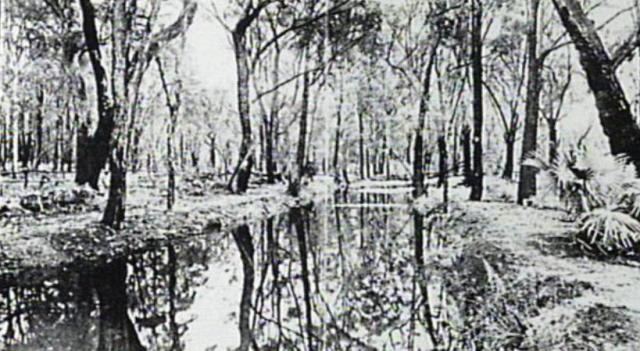
Photograph of Narrabeen Creek and surrounding land that appeared in the brochure advertising sale of land in the Warriewood Estate by Henry F. Halloran & Co. 1906. Image No: WW\WW-004. Courtesy of Mona Vale Library's Historical Images.
Below: Photograph of Warriewood Valley that appeared in the brochure advertising sale of land in the Warriewood Estate by Henry F. Halloran & Co. 1906. Image No: WW\WW-006. Warriewood (N.S.W.); 1906. Courtesy of Mona Vale Library's Historical Images.
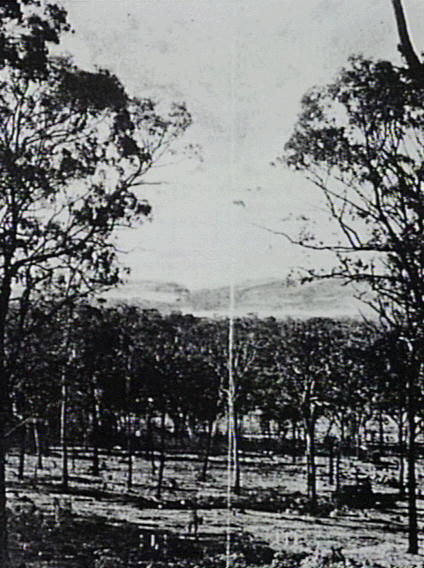
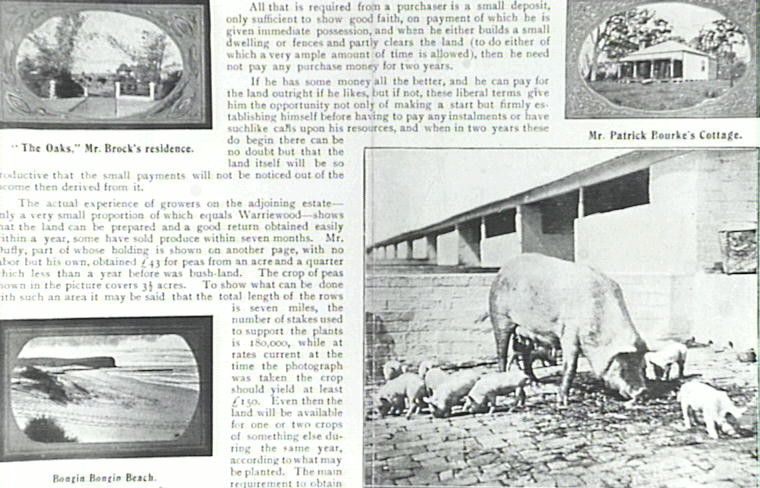
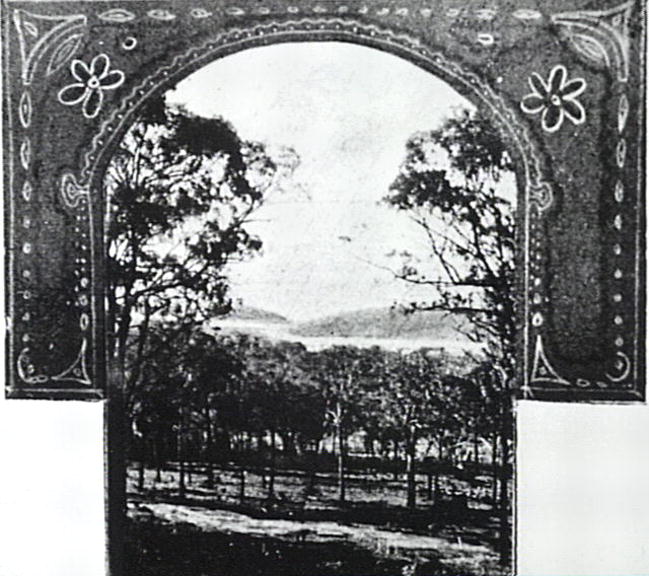
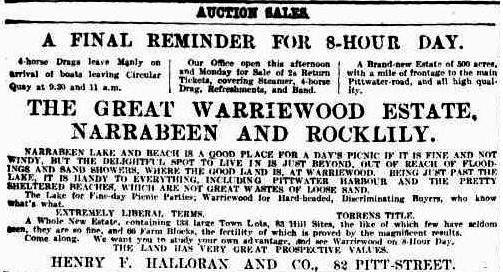
Sales were a day's ‘outing’ and included refreshments and a band ! The 8 Hour Day is now known as Labour Day.
Advertising. (1906, September 29). The Sydney Morning Herald(NSW : 1842 - 1954), p. 22. Retrieved from http://nla.gov.au/nla.news-article14821059

The Warriewood Estate, Narrabeen-Pittwater - Main Pittwater - Item No: c050370133, courtesy State Library of NSW. February, 1906
WARRIEWOOD.
WHAT DOES IT MEAN?
It means a comfort and independence to the industrious at Warriewood. A living area of absolutely the highest class land, with creek frontage, can he obtained, on the easiest of terms — that is to say, £2 deposit and '6s' monthly for each acre. No instalments are required for a year if the purchaser either (a) builds on the land, (b) fences the boundaries, or (c) clears portion of the land.
WHERE IS IT ?
Why close to Sydney, at Narrabeen, about 9 miles from Manly, on that most beautiful coastal road to Pittwater, where the Motor 'Buses are now running.
ITS ADVANTAGES. The best of land, ample rainfall, deep and fer-tile "soil" which retains the moisture, sheltered position, no frosts, early production, fine timber for fencing and building, splendid roads, healthy and beautiful district, grand climate, and a host of others. The agents for the Estate are Henry F. Halloran and Co., 82 Pitt-street, who have a representative on the Estate always, to show pur-chasers around. Plans are now being prepared. Write for one. WARRIEWOOD. (1906, February 25). Sunday Times (Sydney, NSW : 1895 - 1930), p. 2. Retrieved from http://nla.gov.au/nla.news-article126569797

The climate is so salubrious, and the temperature so mild and even, that all plants and flowers flourish with luxuriance and come to maturity and bear some weeks earlier than in other districts around Sydney, with the consequent high prices always paid for early products of good quality.
There is almost an entire absence of frost, as proof of which it may be stated that as many as three crops of potatoes have been obtained in one year from the same piece of land.
…Fine timber, including Ironbark, Stringybark, Grey Gum, Turpentine, Mahogany, Forest Oak and others are available in plenty for building, fencing, firewood and other purposes. Many of the trees are very fine and were pushing their leaves to the sunlight long before Captain Cook landed.
The fine coastal rainfall here is ample for all requirements, and the excellent loamy soil possesses that grand characteristic of retaining the moisture for much longer than ever happens between rains; the surface never cakes or bakes, so that even in what might be termed a dry season all vegetation continues to flourish, and droughts as experienced in the country districts are quite unknown." From Brochure Henry Halloran & Co, The Great Warriewood Estate, 1906.
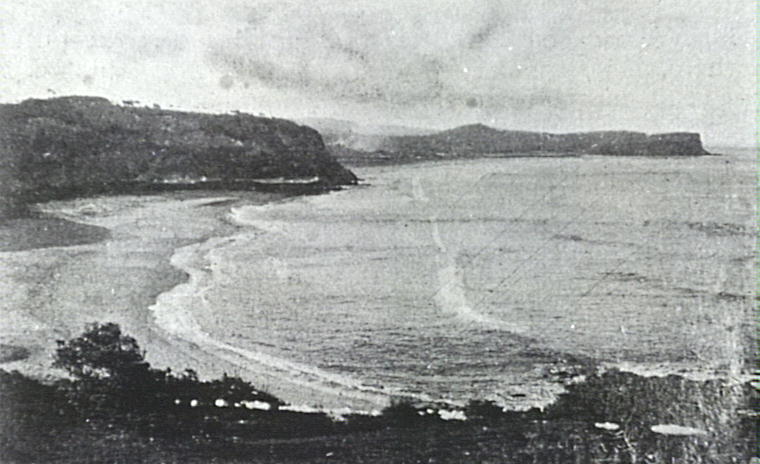
Photograph of Warriewood Beach that appeared in the brochure advertising sale of land in the Warriewood Estate by Henry F. Halloran & Co. 1906

Above Great Warriewood estate page 1, Item No.: c050370098 and Below The Great Warriewood estate 1906, page 2, (back of flyer) Item No.: c050370097, Narrabeen Subdivisions Album, courtesy State Library of NSW


The Great Warriewood Estate - Narrabeen - Macpherson St, Vineyard. Item No.: c046820014, courtesy State Library of NSW.
The Sales; PROPERTY MARKET. Messrs. Henry F. Halloran and Co. report a successful sale of the Warriewood Estate on the ground at Narrabeen and Rocklily, on Monday, when there was an excellent attendance and fair competition. 25 township lots were sold at from 11s to 25s per foot, 13 hill sites at from £00 to £72 10s each, and13 farm blocks at from £20 10s to £35 per acre. Total sales. £3571. PROPERTY MARKET. (1906, October 3). The Sydney Morning Herald (NSW : 1842 - 1954), p. 11. Retrieved from http://nla.gov.au/nla.news-article14803817
After that first 8 Hour Day sale, the sales pitch continued - focused on
ON THE LAND. HOW TO GET A FIRST QUALITY BLOCK. LARGE CAPITAL NOT NECESSARY. NO INSTALMENTS REQUIRED FOR TWO YEARS. NO IRRITATING GOVERNMENT ROUTINE. THE WARRIEWOOD FARM BLOCKS.
At a time like the present, when the above question is of absorbing- interest, the placing of such an Estate as Warriewood en the market must attract widespread interest, as it solves a great difficulty for those searching for land who do not possess a large amount of ready-money, and where not only can possession of the land be obtained without any delay, but the return of some profit is yielded from the land within a few months. The Warriewood Farms contain soil of an extremely high quality, suitable for the most approved and successful schemes of intense culture, therefore the farms range from about two acres, but a block of 100 acres can be made up if required. Official analyses of the soil by the New South Wales Department of Agriculture show it to be richer in fertilising ingredients than the famous Richmond River soil. All that is required from a Purchaser is a small deposit, only sufficient to show good faith, on payment of which he is given immediate possession, and when he either builds a small dwelling or fences and partly clears the land (to do either Dfwbich, a very ample amount of time is allowed), then he need not pay any purchase money for two years. If he has some money all- the better, and he can pay for the laud outright it' he likes, but if not, These liberal terms give him the opportunity not only of making a start, but firmly establishing himself before having to pay any instalments or have such like calls upon his resources; and when in two years these do begin, there can be no doubt but that the land itself will be so productive -that the small payments will not be noticed out of the income then derived from it. The 'actual 'experience 'of growers on the adjoining Estate — only a very small proportion of which equals Warriewood— shows that the land can be ' prepared- and a good return obtained easily within a year. Some have sold produce within 7 months. Mr. Duffy, with no labor but his own,' obtained £43 for peas from an acre and a quarter, which, less than a year, before, was bush land. Even then the land is available for one or two crops; of something else during the same year, according to what may be planted. The main requirement to obtain this result is health, and strength, for the expense outside labor is exceedingly small.
Another grower right on the Warriewood boundary has actually received £22 from almost a quarter of an acre of peas, and other crops have given exceedingly good returns. From this it must be clear that this land is something out of the common and well able to - support a man and his family; and it is certain the lenders could not offer such easy terms unless they felt certain of purchasers finding it to their advantage to remain on the land once they got there.
It may be added that the terms of payment extending in all over a period of ten years, while purchasers have the option of paying off the whole or any part at any time, and here, again, it may be said, that the Vendors in allowing so long a period, know full well the desire : of nearly all men to make their holdings free as soon as possible, and are certain the wonderful fertility of the land will enable them to do this in much under ten years if they care to do so. All the Farm Blocks are situated in a sheltered vale, intersected by the Narrabeen and Fern Creeks, being protected from the easterly and northerly winds by the Ridge on which the Hill Lots are situated, and from the westerlies and southerlies (.the worst winds) by a high range of rocky hills a short distance away from the Estate boundaries. The climate is so salubrious and the temperature so mild and even that all plants and flowers nourish with luxuriance, and come to maturity and bear some weeks earlier than in other districts around Sidney, with the consequent high prices always paid for early products of good quality. There is almost an entire absence of frost, as proof of which it may be stated that as many as three crops of potatoes have been obtained in one year from the same piece of land. The.- soil is a very rich black, deep, slightly Sandy loam of the land so prized by nurserymen, and easily worked. So rich is it that even in its virgin: uncultivated state the verdure is almost tropical, as can be seen by the natural Palm Groves, on the Estate. The subsoil is of a very porous nature for a considerable depth, affording natural drainage. The Estate being so handy to the City by a first-class road, growers can take their own produce to market, thereby saving all freight and agency charges, and getting the full benefit of prices obtained, without having to employ or trust any agent or dealer. At the same time all necessaries can be purchased at the best and cheapest City shops. Fine, timber, including iron bark, stringy bark, grey gum, turpentine, mahogany, forest oak, and others are available in plenty for building, fencing, firewood, and other purposes. The fine coastal rainfall here is ample for all requirements, and the excellent loamy soil possesses that grand characteristic of retaining the moisture for much longer than ever happens between rains the surface never cakes or bakes, so that even in what might be termed a dry season all vegetation continues to flourish and droughts as experienced in the country districts are quite unknown.
The Rocklily Estate, adjoining Warriewood, which was recently subdivided, giving the first opportunity for land to be secured in this district, was'- nearly all snapped up within an incredibly short space of time. Some parts of it adjoining Warriewood are good lots, but a large portion is inferior to Warriewood, which is all good. A large number of families are already settled on the Rocklily Estate, but now that Warriewood, with 70 Farms, in addition to the Township and the Hill Lots, is available, rapid progress is assured.
Even the development of the smaller Rocklily Estate caused the Public School to be removed from Bayview to hard by the Estate, and resulted in the Post-office being placed in a higher class. The powers that be have realised the possibilities of this hitherto locked-up but magnificent district, and nothing can now bar it from making rapid strides along the path of progress. The Estate was tested for water during the driest known season by a well sunk at random on one of the easy slopes well away from creeks, &c, and a plentiful supply of good fresh water obtained. It has been said with much truth that 5 acres here is better, easier, more satisfactory, and more profitable than 500 in the back country, and it affords as well all the advantages and occasional pleasures of the healthy suburban life so desirable for the proper rearing of a family. There are also some fine main road Town Lots for sale, and beautiful elevated Hill Sites most suitable for week-end and holiday residences, close to fine ocean beaches, Narrabeen Lake, Pittwater, Harbor, &c, &c. A postcard will bring a free plan,, .illustrated Art Booklet, and price list by 'return post. A Representative of the Auctioneers, Messrs. Henry F. Halloran and Co., 82 Pitt-street. Sydney, Is on the Estate every day and all day, to show purchasers around. Run down by Motor Bus at the weekend. ON THE LAND. (1906, October 7). Sunday Times (Sydney, NSW : 1895 - 1930), , p. 2. Retrieved from http://nla.gov.au/nla.news-article126562172
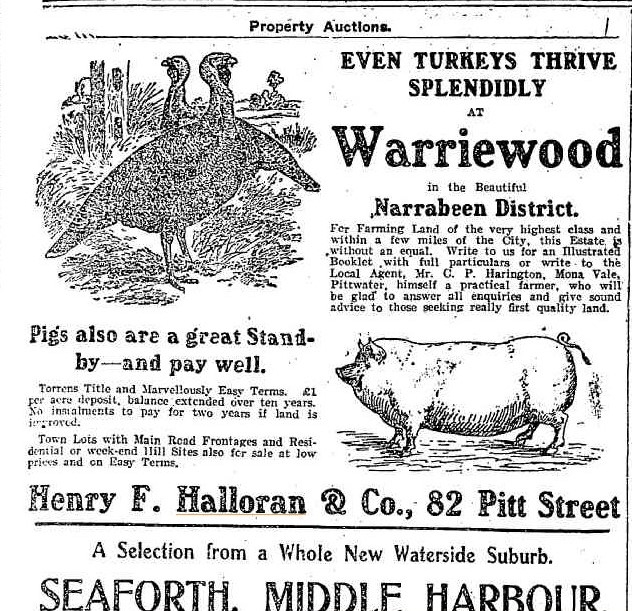
Sunday October 14th, 1906 Sunday Times advertisement
What is also interesting about Warriewood Beach being named that through these advertisements, similar to what was at Clareville- and Avalon during earlier subdivisions of both, is both old and new names being used for the areas of sand meeting ocean. For instance Warringah Shire Council minutes of Meetings record, even into 1921:
21/3/1921: That the Contract, contract for the supplying of spalls from Sheep Station Beach be given to N. Z. Douglas, instead of to Douglass and Mackenzie, as resolved at last meeting.
28/6/1921: Three tenders were received for the supply of 500 yards of spalls from Sheep Station Beach.
1/7/1921: That N.J. Walls Tender for the Supply of 500 cubic yards of spalls from Sheep Station Beach at 6/4d a yard be accepted.
Spall are flakes of a material that are broken off a larger solid body; a splinter or chip, especially of rock - probably used in these instances as a base for roads and road building. Where was Sheep Station Beach though? At Warriewood or at the southern end of what we today call Mona Vale Beach where that meets the southern perimeter of Mona Vale Hospital? Mona Vale Beach itself was also, then, referred to as 'Bongin Bongin Beach' into the 1920's.
NARRABEEN LAND.
Messrs. Henry F. Halloran and Co. report that the opening of the tramway continues to cause a big demand for land at Narrabeen. During the past twelve months' between £8000 and £9000 worth of land in the Warriewood Estate has been sold. REAL ESTATE. (1912, September 6). The Sun (Sydney, NSW : 1910 - 1954), p. 5 (FINAL EXTRA). Retrieved from http://nla.gov.au/nla.news-article228825536

Narrabeen - 10 Residential Lots & 4 Farm Blocks 2 x 7 acres, 1x 9 acres, 1 x 11 acres, Item No.: c050370240, from Narrabeen Subdivision Plans Album courtesy State Library of NSW
Further Macpherson land sales show the progression of the grants given as land to subdivisions that will be the backayrds of suburbia

TRAM WAY CONNECTION WITH NARRABEEN.
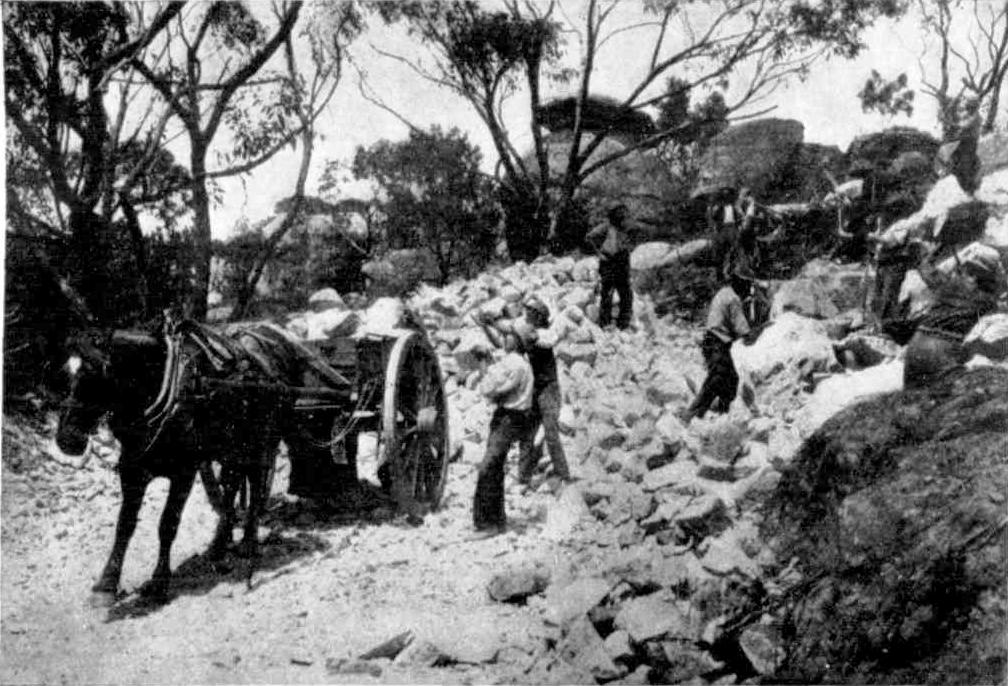
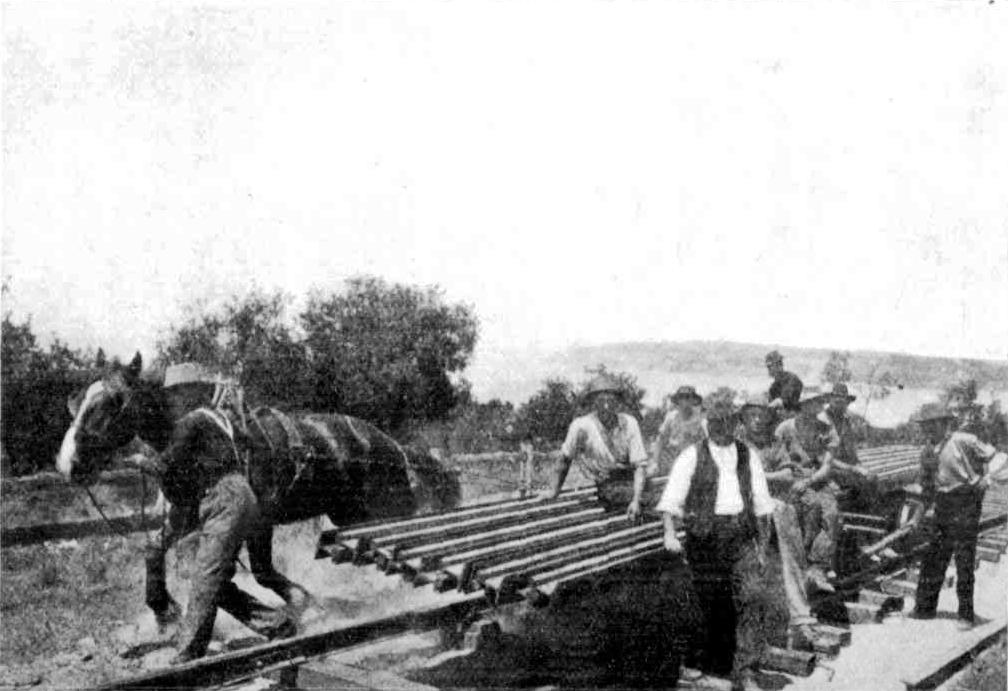
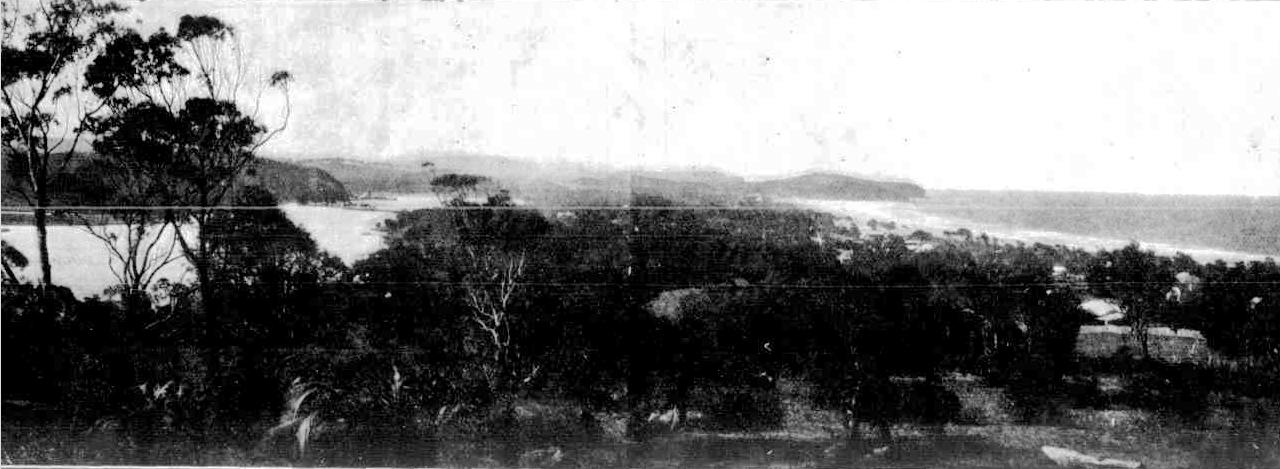
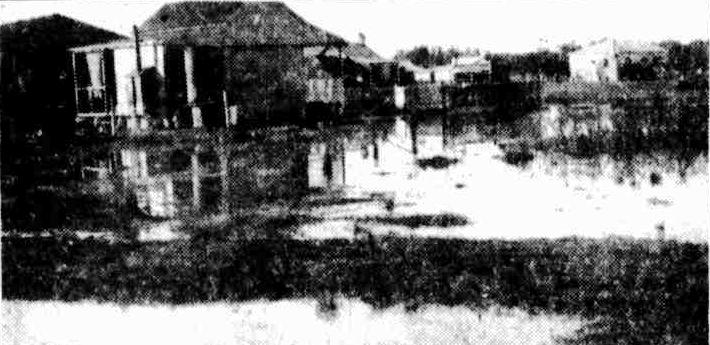
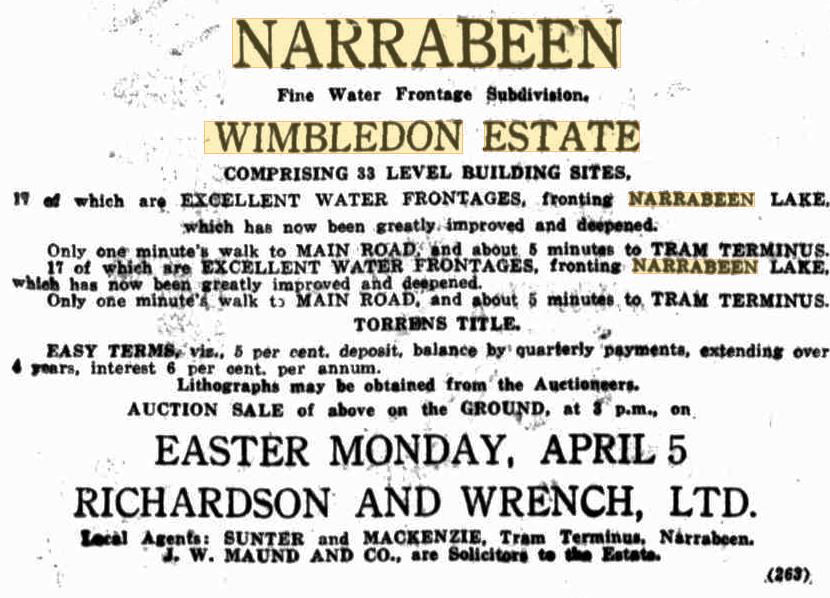
Further up the hill - Ingleside and 'Green Hills' as well as Elanora will run as stand alone pages - this is a marker to show the opening of the tram line was a ctalyst for farmlands turning into suburban blocks and smaller farms:
NOTICE UNDER REAL PROPERTY ACT.
APPLICATIONS having been made to bring the lands hereunder described under the provisions of the Real Property Act, Certificates of Indefeasible Title will issue, unless Caveats be lodged in accordance with the Third Schedule to the said Act on or before the 27th August, 1913:
No. 18.137. APPLICANT: James Wheeler, Narrabeen. LAND: County Cumberland, parish Narrabeen, shire Warringnh, 109 acres 20 perches, on Pittwater and Gordon roads, at Narrabeen Lagoon, part land granted as 86 acres (portion 52. parish), to James Wheeler; adjoining properties of G. Sherring and J. Ingall, A Griffith, C. A. De Kantzow, G Powell, R. L. Walsh, J. T. Schecker, F. Francois, T. Watts, H. Shipp. A. J. Sheaves, J. E. Meller, Miss B. Munro, C. E. Ramsbotham, E. Young, A. Young, J. H. Mundy, C. Higson, A. Taylor. P. Fowler, P. Morrice, F. Eklum, J. Corless, T. H. Macpherson, and applicant. NOTICE UNDER REAL PROPERTY ACT. (1913, July 9). Government Gazette of the State of New South Wales (Sydney, NSW : 1901 - 2001), p. 4268. Retrieved from http://nla.gov.au/nla.news-article227051136

Ingleside heights 900 acres. Item c050370067 courtesy State Library of NSW - Narrabeen Subdivision Plans
LOT 4 NARRABEEN, 249 ACRES OF LAND, upon which is erected a substantial and well finished STONE and WB RESIDENCE, which contains extensive accommodation, also a number of outbuildings and a large quantity of building materials
The Property is known as "INGLESIDE," the residence of Mr WATKINS and formerly the residential portion of the Powder Company s property. There is a large brick and cement reservoir, with a capacity of 1,000, 000 gallons The water is laid on to the House Stables etc.
A SPLENDID BLOCK FOR SUBDIVISION PURPOSES having a large frontage to Lane Cove and Pittwater roads, and road leading to Narrabeen. Immediately opposite Mr Larkin's Orchard THE TITLE IS TORRENS. Plan on View at the Salerooms. Advertising (1912, January 20). The Sydney Morning Herald (NSW : 1842 - 1954), p. 25. Retrieved from http://nla.gov.au/nla.news-article15303595
Sheep Station Hill And Beach
The origin of the name for this hill now is obscured, as seen above, possibly the section of beach parallel with where the hospital or what we today call Warriewood Beach, was originally known as 'Sheep Station Beach'. Former Pittwater Council Mayor and Councillor David James recalls this rise being named Sheep Station Hill as a teenager and that you could just tell the bus driver you want to alight at Sheep Station Hill and they would know where you meant. Mr. James sheds a little light on a possible answer as to where the name may have derived from;
I have a remembrance that at some point in the early development of the sheep industry in NSW the coastal areas were tried out and failed due to the prevalence of foot rot caused by the damp conditions that the sheep species of the day could not cope with. Something about running them on waterlogged or swampy ground, which part of that Jenkins land grant including the (now called Warriewood) Wetland and surrounds.
I think it may prove to be in the end more a folk memory, which is still an authentic source of history, of a failed attempt at sheep industry that was tried in the coastal regions. Fluke or liver disease is another supposed reason that early attempts at sheep did not succeed on the coast and had to await movement by the Macarthurs to the Camden and Parramatta areas (higher and better drained land). Also the only salt tolerant native grasses on the coast (femita species or kangaroo grass) while being useful as fodder were slow to regrow after grazing and soon were eaten out.
The Pittwater Offshore Newsletter's historian, Leicester Warburton, offers another insight into the use of this hill;
It is true that for a few years crime did continue to stain the fair name of beautiful Pittwater. For many months detectives were continually sent there. At one time six were reportedly camped on nearby Sheep Station Hill to watch for trouble. But, finally, active crime ceased and the district settled down to the quiet it still enjoys. Leicester Warburton. Pittwater Offshore Newsletter. Volume 9, Issue 113; January 2006
Many people tell of the outlook from this rise which shows you the lovely valley of Warriewood stretched to the western horizon and a lovely view south to Narrabeen. This hill also was well known for its steepness though;
“…So jaded were the horses at the holiday season that it was sometimes necessary for travellers to get out of the coach at steep grades and help push it up hills. This happened at Sheep Station Hill, beyond Narrabeen." JSN Wheeler, 1941.
Sheepstation lookout: If you look diagonally across the sport fields, to the northwest, you will see Sheepstation Hill, separating Warriewood and Mona Vale. Before a cutting was made for Pittwater Road, it climbed up and over the steep slope. In the 1880s, coach travellers to Pittwater had to dismount at the foot of the hill to help push the coach to the top.
With its highly fertile soil, Warriewood is an area with a long history of farming. In 1829 a 350 acre parcel of land was granted to James Jenkins who established Cabbage Tree Hill farm.
This section was held in the Jenkins family, with daughter Elizabeth owning this land. The land fronting Warriewood Beach was originally promised to Alexander McDonald in 1813, followed by promises to McDonald of more land fronting Mona Vale and Turimetta beaches in 1816 and 1821.
In 1821 James Jenkins' friend Alexander McDonald (also spelled MacDonald) died, leaving 200 acres of land at North Narrabeen to Jenkins’ eldest child, Elizabeth. Apparently McDonald, his wife and his son-in-law drowned when their boat overturned on the Parramatta River on December 21, 1821, during an inebriated quarrel.
Shelagh Champion, OAM, B.A.(Lib.Sc.) and George Champion, OAM, Dip.Ed.Admin, in their Profiles of the Pioneers in Manly, Warringah and Pittwater (2013 Revision) state that Alexander Macdonald was a private marine who arrived in the First Fleet, on the Friendship. A son, James, was born on 5th September 1789 to convict Mary Phillips, who reared him on Norfolk Island. James’ father, Alexander Macdonald, did not go to Norfolk Island.
Alexander Macdonald received a 130 acre grant at Field of Mars in January 1792, and married Mary Oliver on 18 March. He was a successful farmer, and received further grants of land. He was promised 60 acres on or before 30 October 1813. On 26 September 1815 Meehan surveyed an unstated number of acres for Alexander Macdonald just north of Narrabeen Lagoon. On a list dated 16 January 1816, the grant at North Harbour was directed to be enlarged to 80 acres “including what is already listed for him there”. Meehan did not re-measure this grant when he visited the area in 1821, and uncertainty as to its size led to later confusion and litigation as to the exact location of the western boundary. When the grant was surveyed with greater accuracy many years later it was found to contain 68 acres, which sounds remarkably like Meehan’s generous 60 acres. [LTO SN30/167]
On 8 July 1820 Macdonald petitioned Governor Macquarie for more grazing ground. He had 147 head of horned cattle, and found the quantity of land he held at “Naraboine” not sufficient to graze them on, as, he said, he had thirty acres out of the 100 in cultivation, and no water in a dry season. The “100” should read 80, but in fact it was smaller still; little wonder that he did not find it large enough! 60 acres more were ordered for him on 31 March 1821.
Mary Macdonald’s daughter, Barbara, had grown up in England, married Thomas Styles or Stiles, and had three children. Encouraged by the inducement of a substantial inheritance, the family arrived in New South Wales in January 1816. On 29 May 1821 Macdonald made a new will, making his wife Mary his heir, but cutting Barbara out of any inheritance. On 8 July 1821 Barbara and Thomas Styles were charged with receiving stolen property. Thomas was acquitted, but Barbara was sentenced to life transportation at Newcastle.
Alexander and Mary Macdonald, with their son-in-law Thomas Styles were all drowned on 21 December 1821, when their boat upset on the Parramatta River as they were returning home to Field of Mars from Sydney market. An inquest was held, the verdict being, “Accidentally drowned, in consequence of the whole party being in a state of intoxication, and quarrelling.” “In that awful state,” moralized the Sydney Gazette, “they sank into eternity.” [Syd Gaz 22 Dec 1821]
Probate of Alexander Macdonald’s will was granted to Quarter Master Sergeant George Macdonald and Sergeant James Smith, both of the 48th Regiment, the executors named in the will. Petitions by Barbara Styles and her children challenging the will were unsuccessful. Alexander Macdonald’s Narrabeen land was left to Elizabeth Jenkins as the eldest child of his friend, James Jenkins.
It fell to Surveyor G.B. White to measure Macdonald’s grants, on 6 September 1827. Meehan had already neglected to re-measure the original grant, which should have been enlarged to 80 acres, during his visit to the area in 1821. White did not measure it either, or he would have found that it was not large enough. Instead, he measured two more grants of 60 acres each, whereas he should have only measured the one promised in March 1821. This extended the land inherited by Elizabeth Jenkins northwards along the coast, to the vicinity of present Mona Vale Hospital. [LTO SN30/165, 30/166] [2.]
Macdonald’s grants were all issued in the name of Elizabeth Jenkins in October 1831.
GRANTS OF LAND. NARRABEEN.
1. ELIZABETH JENKINS, 60, Sixty Acres; described as No. 4 in the Government Notice of 19th September,1831, in the name of Alexander Mc Donald.
2. ELIZABETH JENKINS, 60, Sixty Acres; described as No. 5 in the Government Notice of 19th September,1831, in the name of Alexander Mc Donald.
3. ELIZABETH JENKINS, 80, Eighty Acres; described as No. 6 in the Government Notice of 19th September, 1831, in the name of Alexander Mc Donald.
4. JAMES JENKINS, 50, Fifty Acres; described as No. 1 in the Government. Notice of 29th September, 1831, in the name of Daniel Rowan.
Classified Advertising. (1831, October 13). The Sydney Gazette and New South Wales Advertiser (NSW : 1803 - 1842), p. 1. Retrieved from http://nla.gov.au/nla.news-article2203043
Elizabeth passed away on June 26th, 1900. Her estate was bequeathed to the Salvation Army and despite litigation being brought by family members that went on for years, became theirs.
JENKINS.—June 26, at her residence, Long Reef, Pittwater-road, Miss Elizabeth Jenkins, aged 82 years. Family Notices (1900, June 27). The Sydney Morning Herald (NSW : 1842 - 1954), p. 1. Retrieved from http://nla.gov.au/nla.news-article14320291
Newspapers far and wide covered the case - two early examples from soon after Miss Jenkins passed away give details of her dealings with other residents and who was looking after her assets prior to that being transferred to the Salvation Army to oversee as well as a few details of land values from one who conducted the January 1897 Rocklily Land Sales:
THE JENKINS WILL CASE.
EXTRAORDINARY EVIDENCE.
Sydney, November 13. A disputed will case, in which the Salvation Army is concerned, came before Mr. Justice Walker in the Probate Court today. The plaintiff is Jno. Hendry, one of the executors of the late Miss Elizabeth Jenkins, of Long Reef, Manly, and the respondent is Phillip Jenkins, a nephew of the testatrix, who entered a caveat against the will.
The will is dated 27th of July, 1894, and it appointed Thos. Sales Coombs and John Hendry, Melbourne, executors. By it all the property was bequeathed to the Commissioner of the Salvation Army in Australia. The estate comprises about nine hundred acres at Narrabeen and interest in three allotments at Manly. Sydney. November 14. The action in which Philip Jenkins disputes the will of his aunt, Elizabeth Jenkins of Longreef, near Manly, who bequeathed her estate, said to be valued at about £40.000, to the Salvation Army in Australia, was resumed at the Probate Court today.
Philip Jenkins, caveator said that Miss Jenkins used to lead a very quiet life, but in late years the members of the Salvation Army were continually about the house. Her faculties appeared to be getting weak, and she could not speak of anything without mixing it up with religion. She studied a book called "Baxter's Prophecies." The end of the world, she said, was near at hand, and there was no good in people following their ordinary avocations. She never expected to die, but to be translated. She also used to rail against marriage and the sin of children being brought into the world to serve the devil.
Daniel Farrar. a resident of Manly. said that he knew the testatrix for 30 years, and regarded her as a mad woman. She had a mania about religion. She said she was an angel who had no need to go to church, and would go straight to heaven alive. He, with others, offered Miss Jenkins £40.000 for a portion of her estate at Longreef. which was of iron-stone formation and very valuable, and she promptly refused. He valued Miss Jenkins's property at Narrabeen at £100,000.
Chas. Herach a gardener and florist. said he at one time was a member of the Salvation Army and that body could get anything it wanted from Miss Jenkins. Alfred John Phillips. the manager of the Manly branch of the A.J.R. Bank, said Miss Jenkins gave him to under-stand that the Salvation Army had been kind to her during the financial crisis in 1893. The further hearing of the case was adjourned till to-morrow. THE JENKINS WILL CASE. (1900, November 15). The West Australian (Perth, WA : 1879 - 1954), p. 5. Retrieved from http://nla.gov.au/nla.news-article23847689
THAT OLD LADY'S WILL.
DISPUTED BY HER NEPHEW. PROCEEDINGS CONTINUED.
The hearing of the suit respecting the will of the late Miss Elizabeth Jenkins, of Long Reef, near Manly, who died in June last, was resumed yesterday, before the Probate Judge (Mr. Justice Walker). The plaintiff in the case, which involves about £5000 worth of property at Narrabeen and Manly, is John Hendy, one of the executors of the will, and the defendant Philip Jenkins, a nephew of the deceased. Hendy had applied for probate of the will to be granted to him, which application was opposed by Jenkins, on the grounds that at the time of making the will the deceased was not of sound mind, memory, and understanding; that she did not know and approve its contents; and of alleged undue influence on the part of certain members of the Salvation Army.
John Henry Eaves, in reply to Mr. Langer Owen, said he had resided in Manly for the last fourteen years, and knew Miss Jenkins well. He saw her very frequently up to three years ago. About seven years ago she used to visit his house, having taken a fancy to his wife and children. His opinion of Miss Jenkins was that she was a strong-minded woman. He carried on business as a watchmaker at one time, and occasionally she came to do business. Only once or twice did she speak to him about religion. She seemed to be a well-read woman, and one who had a thorough grasp of anything she had read. Witness belonged to the Church of England, and on one occasion Miss Jenkins remarked to him that she did not like his church. She appeared to have a great liking for the Salvation Army, and referred more than once to the good work they were doing, going about among the slums. She wore a man's watch, and once or twice brought it to him for repairs.
To Mr. Sheridan: Miss Jenkins was a very religious woman — at least, from her conversations with him that was the opinion he formed of her. He never heard Miss Jenkins speak about marriage or of a future state.
William Andrew Harper stated that he resided at Curl Curl, and had known Miss Jenkins during the past 19 years. Up to 1892 witness and his wife and Miss Jenkins visited each other's house occasionally. In their conversations she was well able to hold her own, and, as far as he could see, she was an exceptionally strong-minded woman. She had independent opinions, and generally ex-pressed them. In her conversations with him, she never touched religion at all. In 1894, he noticed that she was certainly weak, but for a woman of her age she was stronger than one out of every 50 women.
To Mr. Sheridan: Miss Jenkins never quoted the Bible to him. He believed she did to others — to his wife occasionally. John Walker Purves stated that he carried on a bakery business at Manly, where he had resided for ten years. Miss Jenkins was a customer of his, and from 1890 to 1897 generally came to the shop twice a week, sometimes remaining to chat for a quarter of an hour. He was a shareholder in the Australian Banking Company, and remembered it going into liquidation. Miss Jenkins and he had several conversations about the bank's failure. She appeared to him to thoroughly under-stand the whole business, which they discussed at some length at times. Her conversations were always connected. Now and again she introduced religion, but not often. Once or twice she remarked that she would not like to go through the world again, and that she was sorry for young people who had to go through life. He never saw anything to lead him to believe that Miss Jenkins was not a reasonable and sensible woman.
To Mr. Sheridan: Miss Jenkins told him that she had sold her property to the Army. She never mentioned "Baxter's Prophecies" to him, but he remembered her once remarking that the end of the world was near.
Arthur Wigram Allen, a member of the firm of Messrs. Allen, Allen, and Hemsley, solicitors, said that the firm at one time, and for many years, conducted Miss Jenkins's business for her. He knew her very well, and up to 1894 had had many business conversations with her respecting her property. A deed respecting the transfer of a few acres of land from Miss Jenkins to the Salvation Army in 1890 was prepared at his office, under directions from Miss Jenkins. As far as he could see Miss Jenkins thoroughly understood what she was doing when she gave him instructions to draw up the deed.
In 1894 Miss Jenkins called at the office with a Mr. Hendy, and told him that she wished to have a list of all the papers respecting her property prepared, saying that she was going to hand them over to Mr. Hendy to keep for her. He refused to hand over certain papers, at which she did not seem pleased. He took his instructions from Miss Jenkins, not Mr. Hendy. Subsequently he handed over certain deeds to Mr. Walker. He never saw Miss Jenkins after July, 1894.
Ernest Broughton, auctioneer and land valuer, said he had had practical experience of land values at Manly since 1885. He knew Miss Jenkins's property, having been over it and inspected it. The nearest portion of Miss Jenkins's property was about five miles from Manly. In 1894 he reckoned 700 acres of the land to be worth £6 per acre on an average. The residue of the estate, 327 acres, he valued on an unimproved basis at £2 10s per acre. Practically the value of the property in 1894 was £5000. Outside land in that year was almost unsalable, and loans on property were almost unobtainable. The valuation in 1894 was irrespective of the old homestead on the property. He considered that the property at present was worth 15 per cent. more than it was in 1894.
To Mr. Wise: He knew of the Mount Ramsay property. Some of it was better than Miss Jenkins's; some of it being of a similar nature to hers. He considered £60 an acre an excessive price for a block of land on that property, and three-quarters of a mile back from the road. He had no recollection of any sale in 1896 of Government land adjoining Miss Jenkins's property on the Manly side, and half a mile back from the road.
In January, 1897, he conducted a sale of Government land about four miles further on, adjoining the Rock Lily Hotel. He could not say whether the Long Reef property had a special value for minerals or not. Some ridiculous suggestion was made regarding an iron mine on it, but he knew nothing about kerosene or anything else in the way of minerals.
Samuel Bennett said he had lived in Manly about 48 years, for 40 of which he had known Miss Jenkins. He saw a good deal of her from 1890 to 1897. She was in the habit of frequently visiting his house during the time he was acquainted with her. She used to say some queer things about marriage, which she said she did not believe in, perhaps because she was not married herself. Miss Jenkins always knew what she was talking about, and appeared to be quite capable of looking after her own business.
To Mr. Wise: Witness, continuing, said he never heard Miss Jenkins say she was an angel, but he believed she expected to be one. He did not belong to the Salvation Army, but at one time his son was a member of it. He once said that Miss Jenkins was insane on some points — he took it they were all more or less insane in some things — but he did not know the meaning of the word insane at the time. He was sorry afterwards for using the expression to the persons he did.
Henry Gorman, of the firm of Hardie and Gorman, auctioneers, said he knew Miss Jenkins's properties at Narrabeen, and had inspected them. He had had considerable experience in properties adjacent to Miss Jenkins's land. Owing to the bank failures, it was almost impossible in 1894 to raise money on loans for land of unimproved values. In that year he would place the value of the 200 acres at £5 per acre; 500 acres he valued at an average of £4; and that portion known as "Collins" (327 acres) at £3 per acre. About 33 acres near the lagoon he described as "wretched stuff," and put the value of it down at £3. In 1894 it was impossible to sell land of that description.
At the present time he valued the 500 acres and the 200 acres at £8 per acre, Collins's farm at £5 per acre, and the 33 acres at £4, making a total value for the 1060 acres of £7367.
To Mr. Sheridan: He should think 10 acres of the best of the land was worth £20 to £25 per acre. The whole of Long Reef Point was not worth more than £2 per acre. William Clark Benton, late proprietor of the I.X.L. Laundry at Manly, said about nine years ago his wife and he were in the employ of Miss Jenkins for three months. As far as business transactions were concerned all arrangements made by her turned out for the better. In 1893, two years after he left her employ, she told him that she had lost all her money, and said she was sorry she had not given it to the poor.
To Mr. Wise: He had often heard Miss Jenkins speaking to his wife about religion. On one occasion he heard her say she wished the Lord would lower the chariot to take her to glory. She had a terrible down on marriage, and people bringing children into the world to serve the devil. On occasions when he was to drive Miss Jenkins into Manly, he would be ordered to gather a sack of oranges before they started. On the way to Manly she would throw the oranges out one by one from each side of the cart.
To Mr. Pilcher: In all commercial business transactions as far as he had opportunity to judge she was perfectly sane, but in other respects — (Witness concluded with a knowing shake of the head.)
Dr. David Thomas stated that he had resided at Manly for the past ten years. Miss Jenkins, in the course of a conversation, mentioned that she would probably require him to attend her, as she was getting an old woman. It struck him, particularly during that conversation, that Miss Jenkins had a decided dislike to Roman Catholics, while she was a great admirer of Jews. She was absolutely capable of transacting any business, or looking after her affairs.
To Mr. Wise: Of a number of statements which were attributed to have been made by Miss Jenkins, the only one consistent with insanity was her saying that she was an angel. He should say she was not of sound mind if she called a Jewish laborer Jesus Christ, and he most assuredly was of opinion she was not of sound mind if she called General Booth Elisha.
To Mr. Pilcher: In his opinion Miss Jenkins was quite capable of propounding a will.
To His Honor: From his own personal observations Miss Jenkins was sane, and quite capable of transacting business.
Francis Abigail said he first became acquainted with Miss Jenkins about 1886. He was then chairman of the Australian Banking Company. Miss Jenkins was a shareholder in the bank, and used to visit at his house. He always thought her a woman of very keen intellect. Miss Jenkins often spoke of the good work done by the Army, and in 1888 had told him she had given them a piece of land at Narrabeen. As far as he could judge from her manner and demeanor he should say she was a very keen-minded woman, and also a woman of strong mind. She struck him as being a genuinely religious woman. To Mr. Wise: In 1885 he bought 100 acres of land from Miss Jenkins, for which he gave £3000. The case stands part heard. THAT OLD LADY'S WILL. (1900, November 20). Evening News (Sydney, NSW : 1869 - 1931), p. 3. Retrieved from http://nla.gov.au/nla.news-article114005525
In 1912, some of these parcels of land were brought under the Real Property Act - the development of the tram to Brookvale, then extensions to Collaroy and finally Narrabeen were occurring during this time and one of their first land sales actually coincided with the same day the tram opened:
'The tramway to Narrabeen was built in 1911-12 and opened for traffic on Eight Hours' Day, 1912. On that day the Salvation Army held its first sub-divisional sale, when land adjoining Collaroy Beach averaged over £5 a foot. Conditions of that sale — and of all subsequent subdivisional sales— were that all fences erected must be approved by General William Bramwell Booth, and that the purchasers and the registered proprietors for the time being must not sell, permit to be sold, or connive at or be parties to the sale of any intoxicating liquors on the land. In addition, there was a condition in respect of the first sale prohibiting the carrying of liquor In the land.' MIGHT HAVE HAD £250,000, BUT GETS £210- A WEEK (1928, November 3). Smith's Weekly (Sydney, NSW : 1919 - 1950), p. 2. Retrieved from http://nla.gov.au/nla.news-article234382625 - in Full under Extras
Notice under Real Property Act.
APPLICATIONS having been made to bring the lands hereunder described under the provisions of the Real Property Act, Certificates of Indefeasible Title will issue, unless Caveats be lodged in accordance with the Third Schedule to the said Act, on or before the 1st May, 1912 :—
No. 14,163. APPLICANT: William Booth. London, England. LAND :—County Cumberland, parish Manly Cove, shire Warringah, 45 acres, 177 acres 1 rood 30 perches, 3 acres 3 roods 5 perches, 314 acres 2 roods, 96 acres 2 roods, and 191 acres, on road from Manly to Pittwater, on Deewhy Lagoon, and on Pacific Ocean, at Long Reef,—parts lands granted as 500 acres (portion 1,218 of parish), to William Cossar, and 200 acres (portion 1,219 of parish), to James Jenkins; adjoining properties of G. Wheeler, C. A. Lintott, J. Minett, H. J. Simmons, M. J. Jacob, G. Gillott, J. Murray, C. De C. Green, I. Ashman, M. A. Strange, S Ashman, E. M. Rowe, R. Cowlishaw, W. De Rusett, H. M. Brown, E. Barry, W. T. McBride, J. W. Williams, A. M., D. C., and E. H. Lintott, F. Herridge, M. Corkery, R. Brady, Dr. R. Bowman, S. W. Bloom field, F. P. Wilkinson, E. Ellis, estate of W. H. Paling, J. Davidson, A. T. Holdsworth, A. Smithson, T. H. Green, S. J. Twight, Mrs. C. A. Iredale, and Mrs. M. M. Calvert. NOTICE UNDER REAL PROPERTY ACT. (1912, March 13). Government Gazette of the State of New South Wales (Sydney, NSW : 1901 - 2001), p. 1685. Retrieved from http://nla.gov.au/nla.news-article227590187
NARRABEEN.
A representative gathering of residents of Narrabeen was held in the local Progress Association room on Saturday evening last for the purpose of making arrangements for the opening of the tramway. Councillor E W Quirk occupied the chair, and it was decided, on the motion of J G Lockley, seconded by Alderman George Walker, to ask Mrs Griffith, the wife of the Minister, to perform the opening ceremony, and it was further decided to arrange a picnic for the occasion. NARRABEEN. (1912, May 29). The Sydney Morning Herald(NSW : 1842 - 1954), p. 20. Retrieved from http://nla.gov.au/nla.news-article15350948
More about Mr. Lockley can be read in: Roads To Pittwater: The Wakehurst Parkway Along Old Oxford Falls Track
The Warriewood - Sheep Station Hill lands:
NOTICE REAL PROPERTY ACT.
APPLICATIONS having been made to bring the lands, hereunder described under the provisions of the Real Property Act, Certificates of Indefeasible Title will issue, unless Caveats be lodged in accordance with the Third Schedule to the said Act on of the 24th July, 1912:—
No. 14,164. APPLICANT:—William Booth, London, England. LAND:—County Cumberland, parish Narrabeen, Shire Warringah, 259 acres, on Pacific Ocean and Narrabeen Lagoon; and on Manly to Pittwater-road,—lands granted as 60 acres (portion 13 of parish) 60 acres (portion 14 of parish), and 80 acres (portion 15 of parish) to Elizabeth Jenkins, exclusive of road 1 chain wide from Manly to Pitt water, and resumed road 1 chain wide near Narrabeen deducted from W. Booth and trustees of E. H. Macpherson and Crown Land. NOTICE UNDER REAL PROPERTY ACT. (1912, June 5). Government Gazette of the State of New South Wales(Sydney, NSW : 1901 - 2001), p. 3564. Retrieved from http://nla.gov.au/nla.news-article221608059
CONNECTING CITY AND SUBURBS.
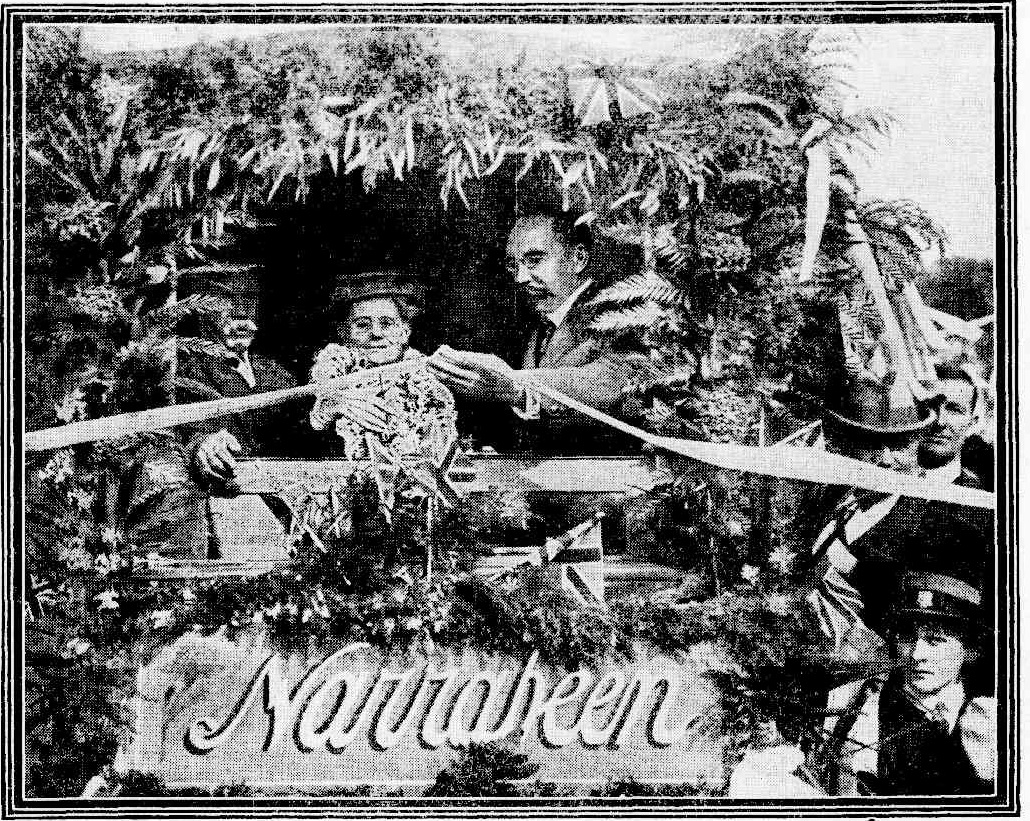
Mrs M’GOWEN (WIFE OF the PREMIER) cutting the ribbon, and declaring the new tramway extension from Manly to Narrabeen open for traffic. Mr. Arthur Griffith, minister for works, is holding the ribbon. CONNECTING CITY AND SUBURBS. (1912, August 5). The Daily Telegraph (Sydney, NSW : 1883 - 1930), p. 11. Retrieved from http://nla.gov.au/nla.news-article238632940
Although some reports state it was Mrs. Griffith who cut the ribbon, a comparison of the lady above and an article run the same (below under Extras) with Mrs. Emily McGowen (nee Towner) will show the same face.
DOES THIS EXPLAIN THE RUMORS?
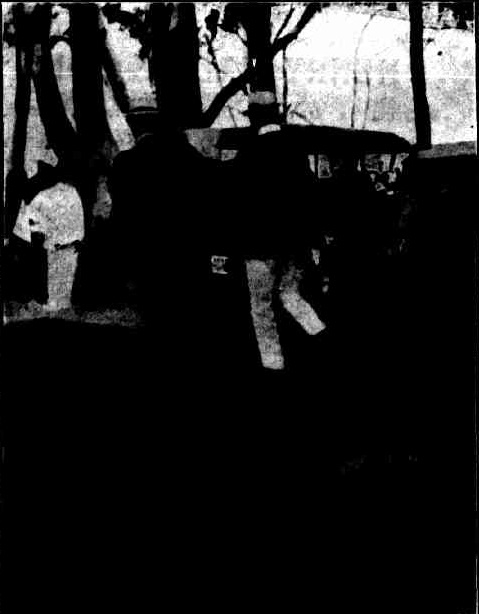
The photograph shown Minister Griffith (in the white trousers) attending a land sale at Narrabeen during the last Christmas holidays. He has just alighted from the Government motor car, seen in the background. Probably it was the Minister's presence on that occasion, and the fact that he bought some land, that led to the rumours that have persistently been circulated with respect to "his personal interest in the Narrabeen tram extension." Mr. Griffith's residence at Manly is shown on page 9. DOES THIS EXPLAIN THE RUMORS? (1912, August 6). Construction : Weekly Supplement to Building (Sydney, NSW : 1909 - 1914), p. 8. Retrieved from http://nla.gov.au/nla.news-article234759344
The community of Pittwater has been holding Meetings and making public Resolutions for a long time now - an early example around the above matter:
NARRABEEN TRAM.
At a largely-attended meeting of Pittwater and Narrabeen residents, the object of which was to express appreciation of the Minister for Works in bringing the tram to Narrabeen, and particularly to protest against what is considered the unjust and unwarranted attacks made upon him in Parliament relative to the tram, the following resolution was carried unanimously:—
"That we the people as a whole, of Narrabeen, Mona Vale, and Pittwater, most respectfully tender our regret at the unwarranted and cruel charges made recently in Parliament regarding the Narrabeen tramway extension. We believe not only that the tram to Narrabeen was justified, but that an immediate extension is urgently needed by the travelling public and residents. Our belief is based upon careful investigations and we would ask respectfully to be heard when evidence for the extension is being considered in the Tramway Advisory Committee. We further submit that as the late Liberal Minister for Works (Mr. Lee) left office with practically a promise to build this line, the recent utterances in Parliament are to us unintelligible, uncalled for, and not worthy of credence." NARRABEEN TRAM. (1912, September 3). The Sydney Morning Herald (NSW : 1842 - 1954), p. 12. Retrieved from http://nla.gov.au/nla.news-article15332222
Also published in August and worth noting:
NOTIFICATON OF RESUMPTION OF LAND UNDER THE PUBLIC WORKS ACT, 1900.
PROCLAMATION
New South Wales, to wit. (LS.)
W. P. CULLEN.
Excellency
By His Excellency The Right Honourable Frederic John Napier, Baron Chelmsford, Knight Grand Cross of the Most Distinguished Order of Saint Michael and Saint George, Governor of the State of New South Wales and its Dependencies, in the Commonwealth of Australia.
WHEREAS I, Frederic John NAPIER, BARON Chelmsford, Governor aforesaid with the.advice of the Executive Council of the said State, have directed that a certain public work, that is to say, the establishing of a Public Recreation Ground at Long Reef, Narrabeen, in the said State, the estimated cost of which does not exceed twenty thousand pounds, shall be carried out under the provisions of the "Public Works Act, 1900," as an authorised work by the Minister for Lands as Constructing Authority and that the land described in the Schedule hereto, which is in my opinion required for carrying out the said work, shall be acquired by taking the same under the provisions of the said Act. Now, therefore, the said Governor, with the advice of the "Public Works Act, 1900," having directed that the land hereinafter described, which is required for the said work, should be taken under Division 1 of Part V of the said Act, do declare, by this notification to be published in the Government Gazette, and in one or more newspapers published or circulated in the Police District wherein the said land is situated, that the Crown Land comprised within the description set forth in the Schedule hereto has been appropriated, and the private property within such description has been resumed, for the public purpose aforesaid, to the intent that upon the publication of this notification in the Gazette, the said land Ascribed in the said Schedule hereto shall forthwith be vested in the said Constructing Authority as a corporation sole on behalf of His Majesty, for the purposes of the said Act, for an estate in fee-simple in possession, freed and discharged from all trusts, obligations, estates, interests, contracts, charges, races, rights-of-way, or other easements whatsoever; and to the further intent that the legal estate therein, together with all powers incident thereto or conferred by the said Act, shall be vested in such Constructing Authority as a Trustee: And I declare that the following is the Schedule of land hereinbefore referred to:—
Schedule.
All that piece or parcel of land, containing 179 acres 1 rood 36 perches or thereabouts, Warringah Shire, parish of Manly Cove, county of Cumberland : Commencing on an eastern side of the main road from Manly to Pittwater, at a point bearing south 15 degrees 55 minutes east, and distant 30 chains 937 links from the intersection of that side of that road with the Southern boundary of portion 1,217, John Ramsay's 410 acres grant (Mount Ramsay Estate) ; and bounded thence by the main road from Manly to Pitt Water before mentioned, being lines bearing south 14 degrees 53 minutes east 0 chains 45links, south 28 degrees 14 minutes east 7 chains 397, links, south 22 degrees 11 minutes east 5 chains 99 y links, south 10 degrees 28 minutes east 2 chains 810 links, south 23 degrees 17 minutes west 10 chains 41 links, and south 57 degrees 8 minutes west 3 chains 17 links to the north-eastern side of a public road 100 links wide, as shown on plan R. 5,855-1,603 in the Department of Lands; thence by that road, being lines bearing south 79 degrees 1 minute east 3 chains 57 links, south 35 degrees 10 minutes, east 1 chain 43 links, and south 3 degrees 30 minutes east 5 chains links to the margin of Deewhy Lagoon; thence by that lagoon and its mouth, being lines bearing north 76 degrees 57 minutes east 1 chain 20 links, and south 76 degrees east 7 chains 40 links lo high-water mark of the South Pacific Ocean ; thence by that high-water mark bearing generally north-easterly and generally north-westerly to a point bearing north 68 degrees 37 minutes east 20 chains 5 links from the point of commencement; thence by a line bearing south 68 degrees 37 minutes west 20 chains 5 links, to the point of commencement,—as shown upon a plan in the Department of Lands, catalogued Ms. 3,648. Being part of portion 1,218, William Cossar's 500 acres grant, and said to be in the possession of William Booth, of the Salvation Army [1912-12,897]
In witness whereof I have hereunto set my Hand, and caused the Public Seal of the State to be hereto affixed, at Sydney, this thirteenth day of August, in the year of our Lord one thousand nine hundred and twelve, and in the third year of His Majesty's Reign.
By His Excellency's Command,
G. S. BEEBY. [761] GOD SAVE THE KING !
Note.—This proclamation is in lieu of the proclamation dated the 20th day of February, 1912, appearing in the Government Gazette of the 28th idem. NOTIFICATION OF RESUMPTION OF LAND UNDER THE "PUBLIC WORKS ACT, 1900." (1912, August 14). Government Gazette of the State of New South Wales (Sydney, NSW : 1901 - 2001), p. 5186. Retrieved from http://nla.gov.au/nla.news-article221605433
HIGH PRICED LAND AT NARRABEEN.NARRABEEN LAND.
Messrs. Henry F. Halloran and Co. report that the opening of the tramway continues to cause a big demand for land at Narrabeen. During the past twelve months' between £8000 and £9000 worth of land in the Warriewood Estate has been sold. REAL ESTATE. (1912, September 6). The Sun (Sydney, NSW : 1910 - 1954), p. 5 (FINAL EXTRA). Retrieved from http://nla.gov.au/nla.news-article228825536
A very successful land sale was made at Narrabeen yesterday afternoon by Messrs. Robey, Hanson, and Strong, of Manly, about £8000 worth being purchased. Buyers gave up to £6/5/ per foot for the best frontages. HIGH PRICED LAND AT NARRABEEN. (1912, September 8). Sunday Times (Sydney, NSW : 1895 - 1930), p. 10. Retrieved from http://nla.gov.au/nla.news-article120682300
Robey, Hanson and Strong were in charge of selling 'West's Lakeside Estate'. Raine and Horne were also selling lots at this time of the 'Iredale Estate' at Narrabeen - 15 lots were sold at prices ranging from £3/17/6 per foot on Saturday November 23rd, 1912. Their Total sales were £1040 for the Iredale parcels.
THE RUSH TO NARRABEEN.
As was anticipated, the rush to Narrabeen by the recently-constructed electric tram was remarkable. On previous holidays the only means of transit to Narrabeen and thereabout was by motor-'bus and coaches. The trams were packed from 9 o'clock in the morning, and every trip witnessed the usual heavy loading and overcrowding that occurs on holidays. The tramway authorities had 12 cars running on the route, each capable of seating 30 passengers, but the average loading was close on 100 persons to a car. It is estimated that over 60 car-loads arrived at Collaroy Beach. The district resembled Manly Bench itself, so dense was the crowd at times.
The homeward Journey was a trying time for the passengers. Extra cars were brought into service, but still the authorities could not cope with the rush near 6 o'clock, and it was late in the evening when the last of the passengers left Narrabeen. Considerable inconvenience occurred at Collaroy Beach, where several hundred persons waited anxiously for conveyances to convey them to Pittwater and Newport. The few motor-'buses on the route were totally inadequate to accommodate the people, and many abandoned all hope of ever reaching their destination by the motor-cars. Private carriages and traps reaped a harvest. Several Important land sales were held in the district during the day, and this alone was responsible for the influx of a large number of visitors. THE RUSH TO NARRABEEN. (1912, October 8). The Daily Telegraph (Sydney, NSW : 1883 - 1930), p. 15. Retrieved from http://nla.gov.au/nla.news-article239177715
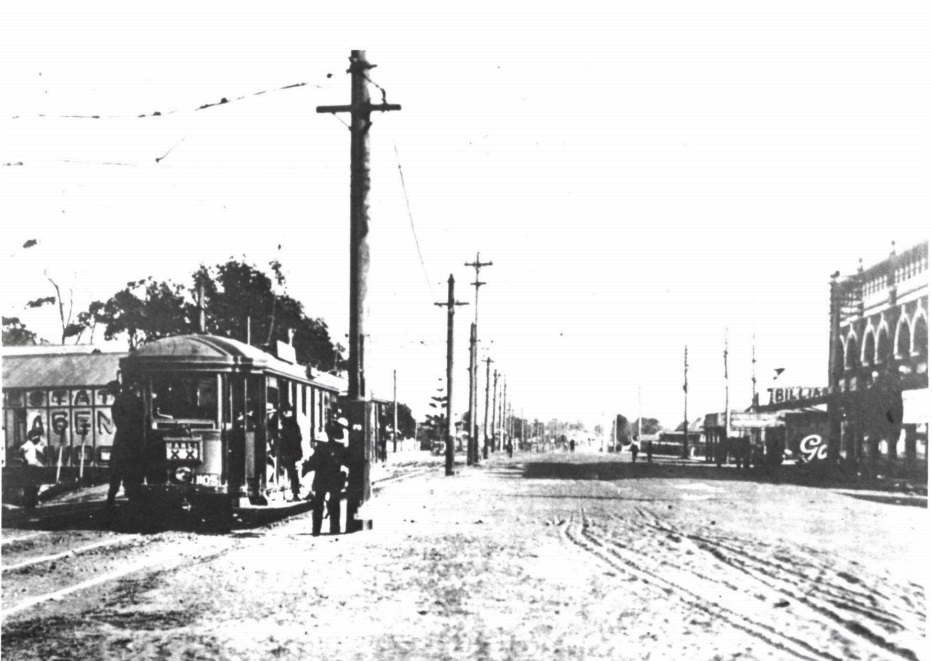
Tram at Collaroy Beach, courtesy Trolley Wire - Australia's Tramway Museum Magazine
REAL ESTATE SALES.
The whole of the real' estate sales yesterday were largely attended, and some real good business was done. The main sale was at Narrabeen, where the Salvation Army property was brought under the hammer. Mr. Henry Gorman occupied the rostrum. It was a perfect day for such a position, and the attendance was a very large one. There was good competition, and prices were high, even up to about £7 per foot; but much more of the land might have been sold If the reserves had not been quite so high However, the land sold totalled over £4000. REAL, ESTATE SALES. (1912, October 8). The Sydney Morning Herald (NSW : 1842 - 1954), p. 11. Retrieved from http://nla.gov.au/nla.news-article15365711
As can be read, access through the tram brought visitors and land buyers alike - it even brought the return of those who remember another Narrabeen and Pittwater:
Narrabeen
(By C.B.)
Is Narrabeen lagoon a "drowned river valley," such as our own beautiful harbour? The phrase seems paradoxical; but scientists, like poets, possess genius and originality of thought and expression. They are allowed license. According to Mr. Griffith Taylor, physiographer in the Commonwealth Bureau of Meteorology, "Sydney harbour is the type example (of drowned river valleys), and is renowned all over the world. It is especially valuable as a harbour, because no large river drains into it hence there is no silting."
Silting marks the great difference as regards navigation between Port Jackson and Narrabeen lagoon. Narrabeen, as most "Freeman'' readers know, is a favourite picnic and pleasure resort on the coast, six miles north of Manly, with which it is now connected by tram, thanks to the forethought of Mr. Griffith in providing facilities of communication to beauty spots of the unrivalled districts of Narrabeen and Pittwater.
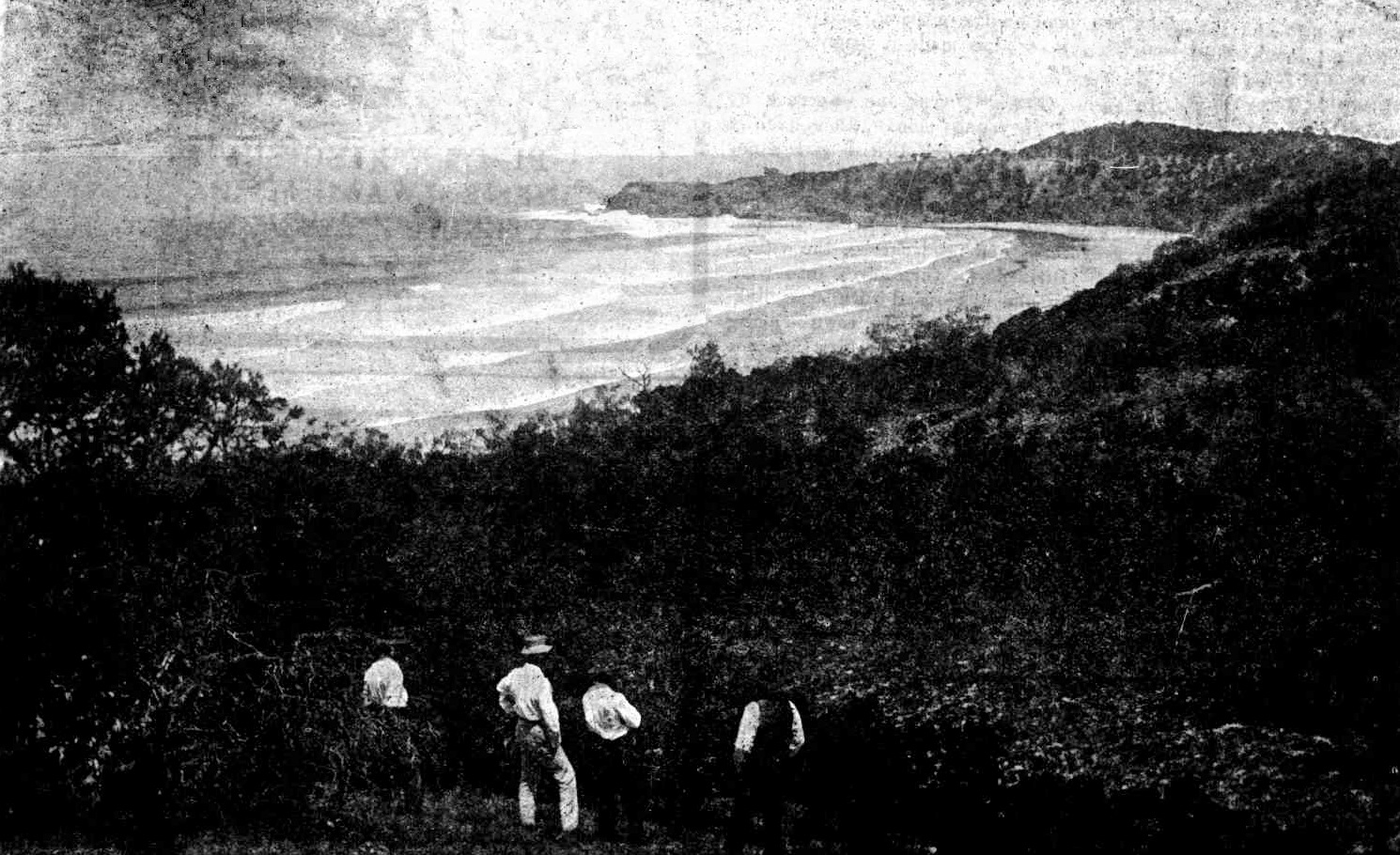
BEYOND MANLY.
Narrabeen, pretty poetic name, was the daughter of the aboriginal chief Yowal, who held sway over the country on the south side of the lagoon. She was, by all accounts, the belle of the district, a century ago, and she was good as she was beautiful. The young braves of the rival chief, Bulgah, who held dominion in the country north of the lagoon all courted Miss Narrabeen, but she "dissembled her love" for an object, and that object was to gain information about a small gang of bushrangers, who had planned to rob a settler, the first white man in the district. This settler had always been on very friendly terms with her father, and she said, she owed him a good turn. She informed him of the intended raid of the bush-houses before owing to the treachery of one. All but one the bushrangers attacked the houses before any defence could be made. All but one of the family were massacred.
Narrabeen means "worked"…worked is expressive of… and significant of the creeks that feed the lagoon from the water streams Tumbledown Dick, a conspicuous mount on the Stony Creek Road from Gordon-Pymble to Rocklilly, on the Pittwater Road.
To popularise the lagoon, it should be regularly dredged, so that visitors might enjoy boating, and see without obstruction or difficulty the grandeur of the western attractions. To close the mouth of the lagoon and make it a lake, would flood the premises on its south shore, east of the bridge. Another menace to the pleasant little village is the danger of sand drift, which is already in evidence from Collaroy beach to the mouth of the lagoon. The beach has risen in some places in a few years 15 feet. Can't the ocean beach be grassed and staked?
Just a generation ago, the writer, accompanied by his two sons, saw Narrabeen for the first time. We had spent a week down in picturesque Pittwater, whither we went by excursion steamer. After a week's sojourn, Mrs. Boulton, who then kept the Newport Hotel, provided us with a generous lunch, as we had arranged to walk to Manly. She cautioned us in crossing Narrabeen to keep clear of the quicksand bed, where her husband had lost a bullock team, near the mouth (there was no bridge across in those days).
We had a pleasant dip in the waters of the lagoon, and afterwards hired a boat. The Charon of the lagoon told us of an enchanted island and a haunted castle further west. Our curiosity was excited. We sallied forth on discovery bent. But, alas, for our worth on discovery bent. But alas for our enterprise: We had not proceeded more than a mile when we stuck in a sand bank. The youngsters, got out, pushed and shoved, and got the skiff afloat. But she did not float very long before she again grounded. That damped for the time being our ardour for exploration on Narrabeen lagoon. We returned the boat to its owner, and asked: Was there a channel in the lagoon, and if so, why was it not staked for the guidance of strangers?
His reply indicated a go-easy boat proprietor.
A few weeks ago my long-cherished wish for visiting the western end of the lagoon was gratified. My son and grandson, who were then having a holiday at Ocean House, Narrabeen, sent me word, the "lake was full." The residents call it a "lake," when the mouth of the lagoon is closed by heavy easterly weather, and no outlet for the water from the hills. The Eden of Narrabeen was worth seeing. I felt compensated for my long wait. We spent a whole day in the enjoyment of scenery — water, wood, and hill, which was charming beyond description. At the head of the lagoon is a large delta, intersected by three streamlets; known locally as Deep Creek, Middle Creek, and South Creek. Deep Creek has a steep hill on its north side, the delta on the south side. The side of the hill is clothed from base to summit with a variety of shrubs and trees. The lordly gum was there, and lovely tree ferns. Cabbage-tree palms were seen in graceful clusters. The waratah and Christmas bush were conspicuous by their fresh, glowing foliage, indeed the whole cliff side for several miles was gorgeous and rich in vegetation, and redolent of 'bush incense.' The creek full of fish, bream, whiting, flat-head, mullet, we could see playing "chasings" like children. They are seldom disturbed, for the creek is too narrow for netting, and too snaggy for rod or line fishing.
The silence and solitude of the place was broken by the hum of bees, the song of birds, prominent among which were the kookaburra, with his loud guffaw, the thrush, with his metallic notes, the coach-whip, with his stock-whip crack, and the cat bird, which must have strayed from his habitat in the north. The ribbon-like creek is a sanctuary for fish, and the bush bordering it for the feathered tribe. Maybe they (fish and birds) owe something to the aegis of good fairies, whose dell we saw near the mouth of the creek. A small waterfall formed a pool at the base of an opening in the hill. It was surrounded by cabbage-tree palms, young treehorns, lily pilly, wild climatic, and other vines. It was a fit place for Queen Mab to hold her court and dictate her laws :
Fairies small, two-foot tall,
With, caps red on their head,
Dance around on the ground,
Fairies black, green and white,
You moonshine revellers, and shades of night,
You orphan-heirs of fixed destiny,
Attend your offices.
Middle Creek runs through the delta. It has not such attractive features as its sister north of it. Beset with snags, it was difficult to steer the boat. We were diverted by the antics of an iguana that we saw up a tree after a bird's nest. It scooted at our shouting, opened its enormous jaws as if to intimidate anyone approaching it.
"Oh, how like a young crocodile, " exclaimed the youngster of the party.
It was about 5 feet long, the largest of the lizard tribe I had seen for many years. Like its sister creeks, this one was a veritable fishpond. Near the mouth of the South Creek, close to the island, which appeared to have lost its enchantment, was a deep pool full of large fish. (Was this pool the abode of a bogie or bunyip that lent enchantment to the island?)
From the empty shells and other indications around the pool, it would appear that Uhlan fishermen haunted the spot to dynamite fish. The unsportsman-like, if not barbarous, practice should be severely punished. We had not time to visit the 'haunted castle.' We heard enough, however, to soothe our disappointment, for, like many other much-talked-of structures, it was but an "air castle" or a "castle in Spain."
But an old hand told me that in his father's time there was a building in the creek at the foot of Tumbledown Dick, known as "Poteen Castle."
On that we exchanged meaning glances.
"Is it there still?" I asked "A drop of the crathur would not be unacceptable now."
"Next time" he cheerily promised — "if there are no 'gaugers' about."
Narrabeen (1914, December 17).Freeman's Journal (Sydney, NSW : 1850 - 1932), p. 19. Retrieved from http://nla.gov.au/nla.news-article111295740
The Visit refferred to by 'C.B.' that preceded the above:
How this pleasant picturesque watering-places is advancing is well indicated by the opening of a telegraph station there the Saturday before Christmas, 'Our bachelor' and myself intended to be present at the ceremony. We were prevented by the temporary suspension of the vehicular traffic between Manly and there, owing to the supply not being equal to the demand. The extra demand on that day from visitors to Newport and holiday parties taxed the resources of the Manly coach proprietors; but by the exercise of a little patience and with the loss of a little time all were accommodated. The road between the lagoon at Manly and Dee Why Lagoon has been stripped of many of its charms. Formerly it was like a woody winding lane odoriferous as a flower garden at dewy eve or early morn; now it is tame and treeless, here and there shorn of most of its glory by bush vandals and land jobbers.
There are four public-house between Manly and Newport, two of which, I believe, have been built since the unemployed were set to work at French's Forest and Narrabeen. How the tenants and owners of the houses can make a living is a mystery. Perhaps their owners are far-seeing men, who have speculated in anticipation of the Pittwater tramway (the bill for which was lately passed) being constructed.
When we arrived at Pittwater harbour the day was declining, but the gala remained in all its glitter. Mr. Cracknell, who performed the opening ceremony had departed with some others for Sydney ; but the notabilities of the locality were in no hurry to leave, having their gondolas at hand to convey them home.
A few years have made a great change in Pittwater. The western shore of the harbour is all under cultivation. Fruit trees of all kinds flourish there, and some vegetables can be produced a fortnight earlier than around Sydney. Fish is abundant in the harbour. We assisted at three hauls of the net of our host, Mr. Bulfin. 'Our bachelor' and another gentleman donned fishing garb for the occasion, put their shoulders to the wheel, or rather to the ropes and towed very well indeed for amateurs. Our labours were attended with but moderate success. There is much inquiry for land in Pittwater now, the prospect of the tramway thither doubtless stimulating it. Scotland Island, in the middle of the harbour, area about 150 acres, has been sold to a Melbourne company for £2,500.There is some speculation as to what they are going to do with it. The impression prevails that it is to be utilized for a marine public resort. It was also said down there that a that a well-known gentleman on the North Shore intends building a large marine hotel on the eastern shore of the harbour, between Stokes's Point and the new wharf. It is a very eligible site if trade could be commanded; but that, no doubt, would come to a well-conducted house. A place there would be easy of access from the harbour, the new wharf affording facilities for landing found nowhere else in the Pittwater peninsula. The largest excursion steamers can come alongside it in all weathers, there being a depth of over 18 feet at low water.
The romantic marine retreat of the late lamented Mr. Dalley on Cabbagetree beach, underlying Bilgola head on the Pacific shore, has been purchased by Mr. Jackson. Mr. J. M. Taylor, our bachelor (so designated from having obtained his B.A. degree as an evening student at the University the morning of our visit), was delighted with Pittwater. As a holiday retreat he would prefer it to the mountains principally because
'There is a society where none intrudes By the deep sea, and music in its roar.' C. B. PITTWATER. (1889, January 12).Freeman's Journal (Sydney, NSW : 1850 - 1932), p. 17. Retrieved from http://nla.gov.au/nla.news-article115380870
Despite the wonderful news above that the Salvation Army did sell some of the Narrabeen land brought under the Real Property Act in 1913, it is this organisation that is selling the Narrabeen Park Estate some 15 years later - not, however, without passing muster via the Warringah Shire Council to set aside reserves alongside the coast for the public and not without installing access via roads.
Warringah Shire Council Minutes of Meetings from December 1926 shine alight on:
Narrabeen Park Subdivision. Resolved (Crs. Atkins, and Hope) that a letter be sent to the Salvation Array, pointing out the Council's difficulties in approving of any section of a plan till the whole drainage scheme and reserves have been approved.
Resolved (Crs. Parr, Simpson) - that the Salvation Army be written to, stating that Council is agreeable to doing the rolling of the first section of the road, Narrabeen Park Estate, (about 30 chains) if the Army agrees to give the road two coats of tar.
At the Meeting held on February 21st, 1927:
Resolved (Crs. Parr, Ryan) that the Engineer's report regarding the drainage of Narrabeen Park Estate be adopted and copy sent to the Army.
A few months on:
Salvation Army. 1/4/27. Requesting the Works Committee meet the Property Secretary and Surveyor Scott to finalise certain matters in connection with Narrabeen Park Estate. Referred to the Works Committee.
On the 19th of September the Council Minutes of Meetings records show:
That a copy of the Engineer's report on proposed improvements to the principal roads through Narrabeen Park Estate be sent to the Salvation Army; it be pointed out at the same time that whereas the cost of effecting these improvements is £12 per chain, the cost of completing the roads to the specification laid down by the Council when the road plan was approved, would be about £2 10 0 per chain, that the council is prepared to contribute up to £5 per chain towards the cost of effecting the improvements, but not being in a position to pay the money at present it will agree to reimburse the Any to that extent when the revenue for next year becomes available
The reply:
Salvation Army. 5/10/27. Replying that their Board cannot see its way clear to meet the extra cost of roadmaking in Narrabeen Park Estate, as requested by the Council, but suggesting alternative work towards which the Army Will pay £500. Resolved,(Crs. Parr, Simpson) - That in view of the Army's reply, the roads be completed in accordance with the approved specification, and the Engineer see that the work is done properly to that specification.
October 31st, 1927: The request V. Williams, Builder, to erect a sub-division advertising signboard over a new road in Narrabeen Park Estate, was referred to the Works Committee.
Too much? - and where's the tar?:
%20-%20Copy.jpg?timestamp=1559614295197)
Meanwhile, the roads for further subdivisions are being planned before day 1 of the 1st subdivision:
Salvation Army 3/11/27 Submitting plan showing the main road for the No. 4 subdivision of Narrabeen Park Estate. Referred to the engineer for report.
Narrabeen Park Estate, Salvation Army Property Secretary. 28/11/27. Requesting that the Works Committee discuss with him the question of the location of the 7-ft strip of proposed Estate to be added to the Main Road Referred to Works Committee.
72. Narrabeen North Progress Association, 17/7/28...(1) " Requesting that the asocation be furnished with the amount money col1ected in A.Riding in 1926, and where spent in 1927 (2) respecting neglected sanitary service in the district,. (3) protesting-against the Council's proposal to bear half the cost of tarring the main road on Narrabeen Park Estate, and (4) that inspections be made of Alleyne Avenue, Lake Park Road, Powderworks Road and Taiyul Road. (1) Left to the Clerk to deal with as he thinks as fit, (2) referred to-the Inspector and (4) to I the Overseer.
Yes, No. (2) goes unanswered.
Scott & Scott. 6/10/28. Submitting plan of Narrabeen Park Parade. betveen Nos. 1 and 2 subdivisions of Narrabeen Park Estate. (Dealt with in Engineer's report.)
Note the spelling of 'Warriewood' in this advertisement
OCEANSIDE LOTS
NARRABEEN PARK NEW AREA OPENED
Separated from Warriwood beach only by a public reserve, is the first subdivision of Narrabeen Park Estate, which will be sold by auction next Saturday, by Messrs. Raine and Horne, in conjunction with A. C. Greenwood. This estate is on the high land Just north of Narrabeen beach, and has Warriwood beach Immediately In front of It. The main Pittwater- road passes It, and the new road over the bridge closer to the beach runs through the estate. Four business sites and 58 residential lots are to be sold in this subdivision, which is on u slope of the hill, that gives it wide views of beach and lake. Narrabeen Is the terminus of the northern tram service, while modern 'buses also supply transportation to Manly. Terms .of sale will be ten per cent. deposit and the balance In five years. OCEANSIDE LOTS (1928, January 25). The Sun (Sydney, NSW : 1910 - 1954), p. 14 (LAST RACE EDITION). Retrieved from http://nla.gov.au/nla.news-article224225740

No. 1 Subdivision - Narrabeen Park Estate - Sheep Station Hill Jan 28, 1928. Item No.: c046820089, courtesy State Library of NSW, Album: Narrabeen Subdivision Plans - Bruce Street, Hunter Street, Melbourne Avenue
Hunter Street may pay tribute to 'Major' Hunter of the earlier Salvation Army, very active Australia wide during the 1890's, or a Rev J. Hunter working for the Salvos during 1928, while 'Melbourne' was the place of administrative headquarters for property holdings during this era. He was certainly one who met the lady who left this land to the Salvos while she was still alive:
SALVATION ARMY.
A soldier's council, conducted by Commandant Booth in the Goulburn-street barracks, on Wednesday night, was attended by close on 1000 soldiers of the city and suburbs The topic was " Loyalty."
Thursday was spent by the commandant in inspecting the industrial farm at Narrabeen the same night he departed for Newcastle.
There will be a large exodus of staff officers from New South Wales during the next week Major and Mrs Turner, Major and Mrs Taylor, and Major and Mrs Vince proceed to A letona. Brigadier and Mrs Glover no to South Australia, Staff-Captain and Mrs Bennett and Ensign and Mrs Codgdon depart for New Zealand, and Staff Captain and Mrs Cutler proceed to ... The officers who are appointed to fil) the vacancies in New South Wales are-Major and Mrs Wossberg, from Victoria to the Central Division, Major and Mrs Graham, from Queensland, to the South eastern Division Adjutant Baird formerly in command of the city corps, is promoted to the chair of the South-western Division, Staff-Captain Morgan, from Queensland, to the Southern Division ...Major Hunter, who was in charge of Western Australia, succeeds Major Areal as colony war secretary for New South Wales.... SALVATION ARMY. (1897, April 17). The Sydney Morning Herald (NSW : 1842 - 1954), p. 9. Retrieved from http://nla.gov.au/nla.news-article14095040
Although the Salvation Army had a great supporter in then Prime Minister Stanley Bruce, he did receive his Viscountcy until 1947. As streets named within their land holdings in Warriewood seem to have been to honour those who had served the organisation at a high level for decades, this may have been named to honour the Australian Prime Minister's support, or for another of their 'Major's - 'Major' Bruce of the Training College in Melbourne was active during these years.
A bit about our 8th Prime Minister anyway:
Stanley Melbourne Bruce, 1st Viscount Bruce of Melbourne, CH, MC, PC, FRS (15 April 1883 – 25 August 1967) was the 8th Prime Minister of Australia, in office from 1923 to 1929. He made wide-ranging reforms and mounted a comprehensive nation-building program in government, but his controversial handling of industrial relations led to a dramatic defeat at the polls in 1929. Bruce later pursued a long and influential diplomatic career as High Commissioner to the United Kingdom (1933–1945) and chairman of the Food and Agriculture Organisation (1946–1951).
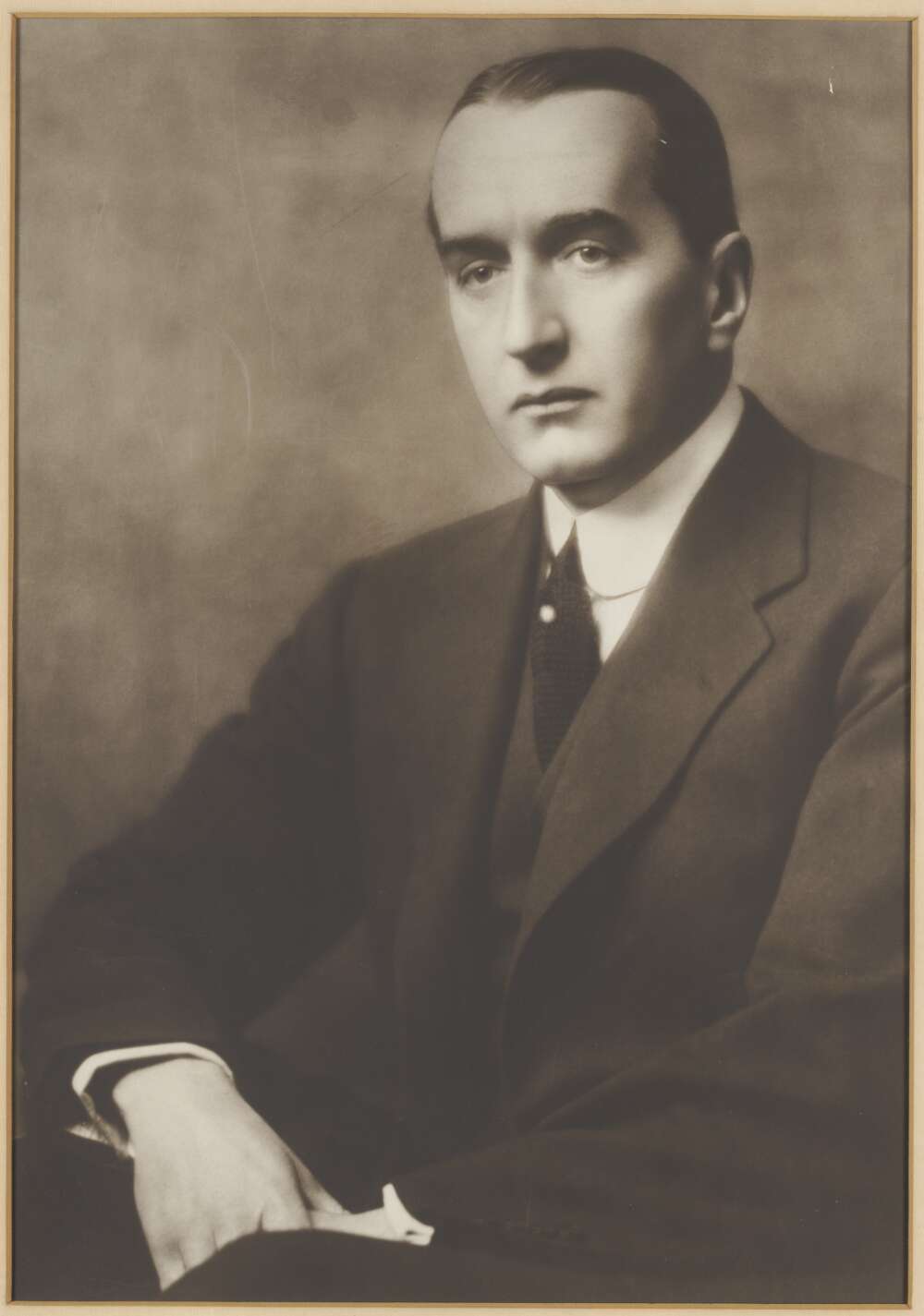
Stanley Bruce, Prime Minister of Australia 1923-29 Portrait of Rt. Hon. S.M. Bruce, P.C., M.C., 9.2.23-22.10.29 Retrieved from http://nla.gov.au/nla.obj-136644433
Under Bruce the Australian government also moved to its new permanent home in the planned federal city of Canberra. Plans for a new federal capital had been circulated since the time of Federation, and a site on the Molonglo River was selected in 1913. Design and construction had proceeded slowly due to World War I as well as funding and management problems. Bruce was a committed advocate of the new capital, however, stating: "For the purposes of Federation it was essential that there should be some central point of nationhood, suitable to Australia as a nation ... and sooner or later there would have to be a national capital, overriding State boundaries and State prejudices."
There's is a LOT more to this gentleman apart from becoming the the first Australian to sit in the House of Lords.
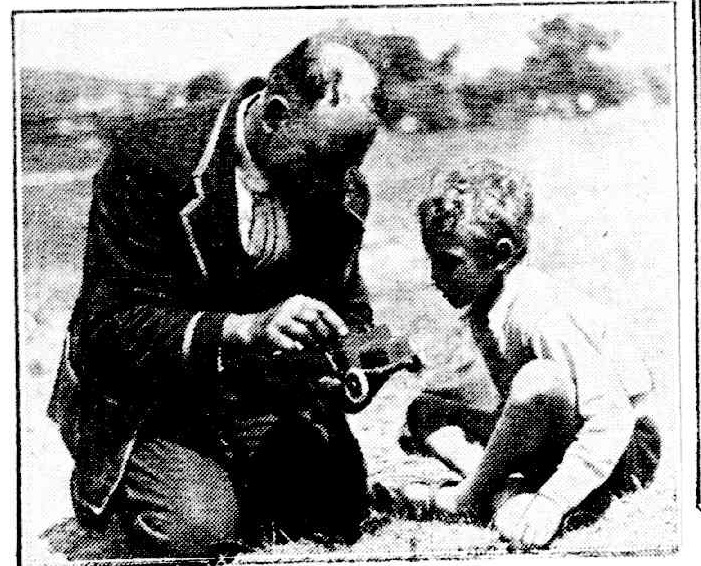
THE WHY AND THE WHEREFORE.— Camp Commandant Kay gives a lesson in mechanics to one of the boys at the Salvation Army seaside camp at Collaroy.
.jpg?timestamp=1559618323732)
PRIME MINISTERS ARE HUMAN.— Mr. Bruce obeys the call of the breakers at Frankston (Vic.).
MR BRUCE HEARS THE CALL OF THE SURF -- CITY CHILDREN GUESTS AT COLLAROY CAMP (1928, January 17). The Daily Telegraph (Sydney, NSW : 1883 - 1930), p. 14. Retrieved from http://nla.gov.au/nla.news-article245502244
Salvation Army Enterprise.
TRAINING OF MIGRANTS.
The White Star lined Vedic, 910 tons, with the Salvation Army flag fluttering gaily at the masthead will leave Liverpool, England, to-morrow (Saturday) bound for Australia. On board are nearly 600 souls, comprising settlers of all ages, hand-picked by the Migration and Settlement Department of the Army. Among them are 200 boys (some of whom will take advanced training at an Army farm in Queensland)" trained in elementary agriculture on the Army's farms at Hadleigh and 200 young women coming to domestic service in Australia. The boys were bade good-bye by the Lord Mayor of London, Colonel Sir Charles A. Batho. He received them in the Mansion House, the home of the reigning Lord Mayor, and in the midst of a distinguished company on the platform, gave them some stirring words of advice. Afterwards they visited the Zoo and had an educational tour of London, including visits to Westminster, Whitehall and St. Paul's Cathedral. There was also a public farewell demonstration in the Regent Hall, Oxford Street, London, on Friday evening. Commissioner Lamb and Mrs. Lamb, J.P., presided and the programme included singing, music and speeches. After that the migrants marched in procession, accompanied by Salvation Army bands, to Paddington Station, London, where they entrained for Liverpool. The young women of the party travelled by day in a special train leaving Euston on the Saturday morning. On-arrival they were received by the Lord Mayor of Liverpool (Margaret Bevan).
Messages of goodwill were received from many well-wishers. Mr. Bruce, Prime Minister, wrote: "'To those who through the efforts of .he Salvation Army are coming to Australia, I wish every possible success in their new venture.
"Australia offers you not only a warm welcome, but also in taking part in its development you are being afforded an opportunity to establish for yourselves an inheritance which is not available to those similarly situated in the old countries of the world." Salvation Army Enterprise. (1928, October 5). The Kyogle Examiner (NSW : 1912; 1914 - 1915; 1917 - 1954), p. 7. Retrieved from http://nla.gov.au/nla.news-article234667311
The 8th Prime Minister didn't lose the streets dedicated to his work - Bruce and Melbourne are still part of Warriewood.


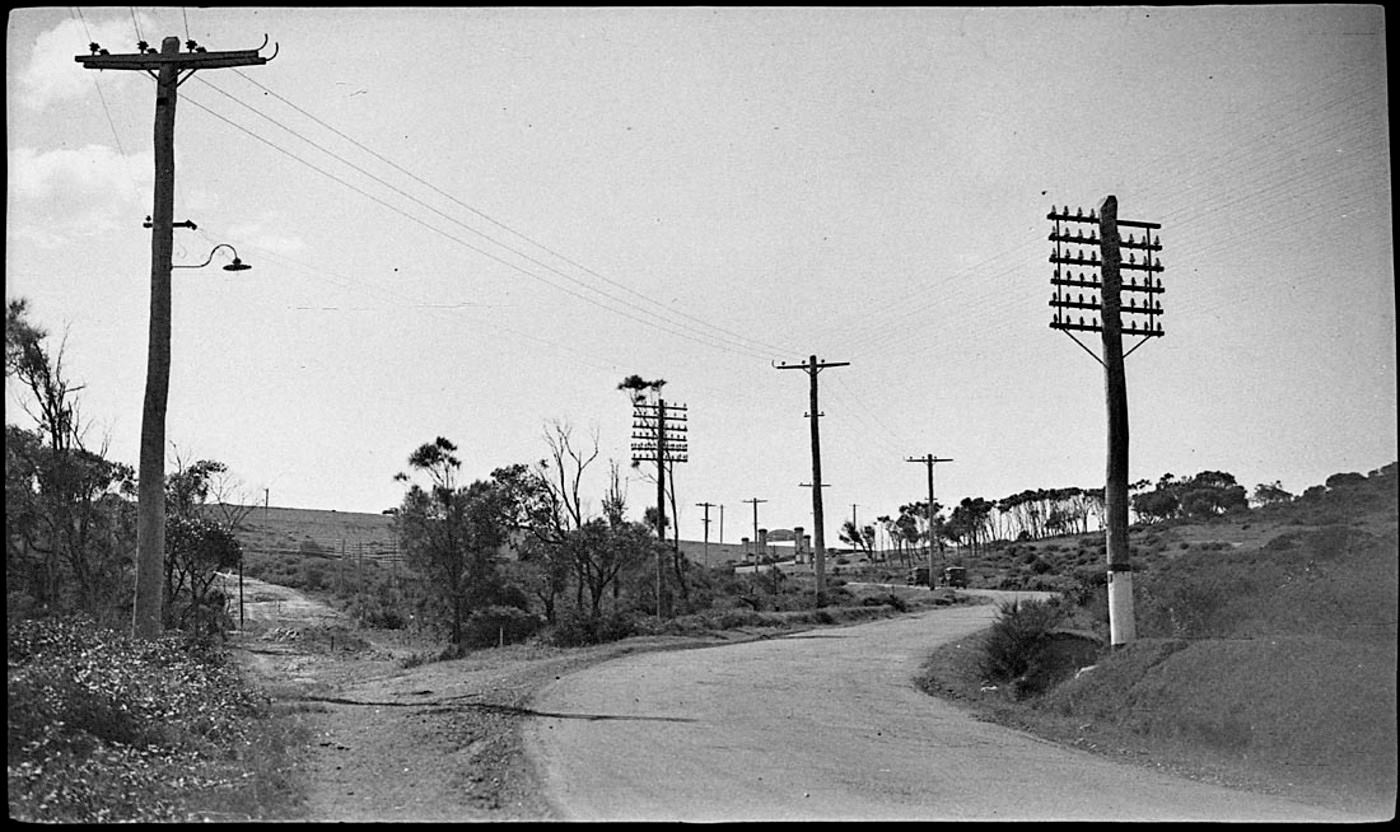
'Palm Beach Road, near Mona Vale' photo by Albert James Perier, courtesy State Library of NSW - 1920s (1928-1929)

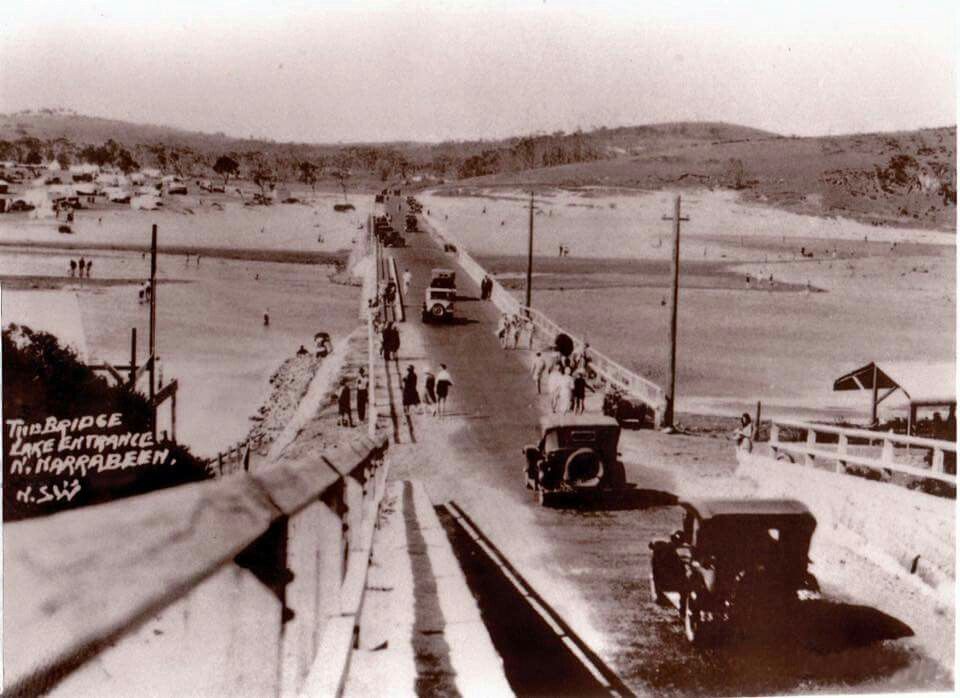
Striking Aerial Views : Newcastle and Narrabeen
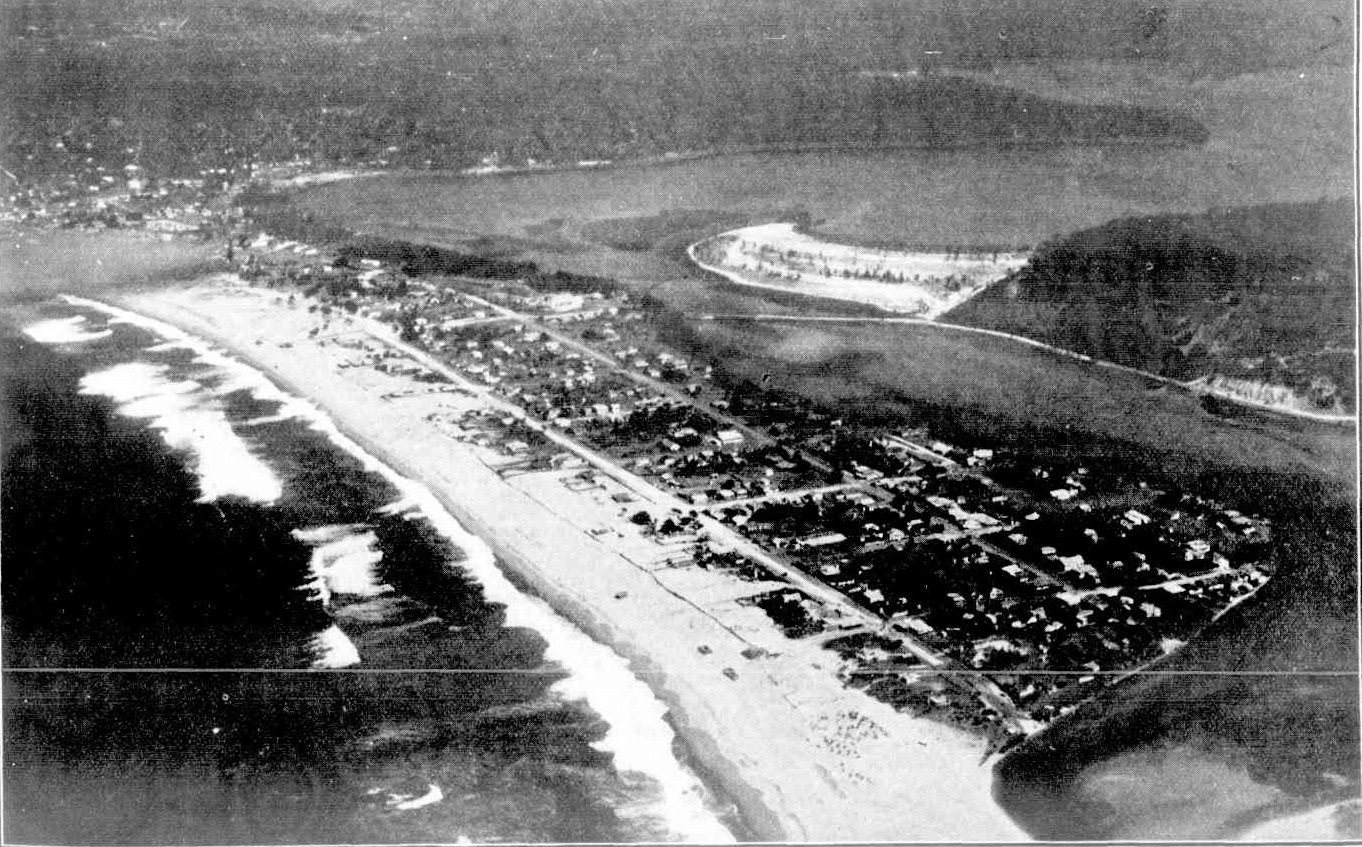
NARRABEEN, BETWEEN OCEAN AND LAKE. This fine strip of ocean beach runs from North Narrabeen through South Narrabeen to Collaroy (on the left). Narrabeen proper is situated on the peninsula in the centre of the picture. The main road from Manly to Newport, Avalon, and Palm Beach runs through the upper portion of Narrabeen, crossing the lake by the bridge, beyond which is seen a portion of low -lying land now being reclaimed. Striking Aerial Views : Newcastle and Narrabeen (1928, August 22). Sydney Mail (NSW : 1912 - 1938), p. 17. Retrieved from http://nla.gov.au/nla.news-article158401835
.jpg?timestamp=1615403587952)
A SECTION OF THE NEW ROAD FROM NARRABEEN TO NEWPORT.
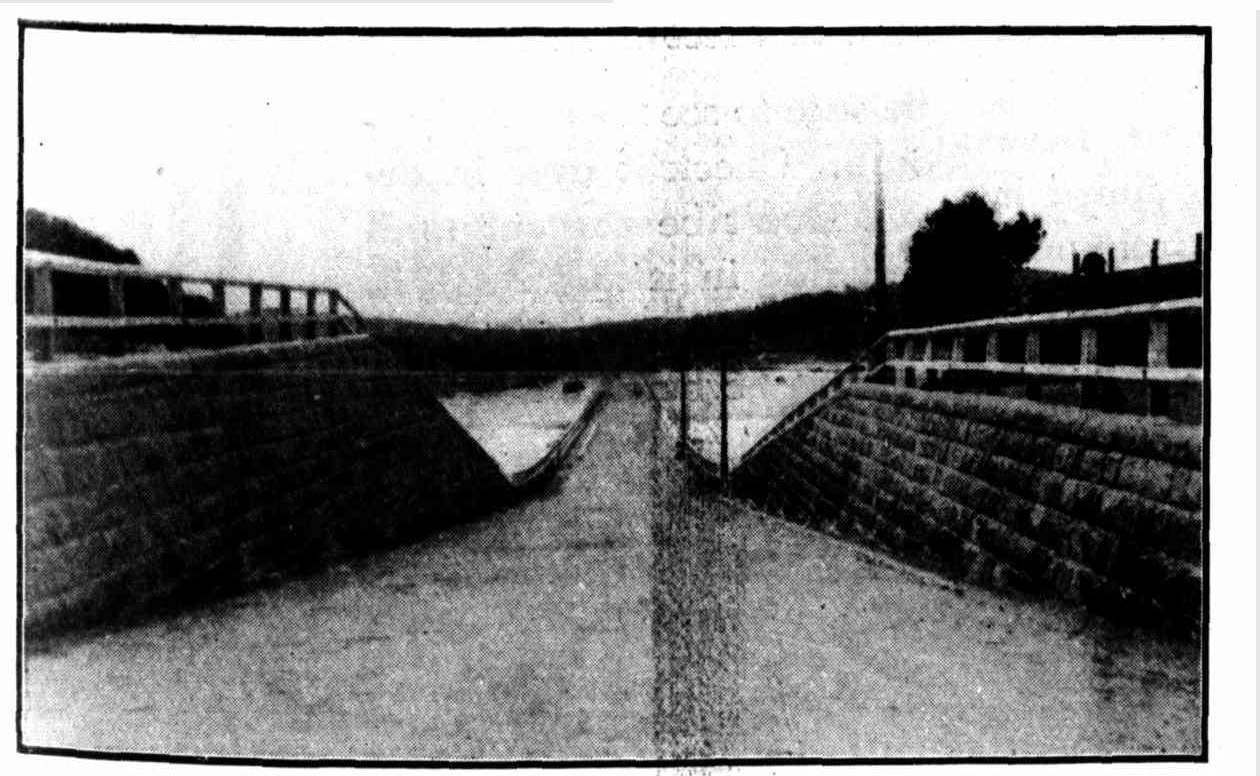
ANOTHER SECTION OF THE NARRABEEN-NEWPORT ROAD.
The trip from Sydney through Manly and Narrabeen to Newport and on to Palm Bead) is a very popular one. The scenery Is indescribably beautiful. A Good Road Performance (1928, November 14). Sydney Mail (NSW : 1912 - 1938), p. 47. Retrieved from http://nla.gov.au/nla.news-article158404160

Narrabeen, allotment, Narrabeen Park Estate No. 2 (In conjunction with A. C. Greenwood)., £250; REAL ESTATE. (1928, May 12). The Sydney Morning Herald (NSW : 1842 - 1954), p. 11. Retrieved from http://nla.gov.au/nla.news-article16464069








Cook Terrace may have been named for Salvation Army Ensign, later Captain Sidney Cook, a projectionist who travelled to present Salvation Army Films produced under the 'Limelight Department' of the Salvos, arguably one of the first to produce feature films in Australia.
The Limelight Department was one of the world's first film studios, beginning in 1898, operated by The Salvation Army in Melbourne, Australia. The Limelight Department produced evangelistic material for use by the Salvation Army, including lantern slides as early as 1891, as well as private and government contracts. In its 19 years of operation, the Limelight Department produced about 300 films of various lengths, making it one of largest film producers of its time.
The major innovation of the Limelight Department would come in 1899 when Booth and Perry began work on Soldiers of the Cross, arguably the first feature-length film.
The presentation contained fifteen ninety-second sections and two hundred lantern slides, and ran for nearly two and a half hours. While some Lumiere footage was used in the opening passion sequence of the film, the majority of the footage was filmed in Melbourne, either in the attic of 69 Bourke Street, on the tennis court of the Murrumbeena Girls Home, or in the pool at Richmond Baths.
The presentation itself focused of the lives and deaths of early Christian martyrs and cost £550 to produce. The scenes were considered extremely violent for their time, including such images as the stoning of Stephen, the burning of Polycarp and unnamed Christians being tortured, beheaded, killed by gladiators, drowned, or burned alive. The presentation included a cast of 150 Salvation Army officers who were stationed in Melbourne at the time. The many death scenes took their toll, with the cast suffering various injuries, including scorched hair and eyebrows from the fires used. The presentation premiered on 13 September 1901, at the Melbourne Town Hall, to a crowd somewhere between three and four thousand. One reviewer spoke of how the death scenes caused several women to faint in the aisles.
Soldiers of the Cross fortified the Limelight Department as a major player in the early film industry. However, Soldiers of the Cross would be dwarfed by Inauguration of the Australian Commonwealth, when the Limelight Department was commissioned to film the 1901 Federation of Australia. It was the hope of the New South Wales government that the film would prove an imperishable record of the event, though little of the footage still exists. Perry set up five cameras at various point of the procession route and had to use a fire carriage to move quickly from one camera to the next.

The Sydney Town Hall illuminated in celebratory lights and fireworks marking the Inauguration of the Commonwealth of Australia, 1901. The sign reads One people, one destiny. photo by W. A. Gullick - courtesy State Library of New South Wales
In order that Soldiers of the Cross could be seen by a wide audience, the Limelight Department created groups known as Biorama Companies. Teams of musicians, lecturers, and projectionists would travel throughout Australia presenting the material that the Limelight Department had produced, and it was in this capacity that Ensign Sidney Cook was employed.
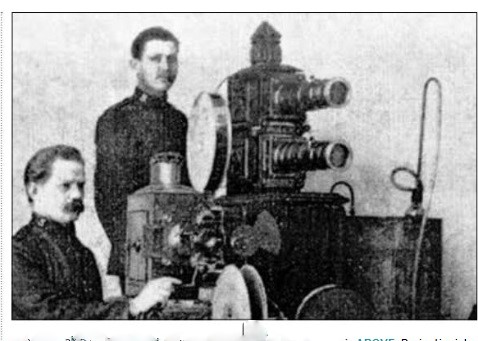
Projectionists Cook and Bennett - Salvation Army photograph, 150 Years of the Salvation Army, published in 2016
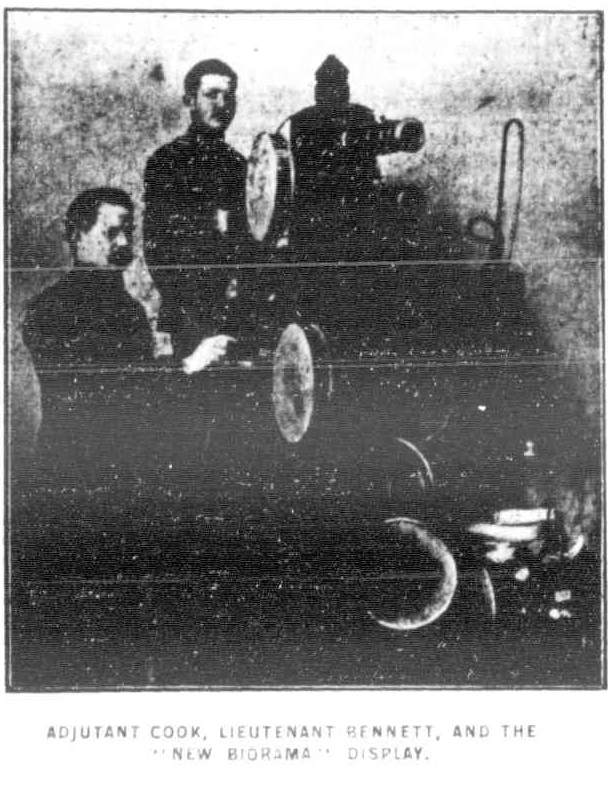
Screenings were generally held in local halls, but it was the Biorama Companies sometimes used the sides of buildings as screens so that passersby could see it. When Herbert left the Salvation Army (taking the original Soldiers of the Cross material with him), he was replaced by Commissioner Thomas McKie. McKie encouraged the expansion of the Limelight Department, the creation of additional Biorama Companies and even the reshooting of Soldiers of the Cross in 1909, titled Heroes of the Cross. In addition to the evangelical material produced for the Biorama Companies, the Limelight produced many films for private clients and the government. Some of the most notable of these were films showing the royal visit of the Duke and Duchess of York for the opening of the first sitting of the Parliament of Australia (the session itself could not be filmed due to poor lighting), the visit of America's Great White Fleet, and the Victoria's Second Boer War Contingent leaving South Africa. Engaging in such private contracts was a way in which the Limelight Department raised capital to support its operation and the operation of other Salvation Army programs.
Captain Sidney Cook married Mildred Jane Wise on January 16th, 1899 in Melbourne - the ceremony was performed by Commandant Booth. The following two articles give a short precis of his works:
PIONEER FILM SHOWMAN
Death Of Mr. Sidney Cook
The death occurred yesterday of Mr. Sidney Cook, a veteran showman and a pioneer in the photographing and screening of moving pictures in Australia. The sturdy, cheery personality of Sidney Cook was as familiar in any of the backblock townships of Queensland as in Queen Street. He did much useful service with the Salvation Army at one time, showing early religious films. He made history in many an outback settlement and town by photo- graphing the streets and gardens and the pedestrian and vehicular traffic by day and showing the moving pictures at night. Mr. Cook made several interesting educational and travel films for the Commonwealth Government and for tourist bureaus. For many years he conducted his own theatre in the Valley and later at Clayfield. PIONEER FILM SHOWMAN (1937, March 24). The Courier-Mail (Brisbane, Qld. : 1933 - 1954), p. 19. Retrieved from http://nla.gov.au/nla.news-article36892232
EARLY DAYS IN AUSTRALIA.
LATE MR. SIDNEY COOK'S WORK.
The early days of motion pictures in Australia and their connection with Mackay are recalled by the death in Brisbane recently of Mr. Sidney Cook (says the "Mackay Mercury").
In 1883 the late Mr. and Mrs. John Cook arrived in Mackay from England accompanied with their family of seven. Including in the family was the late Mr. Sidney Cook, who attended the Mackay State school under the late Mr. J. R. Norris, and worked in the late Mr. W. Robinson's foundry at the corner of Nelson and Victoria streets, where he served his time as a moulder.
Having completed his time, the late Mr. Sidney Cook did not continue at his trade. Being a keen musician he left Mackay and joined the famous Salvation Army Guards Band in Melbourne about 1889. He remained with the band for three years before pioneering cinematographic work, which was then in its infancy. He was the first man in Australia to accomplish photography and developing in one day and show the pictures that night.
GOVERNMENT PUBLICITY OFFICER.
It was not long before the late Mr. Cook started his career as a motion picture exhibitor. Leaving Melbourne, he went to Sydney, where he became cinematographer for the New South Wales Government, and took publicity pictures. Later he went to Brisbane, where he resumed exhibiting pictures, with headquarters in Brunswick-street, Valley. He also became cinematographer and publicity officer for the Queensland Government, and took pictures all over the State of various industries.
The late Mr. Cook was sent home to the Franco-British Exhibition at London to show these pictures, and granted six months in which to screen them all over the British Isles. Returning with a company from Great Britain, he commenced to tour Queensland, his brother, Mr. William Cook, now of Mackay, assisting him in his travels. The greater part of North Queensland was visited.
MINE "ACCIDENTS" SCREENED.
With the co-operation of the mine authorities a special picture was taken of an accident at Charters Towers. The picture, which was regarded as an out-standing film at the time, showed a man being placed on a stretcher and brought to the top of the shaft. The ambulance, then in its primitive stage, was in attendance, and the "victim" was placed on a litter behind a sulky and rushed away to hospital. Another film taken the same day was a meeting of old mining identities walking arm in arm in conversation. Both films were developed in a hotel cellar, and when they were shown that night before a crowded theatre, the spectators were delighted.
A Ravenswood resident of wide renown in those days was Mr. Dan Moran, a well-known collector of snakes. Pictures were taken of him at work and also of his numerous snake cages.
AT MOSSMAN MILL IN 1904.
It is interesting to recall that Mr. Jim Chimes, who now resides in Mackay, was one of the early "actors." When he was working on the weighbridge of Mossman mill in 1904, it was arranged that the late Mr. Cook should photo-graph the mill. Recalling the incident, Mr. Chimes states that he apparently was the only man at the mill who did not know it was being taken, conse-quently he was the only person in the film who appeared natural!
BUSINESS VENTURES FAIL.
In later years the late Mr. Cook established theatres in most of the coastal towns of Queensland. Mackay was omitted in view of the fact that it was desired to concentrate on Brisbane. The late Mr. Cook travelled widely over every State of Australia and throughout New Zealand. Unfortunately owing to unforeseen circumstances a number of the ventures in Brisbane failed, and the late Mr. Cook lost heavily.
Continuing his interest in the picture business, the late Mr. Cook travelled extensively with a portable plant in South Queensland, where his name became a household word among thousands of people. Failing health forced him to retire, and he took up permanent residence in Brisbane. He is survived by a large family. He also has two brothers, William and Harry, in Mackay, and a sister, Mrs. G. Williams, residing in Epping (Sydney). His mother and father, one brother, and one sister were buried in the Mackay cemetery. MOTION PICTURES. (1937, April 12). Cairns Post (Qld. : 1909 - 1954), p. 10. Retrieved from http://nla.gov.au/nla.news-article41812565
Raine and Horne, Ltd. This firm will this afternoon submit to competition the Narrabeen Park Estate, at Narrabeen There are 41 lots to select from. Most of these have a frontage to water reservation, and others to the main Pittwater-road. REAL ESTATE. (1928, November 17). The Sydney Morning Herald (NSW : 1842 - 1954), p. 10. Retrieved from http://nla.gov.au/nla.news-article16509816
MIGHT HAVE HAD £250,000, BUT GETS £2/10/- A WEEK
Sydney- Man Who Fought Salvation Army for Ancestral Estate
THE ARMY'S "NO BEER" COVENANT.
SO passes the glory of the world — in a mist of Blood and Fire. It is as well for Phillip Jenkins that he is a philosopher. The Jenkinses are gone — save for him, and he is 72, and childless. The homestead, built a century ago to nurse a proud line of colonial barons, has crumbled under the hands of the demolisher. The erstwhile forest lands are bare grassy hills scarred with new roads, and the old farm fields sprout a harvest of houses. Flivvers buzz over the landscape, trippers, weekenders, outer-suburbanites and market-gardeners throng the fertile valleys, and the estate agent is everywhere. And only yesterday all was silence, all was solitude.
The Jenkins held sway over a thousand acres, another settler ran cows back in the hills, a former assigned servant of James Jenkins tilled his land a little way up the coast, and between there and Brook-vale there was no one else to trouble the sea, and the sky, and the sand, and the scrub. As Phillip Jenkins grew up, fishing off Long Reef, hunting in the hills, riding over the estate that passed to his aunt Elizabeth, who had adopted him when his father died, others came to the district. It was still a wild region, the newcomers were wild folk, and wild deeds followed. They will still show you the place in the bush behind Narrabeen where murder stalked one night, and tell you that a convict came there to find a brutal master of earlier times, and strike him down. They will tell you how many a man was "put away" in those dark times by neighbors ill-disposed, and hint at wild orgies in the "Narrer Bean Camp" of the blacks — so called from the long slender native beans that grew beside the lake there. This was Phil. Jenkins' environment, but he was not of it. Up in the old homestead he lived under the care of an eccentric maiden lady who saw sin in almost all things, but who husbanded carefully the estate her father had left to her care. Phillip never thought hut that he would be heir to the lands his grandfather had pioneered. It was early in last century when James Jenkins came from England and started a shop in Sydney. Later a land grant of 200 acres at Deewhy was made to him and to one, William Cossar, a grant was made of 600 acres situated to the north of Jenkins' land. Jenkins later bought Cossar's land as well as 188 acres known as Sheep Station Hill on the northern side of Narrabeen lagoon. On re-measurement in after years this land is shown to be 259 acres. When Jenkins died, over 900 acres passed to his three surviving children— Elizabeth, Martha, and John. The other son, James, had died, leaving his son, Phillip, another part of the original holding-, which he later lost.
In 1885 Elizabeth, the leading spirit of the three, became interested in the work of the Salvation Army and from time to time she made gifts of money and land to the institution. Finally, in 1894 she was instrumental in having the whole of the land transferred to the Army in return for an annuity of £175, and an undertaking to take over her liability in connection with certain bank shares which she held. Miss Elizabeth Jenkins died in 1900 and her will under which she left all her remaining estate, amounting to £120, to the Army also, was attacked by Phillip Jenkins on the ground of incapacity and undue Influence.
Evidence in the Equity Court showed that she was an eccentric woman. The Judge refused probate, which had been asked for by Brigadier John Hendy of the Army, who, with Thomas Coombs, had been appointed executors. On appeal to the Full Court in 1901 this decision was reversed, Hendy and Coombs being granted probate. If the will could have been proved invalid, an attack would have been made on the deeds of settlement. At the time the deeds were executed an understanding was reached between members of the Jenkins family and the Army that although the latter was legally entitled to assume possession of the property, nothing would be done to disturb Its condition during the lifetime of any member or the family. This agreement was observed by the Army. Nothing was done until John's death about 1911 — Martha had died many years before. The tramway to Narrabeen was built in 1911-12 and opened for traffic on Eight Hours' Day, 1912. On that day the Salvation Army held its first sub-divisional sale, when land adjoining Collaroy Beach averaged over £5 a foot. Conditions of that sale — and of all subsequent subdivisional sales— were that all fences erected must be approved by General William Bramwell Booth, and that the purchasers and the registered proprietors for the time being must not sell, permit to be sold, or connive at or be parties to the sale of any intoxicating liquors on the land. In addition, there was a condition in respect of the first sale prohibiting the carrying of liquor In the land.
Subsequently the Army applied to bring one part of the land, the area of which was 824 acres, under the Real Property Act, but the Crown claimed that Deewhy Lagoon of 62 acres, which was included in the application, was not a part either of the Jenkins or the Cossar grant. The present Chief Justice, sir Philip Street, sitting in Equity, held that the lagoon waters were not tidal, waters, and that they, were included in one or other or both grants, Followed an appeal, about 1910, to the High Court, which decided that the Crown was entitled to all the area from time to time covered by water. As Deewhy lagoon was continually being drained, the judgement that the ownership of the land would shift from the Crown to the Army, and vice versa, with the covering and uncovering of the land by water. The obvious difficulty of interpreting the ownership based on this unusual judgement resulted in a compromise being reached.
The estate, for the most part a narrow strip skirting the coast from Deewhy to Mona Vale, comprised originally about a thousand acres. The Salvation Army authorities have shown careful discrimination in in the manner of their throwing the estate open for sale, having regard to its value in the coming years as an aid to the Army's work. Large sums of money have been laid out in the developmental work— — in the construction of roads, bridges, etc. To date about two-thirds of the total area has been disposed of, and further sales are planned for the early future. On the estate the Salvation Army has established a colony for aged men, about 85 being in residence there: also a large Home for Boys. A section, at Collaroy, is set apart for the purposes of a seaside holiday ground — used, among, other things, as a fresh-air camp for poor mothers and children from the city and suburbs, also for children from various metropolitan Institutions. In addition It provides a summer camping ground for the Army's Life Saving Scouts and Guards and other young people. Then there are erected on the estate two Salvation Army halls —one at Deewhy and one at Collaroy. The Army has been generous in its gifts from the property for public purposes, such as recreation grounds at Dee-why, Collaroy, Narrabeen, and Mona Vale. In addition to the usual statutory area for reserves, it set apart for similar purposes a strip, of foreshore extending from Narrabeen to Mona Vale. The popular Griffiths Park, comprising at 177 acres, probably the most attractive section in the whole district, was included in the original estate. Proceeds of land sales are credited to a central fund at headquarters, for the purpose of assisting in the erection of Institutions for the care of the friendless and needy, also halls in localities where it is not possible locally to raise sufficient funds. ' Further, one-third of the net proceeds of sales is devoted to the missionary operations of the Army, which are now well established in India, Burma, China, the Dutch Indies, Korea, Zululand, Nigeria, and Kenya, From Australia many Salvation Army officers have gone forth to these lands in connection with missionary service. In all this, the Salvation Army claims that the intentions of Mr. and Miss Jenkins, from whom the Army derived this property, are being observed both in spirit and In deed. Not one penny of the proceeds of the estate, Army officials make clear, is used for the personal benefit of any, but those for whose aid the Army
During the past two years (owing to expenditures required for development purposes) the Army has not benefited at all from the estate. But prior to that period, for some twelve years the proceeds of the estate have assisted the funds of the organisation to the extent of about £9000 a year. Meanwhile, Phillip Jenkins . is philosophical. He has a roof over his head, a few shillings to keep the wolf from the door, a few old friends, and a good wife. He has farmed his little block in the past, but now, getting on in years, and in poor health he sits on his verandah watching the golden lemons dropping off his trees for want of a payable market, rather like golden coins slipping from a man's hand. He is philosophical. If ever he does cry out against Fate, rate's answer, it seems, is a lemon.
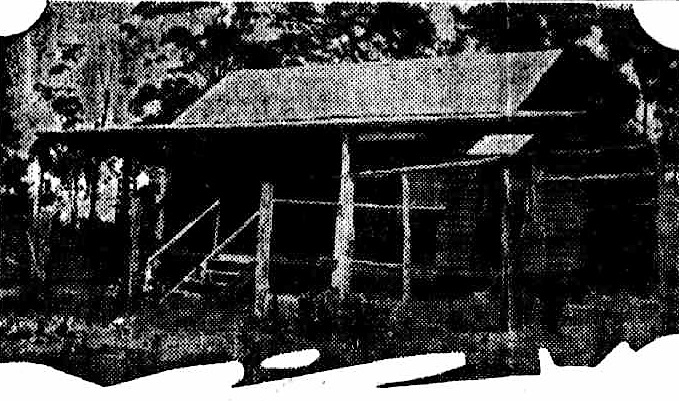
Phillip Jenkins' Cottage in the Narrabeen Bush
IN a weatherboard cottage in the bush at Warriewood, a few miles from Narrabeen, lives a man who, but for an old woman's whim, might today be worth, anything up to a quarter, of a million pounds. He is Phillip Jenkins, sole survivor of a family that settled in the district 100 years ago, and to-wards the end of last century owned, land from Narrabeen to Deewhy
THAT land was transferred to the Salvation Army by Phillip Jenkins' aunt, Miss Elizabeth, and approximately £108,000 has already accrued to the Institution from the sale of a portion of the property. Jenkins fought the Army at law and lost. Now, he receives from the Salvationists an annuity panning out at £2/10/- a week.
.jpg?timestamp=1534833646312)
PHILLIP JENKINS
MIGHT HAVE HAD £250,000, BUT GETS £210- A WEEK (1928, November 3). Smith's Weekly (Sydney, NSW : 1919 - 1950), p. 2. Retrieved from http://nla.gov.au/nla.news-article234382625

Narrabeen Park 4th subdivision 1929, Item No.: c050370040, courtesy courtesy State Library of NSW, Album: Narrabeen Subdivision
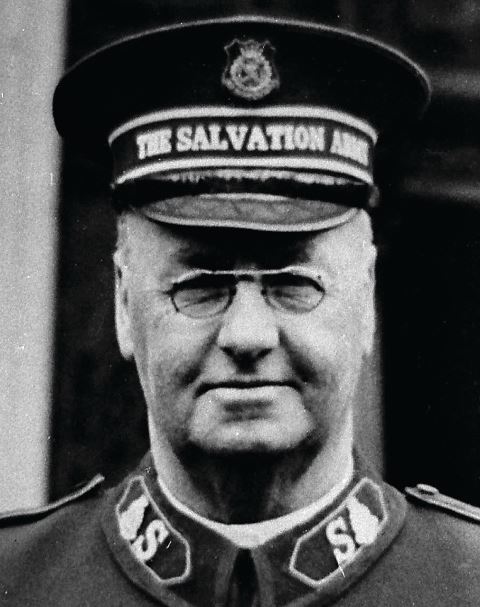
MR. LESLIE ARNOTT.
Death Announced.
Mr Leslie Arnott, governing-director for 40 years of William Arnott, Ltd., biscuit manufacturers, died at his residence, Wyuna Court, Wyuna-road, Point Piper, yesterday. [photo]
Mr Arnott was born at West Maitland in 1856. As a business man he showed great forceof character and initiative. He was keenly alert to every new innovation which could be applied to the biscuit industry and as a result of his trips to England, Europe, and America, he made many improvements, a number of which were in advance of overseas methods. He was ever restless to improve, perfect and expand the industry. His health began to fail a couple of years ago and he soon afterwards retired from active business.
Mr Arnott always took a keen interest in sport. In his younger days he was a prom-inent amateur boxer. He was president of the Newcastle City Bowling Club from 1913 to1929 and he represented New South Wales in interstate matches on several occasions. From1908 to 1924 he was patron of the Northern District Bowling Association. He was a member of the Commercial Travellers Club.
Mr Arnott is survived by Mrs Arnott, three sons (Messrs Herbert Leslie, Walter E., and Harold Arnott) and two daughters (Mrs C. Hollinshead and Mrs C. Barrett). His brothers are Messrs S. S. Arnott, W. Arnott, Colonel J. M. Arnott, Dr H. R. Arnott and Brigadier-General Arthur Arnott (Melbourne). There are four sisters—Mrs J. Terry, Mrs Mander- Jones, Mrs Stephenson, and Miss Monica Arnott
The funeral will leave the residence at half-past 11 o'clock this morning for the Crematorium, Rookwood. Out of respect to the late Mr Arnott the factory at Homebush will be closed today.
OUTSTANDING BUSINESS MAN
Mr C. M. McDonald, president of the Employers' Federation of New South Wales, and chairman of the Northern Collieries Association, said last night that Mr Arnott's death would be greatly deplored by all who had had the privilege of knowing him. He had shown himself an outstanding business man. During the whole of his business career he has striven to make the lot of his employees a happy one, and it could safely be said that he had achieved that object. His employees would greatly miss him. MR. LESLIE ARNOTT. (1931, February 26). The Sydney Morning Herald (NSW : 1842 - 1954), p. 13. Retrieved from http://nla.gov.au/nla.news-article16757362



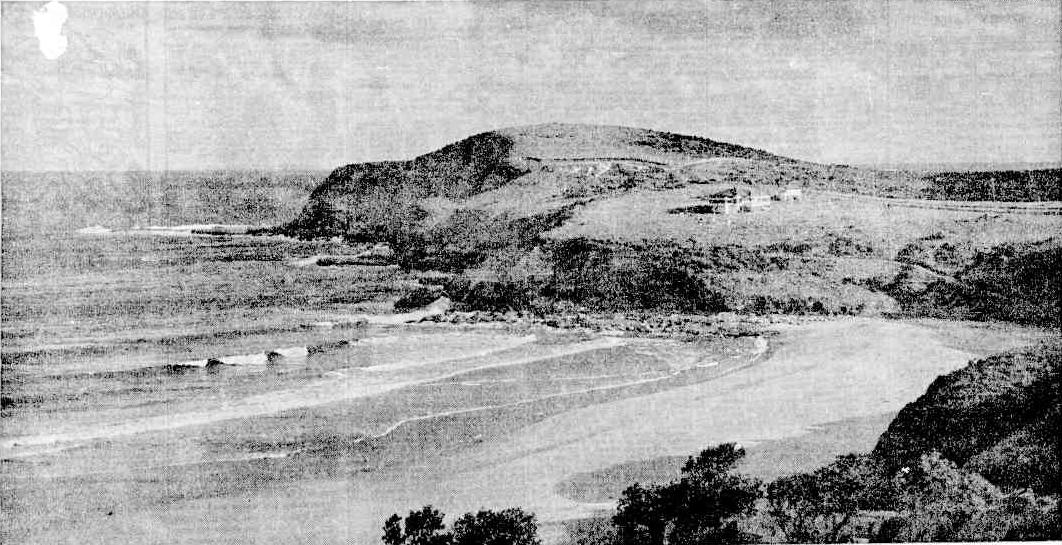
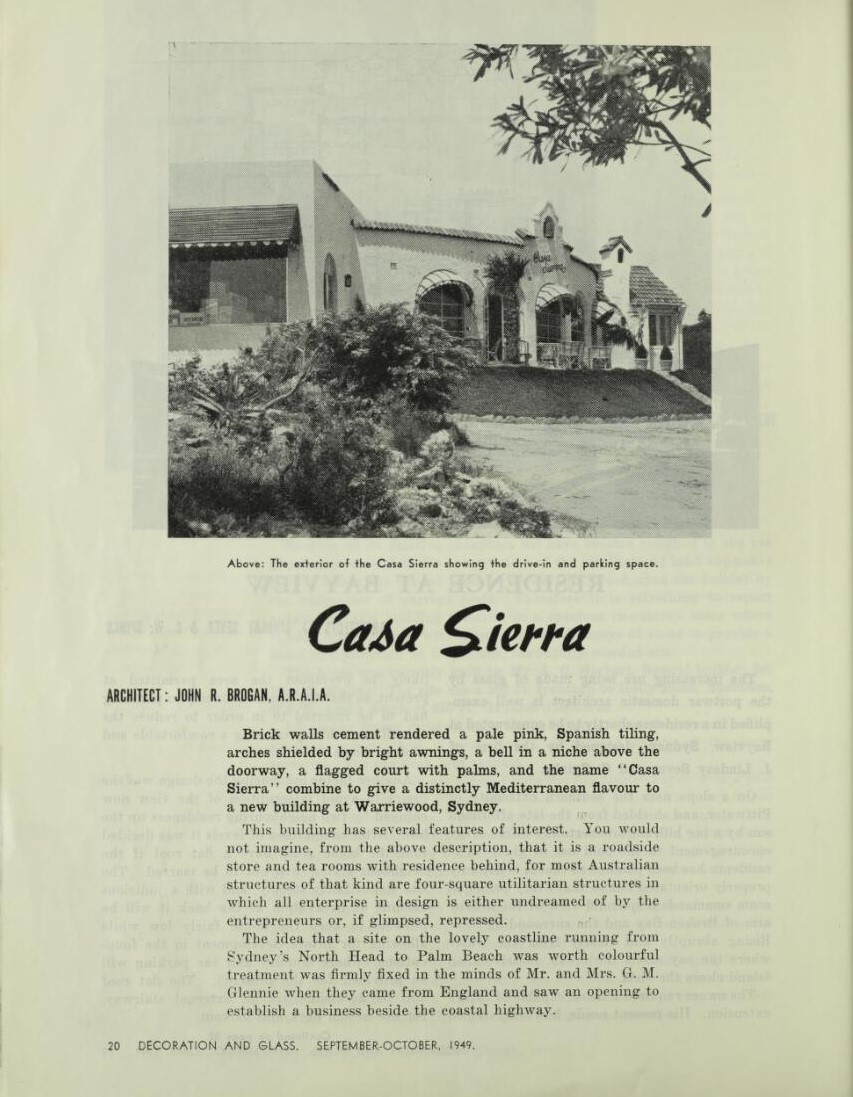
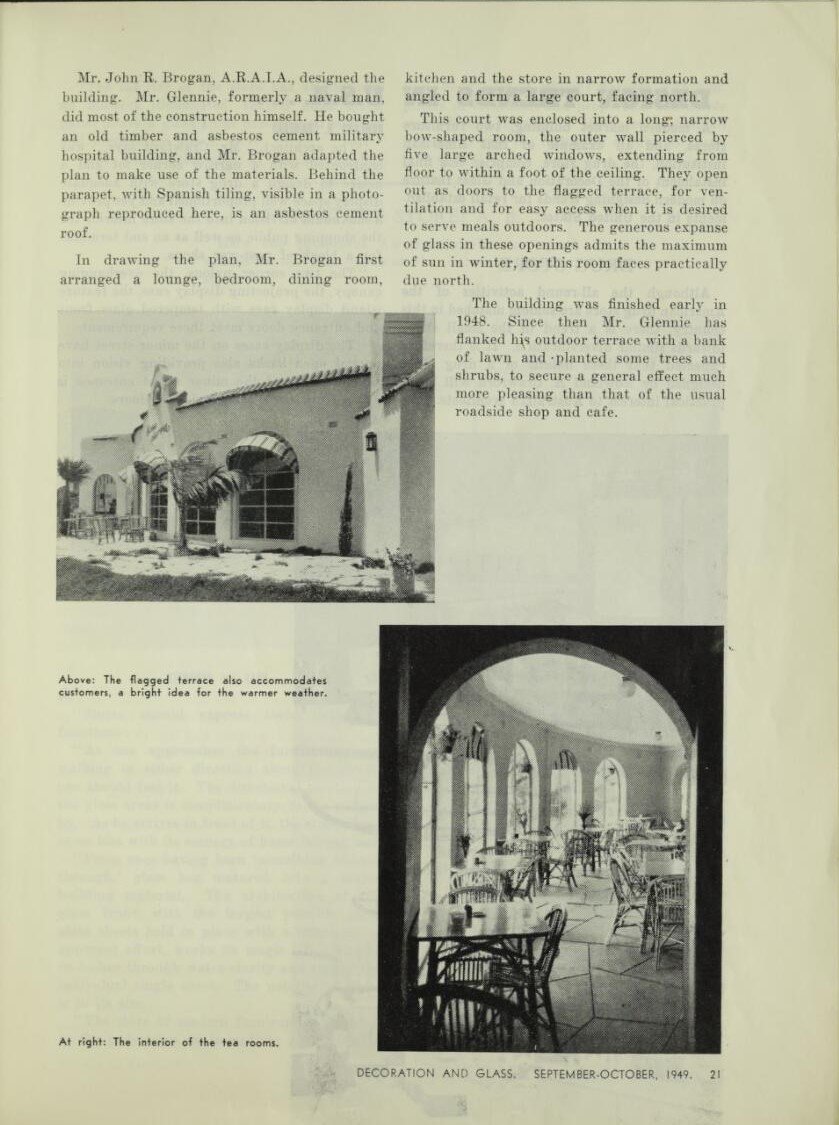
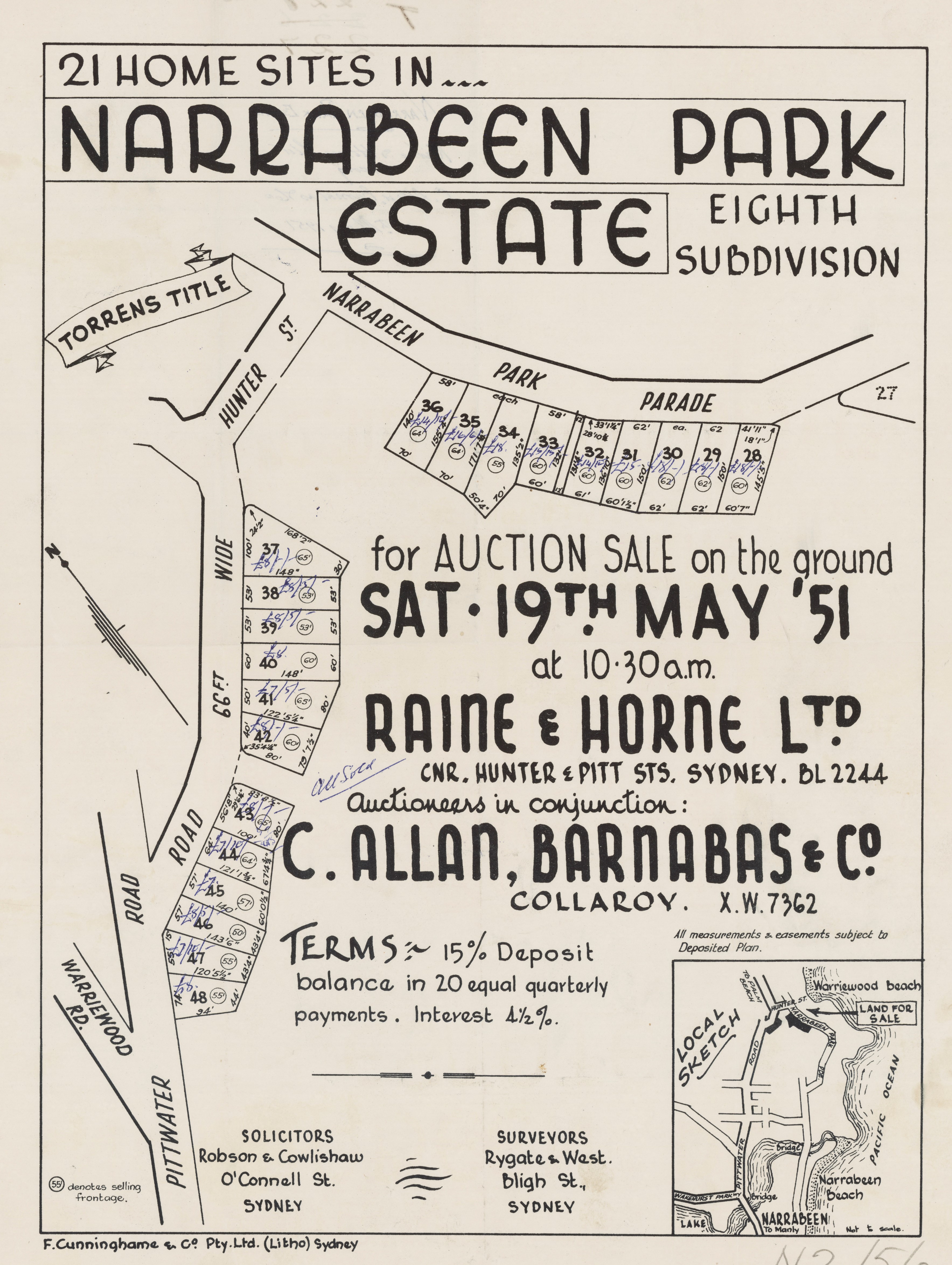
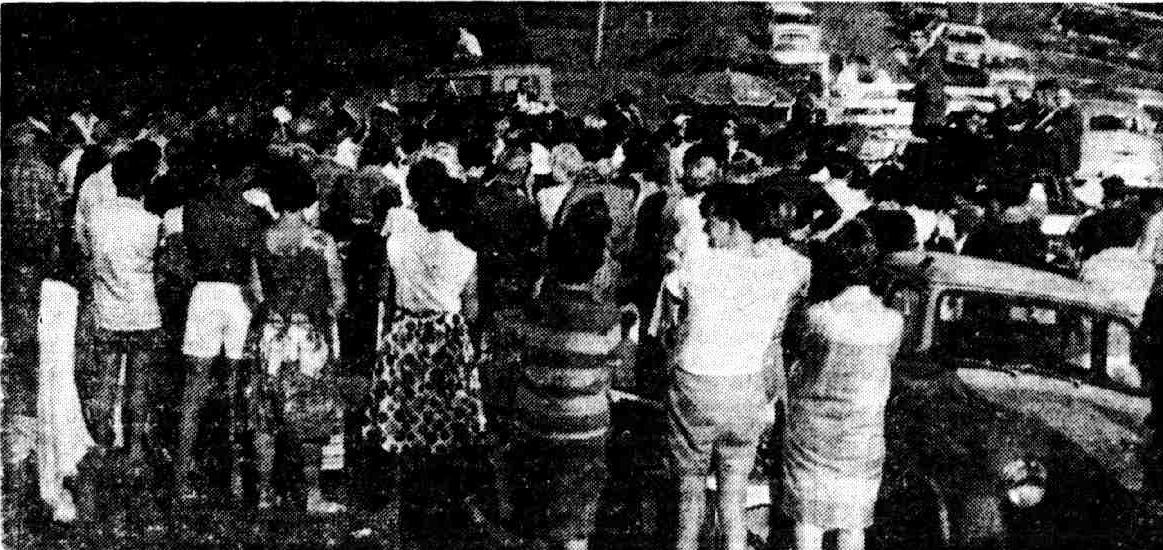
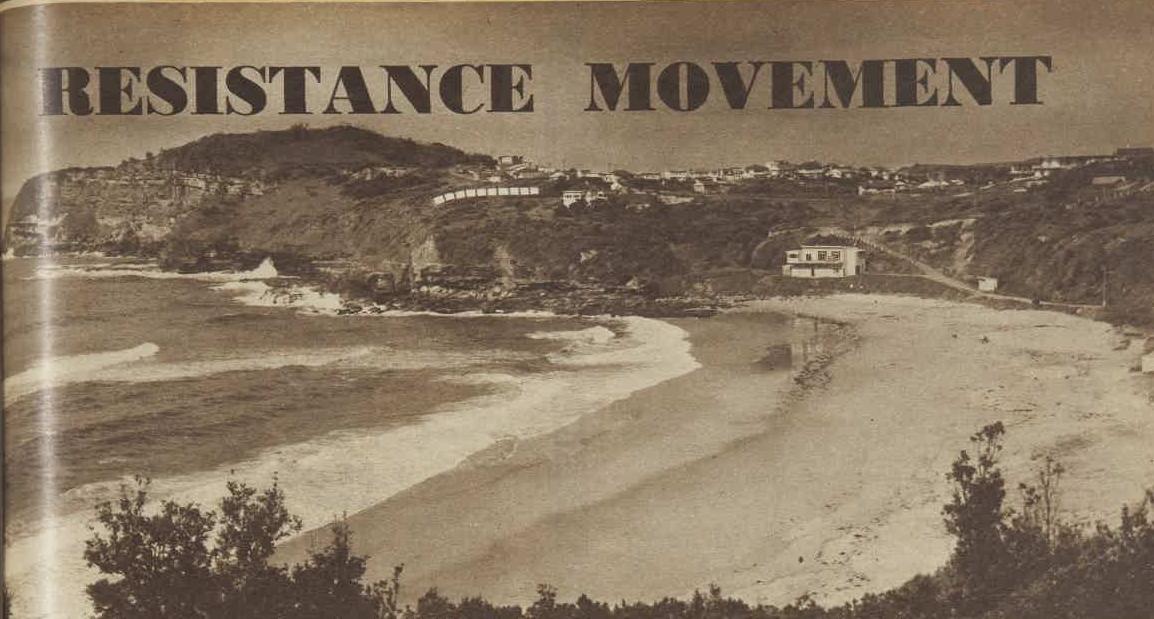
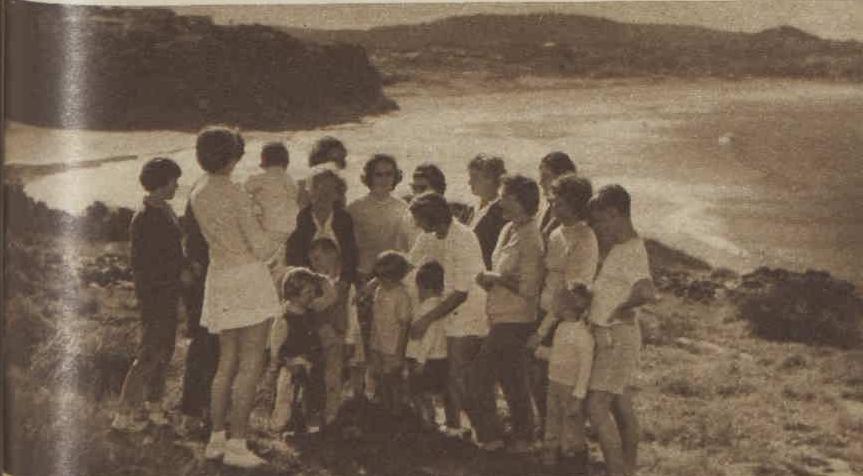
Some Of The People Behind The Street Names
Henry Ferdinand Halloran (1869-1953)
Henry Halloran was born in August 9th 1869 at Glebe in Sydney. His mother was English lady Adeline Burgess, née Reuss, his father Edward Roland Halloran, an architect.
On the 9th instant, at her residence, Glebe Point Road, the wife of E. R. HALLORAN, of a son. Family Notices (1869, August 11). The Sydney Morning Herald (NSW : 1842 - 1954), p. 1. Retrieved from http://nla.gov.au/nla.news-article13181081
His maternal grandfather Ferdinand Hamilton Reuss was a well known civil engineer and surveyor who worked as an architect and builder in Sydney during the 1870s and 1880s. Edward Halloran and Ferdinand Reuss were business partners, and this no doubt played a part in Henry's future career as a property developer.
His paternal great great grandfather Laurence Hynes Halloran was a convict, poet, journalist, pioneer educator and convicted bigamist.
His grandfather Henry Halloran was was a public servant and published poet, whose first wife Elizabeth was the daughter of colonial ship owner and merchant Joseph Underwood, and second wife Julia Guerin was a well known feminist and activist.
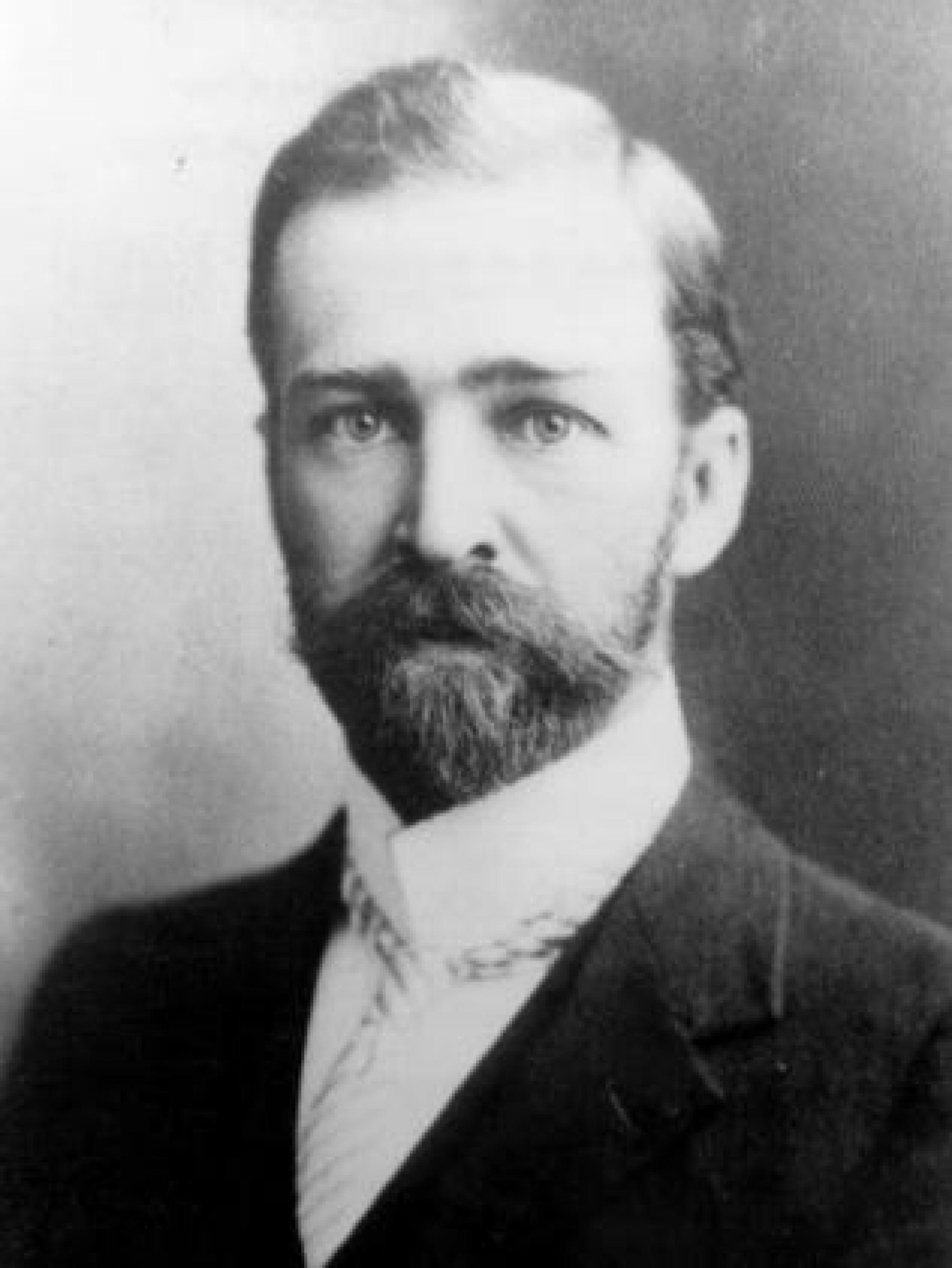
Halloran became a licensed surveyor, valuer and conveyancer, and by 1897 had set up in Sydney as Henry F. Halloran & Co., specialising in land and property dealings. Known for his American style high pressure salesmanship, colourful brochures and over the top advertising, he was the first to produce artistically styled estate layout plans. These were quickly adopted by other land developers.
The company prided itself in offering every professional service needed - from acquiring land to surveying, developing and selling it - another radical idea which departed from traditional real estate practice.
The showmanship and flair exuded as a salesman did not mean he was not a consummate professional in his field, as evidenced by his involvement in his industry's professional bodies. Henry was
- a vice president of the Town Planning Association of NSW, a member of the Royal Institution of Chartered Surveyors in London
- a member of the American Institute of Planners
- a fellow of the Royal Society of Arts
- a fellow of the Institution of Surveyors, New South Wales
His passion for local history ensured his membership of the Royal Society and the Royal Australian Historical Society.
Most of the Halloran developments were coastal and besides 'Warriewood' (Wharriewood) he was behind subdivisions at Seaforth, Cronulla Highlands, Stanwell Park, Avoca and Yow Yow (near Gosford) during 1906-1908.
Many of his more ambitious plans never really eventuated as they coincided with the Great Depression. His business survived two world wars and two major economic dislocations: the boom of the 1880s when speculation in land was rampant followed by the depressed 1890s, and the land boom of the 1920s followed by the economic collapse of the 1930s.
In 1903 in Sydney he married a divorcee Alice Mabel Cobcroft (d.1921), née Chowne.
AN ABSENT SPOUSE.
Alice Baker, formerly Cobcroft, petitioned for a dissolution of her marriage with James Baker, on the ground of desertion. The parties were married in April, 1895, at St. Phillip's Church, Sydney, according to the Anglican rites. The petitioner demised that her husband was a solicitor, and, in November, 1899, he said that things were going against him, and he would Proceed to South Africa. She replied that if he went away she would go with him, but to this he did not agree. She did not wish him to go away. After he left her they corresponded, the last letter which he received from him being in June 1901. He had never contributed to her support since he proceeded to South Africa, and she was at present managing a boarding-house for her sister. A decree nisi was granted, to be moved absolute in six months. AN ABSENT SPOUSE. (1903, November 23). Evening News (Sydney, NSW : 1869 - 1931), p. 4. Retrieved from http://nla.gov.au/nla.news-article113802402
HALLORAN— COBCROFT.— Dec. 23, 1903, at the Scots Church, Sydney, by the Rev. W. M. Dill Macky, D.D., Henry F. Halloran to Alice M. Cobcroft. Family Notices (1904, January 13). The Sydney Mail and New South Wales Advertiser (NSW : 1871 - 1912), p. 126. Retrieved from http://nla.gov.au/nla.news-article163989899
They had two children: Maxwell (born 1905 at Strathfield), and Henry Fairfax (born 1912 at Mosman). Alice also had a child, Alan, by a previous marriage, who he adopted.
Alice passed away in May, 1921. The below poem was written by a son of Henry's grandfather Henry and grandmother Elizabeth Henrietta:
UP THE CREEK WITH ALICE
Narrabeen, 1920.
By HORACE C. HALLORAN.
BLUE depths above, clear depths below
That mystic shadows stipple,
Where wide-eyed mullet, wheeling slow,
Scarce heed our skiff's soft ripple.
Sheer walls of rock, sweet fields of green
'Midst summer's woodland palace —
I float in fairyland between,
'Way up the creek with Alice
CLEAR depths below, blue skies above,
And in the stern reclining
A priestess at the shrine of love,
With dear eyes soft and shining.
Who would not cast the world behind,
Its sin, and strife, and malice,
And thank the gods that they were kind
When up the creek with Alice?
I STILL can hear 'midst fragrant fern
Her laughter clear and ringing;
Can feel the touch of lips that burn,
And white arms soft and dinging.
Oh! give me back the golden hours,
The draughts from joy's pure chalice
I quaffed among the flannel flowers
'Way up the creek with Alice.
UP THE CREEK WITH ALICE (1921, January 5). Sydney Mail (NSW : 1912 - 1938), p. 12. Retrieved from http://nla.gov.au/nla.news-article159037860
DEATHS. HALLORAN.—3rd May, 1921, at her residence, "Royston," Locksley Street, Killara, Alice Mabel, dearly loved wife of Henry Ferdinand Halloran, after a short illness.
HALLORAN.—The funeral of ALICE MABEL, dearly beloved wife of HENRY F. HALLORAN and mother of ALAN, MAX, and FAIRFAX HALLORAN, will leave her late residence, "Royston," Locksley Street, Killara, TO-MORROW (WEDNESDAY) AFTER-NOON, at 2 o'clock for Waverley Cemetery. Friends please meet at Cemetery Gates (Motor Funeral). WOOD COFFILL LIMITED, Funeral Directors. Family Notices (1921, May 3). Evening News (Sydney, NSW : 1869 - 1931), p. 6. Retrieved from http://nla.gov.au/nla.news-article118899117
In 1924 he married, at Manly on March 26th, Amy Gwendoline, née Powell, and they had two sons and two daughters; Joyce, Audrey, Warren and Laurence.
HALLORAN-POWELL March 26 at St Matthew's Church, Manly, by the Rev R B S Hammond, Henry Ferdinand Halloran, of Sydney, to Amy Gwendoline second daughter of the late Maria Louisa and Charles Edward Powell. Family Notices (1924, April 19). The Sydney Morning Herald (NSW : 1842 - 1954), p. 12. Retrieved from http://nla.gov.au/nla.news-article16139063
Halloran travelled to town planning conferences in Europe in 1923 and 1924. He set up a London office of Henry F Halloran and Co. in June 1923, becoming the first Australian agent to do so.
Realty Realizations Ltd. was established by Henry Halloran in the 1930's, and is still trading under that name and headed by a Halloran descendant today.
Henry Halloran died unexpectedly in October 1953. Typical of such a hard working individual, the 84 year old passed away on a bus on his way to work.
Sydney, 2nd November, 1979.
NOTIFICATION OF PROPOSED OPENING OF ROADS
IN pursuance of the provisions of the Public Roads Act, 1902, I propose to consider the opening of certain roads as hereunder described.
All persons interested are hereby called upon to set forth in writing and forward to the Under Secretary for Lands within one month from the date of publication of this notice any objections which may appear to them to exist to these proposals.
Plans illustrating these proposals may be inspected at the office of the Department of Lands in Sydney or for a period of one month from the date of this notice, at the office of the Crown Land Agent for the Land District specified in the particular notice.
W. F. CRABTREE, Minister for Lands.
Descriptions
Parish Cobbinbil, County Gowen, Land District and Shire Coonamble. Opening of a road within portions 31 and 39, D.P. 193796. Rds 78-969. Hydon Pty Limited. Proposed resumption: About 3.649 hectares, freehold, being part portions 31 and 39 Parish Kincumber, County Northumberland, Land District and Shire Gosford
Proposed widening of Avoca Drive, Avoca, D.P. 193380. (Council's reference: 1350/10.) Rds 79-19. Amy Gwendoline Halloran, Joyce Halloran, Audrey Halloran, Warren Halloran and Laurence Halloran. Proposed resumption: About 159.4 square metres, freehold (minerals only), being part portion 44, being also parts lots 305 and 306. D.P. 9406.
Parish Narrabeen, County Cumberland, Land District Metropolitan, Shire Warringah. Proposed widening of the northeastern corner of the intersection of Kalang Road and St Andrews Gate, Elanora Heights, D.P. 193768. Rds 79-300. Luka Trifunovic, Vaso Trifunovic and Milan Trifunovic Proposed resumption: About 92.96 square metres, being part freehold lot 189, D.P. 24922. NOTIFICATION OF PROPOSED OPENING OF ROADS (1979, November 2). Government Gazette of the State of New South Wales (Sydney, NSW : 1901 - 2001), p. 5501. Retrieved from http://nla.gov.au/nla.news-article219972981
Gustave Adolph Lix (1836 - 1920)
From Galle Mr. Gustave Lix.: SHIPPING. ARRIVALS.—JULY 18. (1879, July 19). The Sydney Morning Herald (NSW : 1842 - 1954), p. 4. Retrieved from http://nla.gov.au/nla.news-article13438846
THE INTERNATIONAL EXHIBITION.
Among the passengers by the mail steamer Siam, which brought the Japanese Commissioner, were M. Gustave Lix and M. Bourdil, the former of whom is the commercial agent for the French exhibitors, and the latter a gentleman to whom has been entrusted the duty of fitting up the French Court and arranging the French exhibits. M. Lix was secretary to the French Commissions at the exhibitions of London, Vienna, and Philadelphia. The French man of-war, with the Commissioners and exhibits, is daily expected to arrive. The Commandant and Commissioner-General is Captain Adolphe Francois Mathieu, formerly Governor of New Caledonia, and his staff consists of M. Mario Paul Cave, second in command ; M. Emmanuel Victor Thomas Marie de Kernafflen de Kergos, midshipman ; M. Auguste AlexisI Fran Cois Lefevre, midshipman ; M. Alfred Guth, midshipman ; M. Aimé Isidore Vergé, midshipman ; M. Charles Jean Fran Cois Cauvin, surgeon ; M. Paul Henri Chasseriand, assistant surgeon ; M. Andre Stephen Ande, assistant Commissioner at the head of the Secretarial Department of the Commission ; M. Bourdil, already mentioned ; M. Arthur Menard, private secretary to the Com-missioner-General ; M. Ollive. M. de Savignon, M. Soudry, M. Ladislas Zamoiski, deputed respectively to report upon agricultural, commercial, financial, and other matters in the colony.' The Japanese Commissioner, Mr. Haruo Sakata, and his two secretaries, Mr. J. Watanabe and Mr. Y. Murakami, were shown over the Exhibition building and grounds on Saturday by Mr. B. H.d'Avigdor, private secretary to the Executive Commissioner, and expressed themselves as highly delighted with the site pointed out to them as the probable location of Japan-namely, in the north-eastern portion of the build-ing. Mr. Sakata is a gentleman of considerable distinction in his own country, and has had a large experience in European countries. He speaks English fluently, as do also his two secretaries. The other Japanese who accompany him are exhibitors. Mr. J. de Groot, who came to Sydney as the commercial representative of several Netherland houses, has been introduced by the Dutch Consul as the official representative of Holland. M. Albert Van Schalle, the Belgian Commissioner, has paid a visit to the Exhibition building, with which he expresses himself as highly pleased. The secretary is Mr. John Lodwidge. The foreign Commissioners are to be presented by the Executive Commissioner (Mr. P. A. Jennings, C.M.G.) to his Excellency the Lieutenant-Governor to-morrow in his capacity of President of the Commission. M. Prosper Lamal," the representative of a largo number of Belgian exhibitors, and_ who filled a similar office at the Paris Exhibition, arrived in Sydney by the Lusitania, and has taken up his residence at 22, Charlotte-place. Besides the French man-of-war, au Austrian and a German man-of war are on their way to Sydney with Commissioners and exhibits. We understand that it is intended to hold an International Exhibition in Japan in 1881. THE INTERNATIONAL EXHIBITION. (1879, July 22). The Sydney Morning Herald (NSW : 1842 - 1954), p. 7. Retrieved fromhttp://nla.gov.au/nla.news-article13439089
Gustave Lix has charge of this excellent exhibit and also of a display of French Cashmere shawls in several qualities, sent by E. Breant, of Paris. The artificial flowers exhibited by C_ Poitevinet Sour, Palis, are very beautiful, violets, pansies, roses, lilies, in bouquets, a garland of many coloured... daffodils, veronica, and ferns in clusters, and some immense blossoms and leaves of velvet richly coloured. One large bouquet contains a great variety of spring and summer flowers most beautifully made -and faithfully coloured. Mr. Lix represents the exhibitors. ARTICLES of APPAREL and PERSONAL ADORNMENT in the EXHIBITION. (1880, April 13). The Sydney Morning Herald(NSW : 1842 - 1954), p. 3. Retrieved from http://nla.gov.au/nla.news-article13457925
DAILY SALES At the Melbourne International Exhibition - Under Instructions from FRENCH, AUSTRIAN, PRUSSIAN, INDIAN, and Other Exhibitors. A Vast Quantity of EXHIBITION GOODS, GEMMELL, TUCKETT, and Co have received Instructions to SELL by AUCTION, at the Melbourne International Exhibition, on days to be mentioned in future issue, French Austrian Prussian Indian, and Intercolonial exhibits, Comprising A large variety of goods...Under instructions from M Gustave Lix, Messrs Boring and Dorrmann, Messrs Jas M'LaannndCoM Felix Doohllng M Telllor…. Advertising. (1881, April 21). The Argus (Melbourne, Vic. : 1848 - 1957), p. 2. Retrieved from http://nla.gov.au/nla.news-article5980816
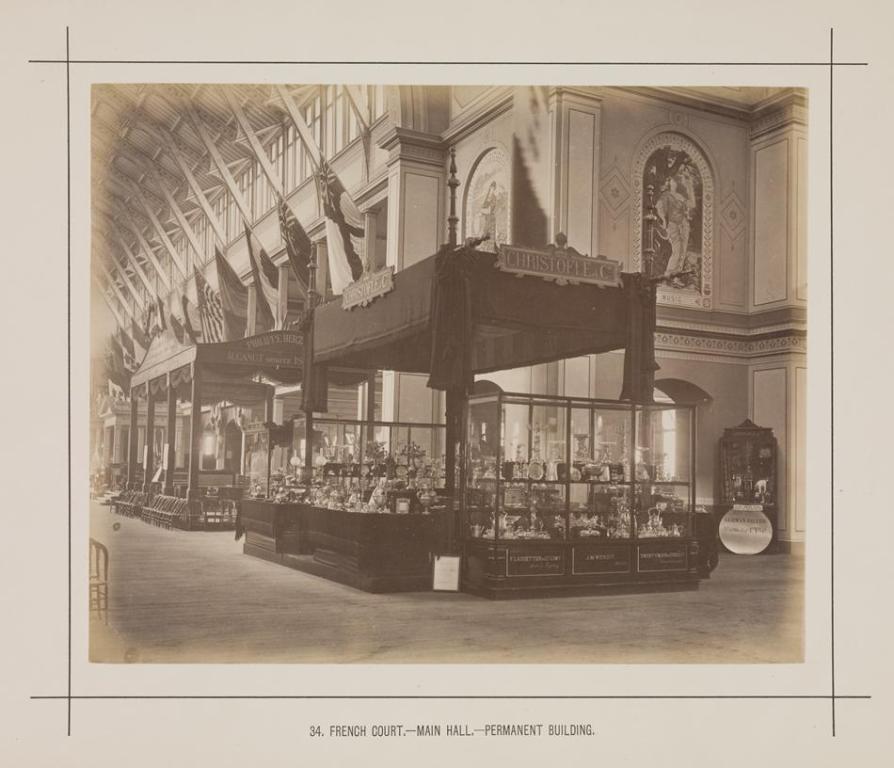
Photograph - French Court, Great Hall, Exhibition Building, 1880-1881, Reg. No: MM 107833, courtesy Museum of Victoria: View of the exhibit of Christofle & Co. in the French Court in the Great Hall at the 1880 Melbourne International Exhibition held at the Exhibition Buildings, Carlton Gardens, between 1 October 1880 and 30 April 1881.
In addition to the main permanent Exhibition Building, two permanent annexes as well as a large, central wooden temporary annexe was constructed to house the courts of various countries, or to include larger items from countries already represented in the main Building. France had courts in both the main Exhibition Building as well as in the central temporary annexes, on the western side of the main avenue between Great Britain and Germany.
Christofle & Co., of 56 Rue du Bondy in Paris, exhibited under class 24, Goldsmiths' and Silversmiths' Work, where they exhibited various silverware, seen in their display case in this photograph on the south-eastern corner of the transept in the main building. Singled out for comment in the Argus newspaper, one journalist wrote: 'Messrs. Christofle, of Paris, exhibit a pair of very fine candelabra and centre-piece, executed in bronze, encrusted with leaves and flowers; and another pair in oxidised silver, ruinè in style. Patine has been used to give an additional charm to this fine and most artistic work.' Retrieved from HERE
LIX.—August 13. 1920, at Mount Druitt, Gustave Adolphe Lix, late of France, aged 84 years. Family Notices. (1920, August 16).The Sydney Morning Herald(NSW : 1842 - 1954), p. 8. Retrieved from http://nla.gov.au/nla.news-article15902372
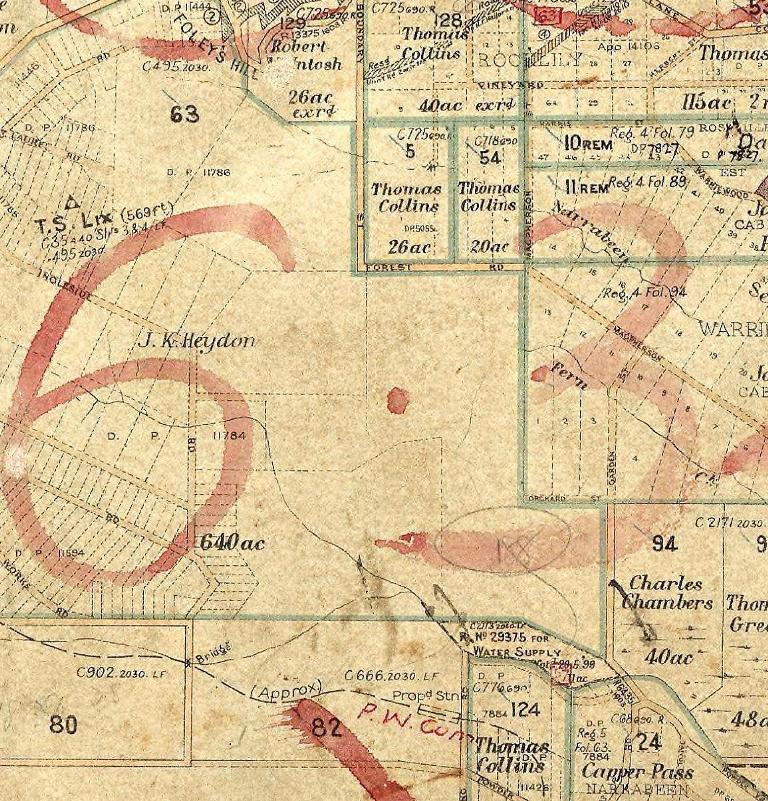
Primary Application - Joseph Kentigern Heydon 6 acres 1 rood 1 perch on Pittwater & intersection Waterview & Mona Streets hire Warringah Parish Narrabeen County Cumberland Volume 2486 Folio 96 Access Direction: Effect: Early; Duration, Date range: 12/04/1913 to 04/11/1913: NSW State Records
Mr. J. K. Heydon Dies Abroad
Mr. Joseph Kentigern Heydon, whose death has been reported from England, was a noted Catholic and the author of several outstanding Catholic books. He was also the founder of the firm now known as Felt and Textiles Limited.
Born in Sydney in 1884, he was the only son of the late Hon. L. F. Heydon, M.L.C., and grandson of Jabez King Heydon. He was educated in England by the Benedictines at Downside School, and later went to the Massachusetts Institute of Technology in Boston (U.S.A.), where he studied physics. Returning to England he married Miss Alice Leary, and worked as an industrial chemist in London for some years. Later he returned to Sydney, qualified as a solicitor and became his father's partner in the firm of Messrs. Heydon and Heydon. But science was always his first love, and this led him to Interest himself in the processes of manufacturing and eventually to the development of a small textile concern — The Textile Company of Sydney, which has since grown into Felt and Textiles of Australia, Limited, Among chess players it will be recalled that he represented New South Wales in tournaments and enjoyed an international reputation as a composer of chess problems.
Capable Writer
In later life Mr. Heydon settled again in England and devoted himself to writing. Earlier, he had been an active member of the Sydney Catholic Evidence Guild. It was a natural development that Mr. Heydon later spent his leisure in England in writing books on Catholic topics. He usually addressed himself more particularly to the university man. His books in this category are 'The God of Reason,-' The God of Love,' and 'Live and Help Live.' Also, 'The Wonder of It,' which is still In the publisher's hands. These books were remarkably well received. One critic said of 'The God of Reason,' that 'it shows Mr. Heydon as a Catholic apologist of the first order.'
Mr. Heydon's interest in social and economic questions also dated from his student days. His early book, 'Wage Slavery,' was a plea for co-operation between employer and worker for their mutual good. He supported the Catholic Social Guild in England. By degrees, however, he ceased to believe in the possibility of reform under the existing system, and began to look to the corporative order.
He also contributed articles on the subject to various political Journals, both in England and the United States. His books also include the novel, 'World . D,' a scientific fantasy on the lines of Mr. H. G. Wells; early books. His last book was 'The Wonder of It.' Mr. Heydon is survived by his wife and a son, Dr. Bernard Heydon. Mrs. W. E. Collingridge, of Hunter's Hill, is a sister. — R.I.P. Mr. J. K. Heydon Dies Abroad. (1947, October 16). Catholic Weekly (Sydney, NSW : 1942 - 1954), p. 6. Retrieved from http://nla.gov.au/nla.news-article146606824
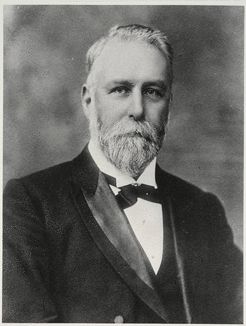 Louis Francis Heydon (1848–1918) - The death took place suddenly yesterday afternoon of Mr. Louis Francis Heydon, M.L.C., at his residence, Kentigern, Mary street, Hunter's Hill. Mr. Heydon was in his garden, among the flowers, when he suddenly felt ill, and returned to the house, expiring almost immediately. Born in Sydney 70 years ago, the son of the late Mr. J. K. Heydon, he was educated at St. Mary's Seminary, and afterwards at the Sydney Grammar School. As in the case of his brother, Mr. Justice Heydon, the President of the State Industrial Arbitration Court, he was attracted by the law, and he became one of Sydney's leading solicitors. Entering the Legislative Assembly in January, 1882, as member for Yass Plains, he quickly made his way in politics, and he was Minister for Justice in Sir John Robertson's Ministry from December 22, 1885, to February 4, 1886. He resigned from the Assembly in 1886, and he entered the Legislative Council in 1889. He was always prominent in debate. He was recognised, indeed, as one of the best debaters in the House. He brought a keen intellect and a broad outlook to bear on every measure that came before him as a member of the Chamber, and his knowledge of Parliamentary procedure was equalled by that of few other men in the House. He was a man of fine literary attainments, and was a member of the Shakespeare and other well-known societies. In art matters, too, he was very interested. A prominent member of the Roman Catholic Church, he took a keen interest in all matters relating to that denomination. He was president of the St Vincent de Paul Society, with which institution he had been connected since its foundation many years ago. In the early days of the war he was prominently identified with the movement for the early closing of hotels. The deceased gentleman leaves a son and a daughter - Mr. J. Kentigern Heydon and Mrs. W. Collingridge. There will be a requiem Mass at Villa Maria on Monday, at 10.30, and the funeral will take place at the Field of Mars Cemetery. DEATH OF MR. L. F. HEYDON, M.L.C. (1918, May 18). The Sydney Morning Herald (NSW : 1842 - 1954), p. 14. Retrieved from http://nla.gov.au/nla.news-article15768917
Louis Francis Heydon (1848–1918) - The death took place suddenly yesterday afternoon of Mr. Louis Francis Heydon, M.L.C., at his residence, Kentigern, Mary street, Hunter's Hill. Mr. Heydon was in his garden, among the flowers, when he suddenly felt ill, and returned to the house, expiring almost immediately. Born in Sydney 70 years ago, the son of the late Mr. J. K. Heydon, he was educated at St. Mary's Seminary, and afterwards at the Sydney Grammar School. As in the case of his brother, Mr. Justice Heydon, the President of the State Industrial Arbitration Court, he was attracted by the law, and he became one of Sydney's leading solicitors. Entering the Legislative Assembly in January, 1882, as member for Yass Plains, he quickly made his way in politics, and he was Minister for Justice in Sir John Robertson's Ministry from December 22, 1885, to February 4, 1886. He resigned from the Assembly in 1886, and he entered the Legislative Council in 1889. He was always prominent in debate. He was recognised, indeed, as one of the best debaters in the House. He brought a keen intellect and a broad outlook to bear on every measure that came before him as a member of the Chamber, and his knowledge of Parliamentary procedure was equalled by that of few other men in the House. He was a man of fine literary attainments, and was a member of the Shakespeare and other well-known societies. In art matters, too, he was very interested. A prominent member of the Roman Catholic Church, he took a keen interest in all matters relating to that denomination. He was president of the St Vincent de Paul Society, with which institution he had been connected since its foundation many years ago. In the early days of the war he was prominently identified with the movement for the early closing of hotels. The deceased gentleman leaves a son and a daughter - Mr. J. Kentigern Heydon and Mrs. W. Collingridge. There will be a requiem Mass at Villa Maria on Monday, at 10.30, and the funeral will take place at the Field of Mars Cemetery. DEATH OF MR. L. F. HEYDON, M.L.C. (1918, May 18). The Sydney Morning Herald (NSW : 1842 - 1954), p. 14. Retrieved from http://nla.gov.au/nla.news-article15768917
LATE MR. L. F. HEYDON, M.L.C.
Probate has been granted of the will of the late Mr. Louis Francis Heydon, M.L.C., solicitor, of Sydney, who died on May 17 last. His estate is of the net value of £14,853, nearly all of which consists of mortgage investments. The bequests are £250 to the rector of St Joseph's Foreign Missionary College, Mill Hill, England; £200 to the Roman Catholic Bishop of Bathurst, for the cathedral there; £100 to the rector of Riverview College; £100 to the Hunter's Hill branch of the Society of St. Vincent de Paul; £100 to the Superior Council of Australasia of the same society; £300 to the Mother Prioress of the Carmelite Convent, Dulwich Hill; £50 each to the parish priest at Villa Maria, Hunter's Hill, and the Rev. Egall, of Ryde, for masses for repose of testator's soul; £50 to the Bishop of Rockhampton for the Roman Catholic Church at Bowen. The annuities include £10 each a month, for 10 years, to the Mother Prioress of the Carmelite Convent, the Superioress of the Marist Convent, Woolwich, and the Provincial of the Marist Order in Australia. The residue of the estate is devised to testator's widow, to his daughter (Mrs. Mary E. Collingride), and to his son(Joseph Kentigern Heydon), who is appointed sole executor and trustee. LATE MR. L. F. HEYDON, M.L.C. (1918, September 17). The Sydney Morning Herald (NSW : 1842 - 1954), p. 8. Retrieved from http://nla.gov.au/nla.news-article15802936
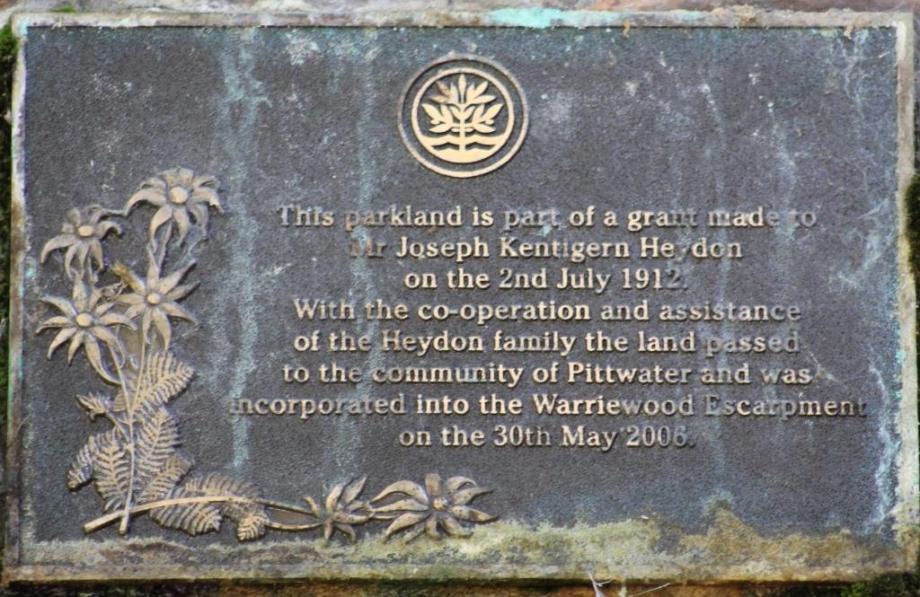
References And Extras
- TROVE - National Library of Australia
- Shelagh Champion OAM and George Champion OAM, in their Profiles of the Pioneers in Manly, Warringah and Pittwater (1996 - revised 2013)
- Herbert Hedemann – the tough versatile veteran. Tuesday, 23 October 2018. Tuesday, 23 October 2018. Retrievd from https://www.austultrahistory.com/2018/10/
- Roads In Pittwater: The Barrenjoey Road
- Ingleside Powder Works
- The Macphersons Of Wharriewood: The William Joseph Macpherson Albums
- Leon Houreux
- Pittwater Restaurants You Could Stay At The Rock Lily Hotel – Mona Vale
- St Cloud Jersey Stud: Elanora Heights
- Waratah Farm: Ingleside - The Narrabeen Plum
Also Available:
- Pittwater Roads II: Where the Streets Have Your name - Scotland Island
- Pittwater Roads II: Where the Streets Have Your Name - Newport Beach
- Pittwater Roads II: Where the Streets Have Your Name - Clareville
- Pittwater Roads II: Where the Streets Have Your Name - Avalon Beach
- Roads In Pittwater: The Bay View Road
- Motor Car Tours To And In Pittwater Show Us The Way This Place Once Was
- Roads To Pittwater: The Wakehurst Parkway Along Old Oxford Falls Track
- Roads To Pittwater: The Pittwater Road
- Roads To Pittwater: The Sandspit Punt and Spit Bridge
- Roads To Pittwater: The Mona Vale Road
- My Holiday by Charles de Boos – 1861
NOTICE UNDER REAL PROPERTY ACT.
APPLICATIONS have been made to bring the lands respectively described wilder the provisions of the Real Property Act. Caveats may be lodged on or before the 11th February, 1927:—
No. 28,067, 1/2 Margaret Wilson, 105 a. 1 r, 6| p., por. 41 (ph.) and pt. por. 30 (ph.), Cabbage Tree rd., Mona Vale, ph. of Narrabeen. NOTICE UNDER REAL PROPERTY ACT. (1927, January 7). Government Gazette of the State of New South Wales (Sydney, NSW : 1901 - 2001), p. 52. Retrieved from http://nla.gov.au/nla.news-article220227319
NOTICE UNDER REAL PROPERTY ACT.
APPLICATIONS have been, made to bring the lands respectively described under tlie provisions of the Real Property Act. Caveats may be lodged on or before the respective dates mentioned:— 23rd February, 1928.
No. 28,928. Clara Elizabeth Rasmussen, 1 r. 30 p., cnr. Mactier and Park Sts., Narrabeen. NOTICE UNDER REAL PROPERTY ACT. (1927, December 23). Government Gazette of the State of New South Wales (Sydney, NSW : 1901 - 2001), p. 6020. Retrieved from http://nla.gov.au/nla.news-article222999155
Under instructions from PERPETUAL TRUSTEE COMPANY (LTD.),
In the Estate of the late Solomon Cohen.
MONA VALE, Parish of Narrabeen.
Near Rock Lily Hotel,
No 1. -Lots 4 and 6, Section 2, Lane Cove-road.
No 2. --Lots 9 and 10, Section 4, Lane Cove-road.
Nos. 1 and 2 each have a frontage of about 3 chains to Lane Cove-road and 2 chains, 92 links« to Bungan Street, comprising an area of about 3 roods 20 perches.
TORRENS TITLE.
Situated in a growing and popular district. BACKHOUSE and GOYDER will offer the above Property at PUBLIC AUCTION, In the REAL ESTATE ROOMS, 16 Martin-place, on THURSDAY, 8th November, at 2.30 p.m. Advertising (1923, October 27). The Sydney Morning Herald (NSW : 1842 - 1954), p. 5. Retrieved from http://nla.gov.au/nla.news-article16101978
AN "ARMY" CRISIS?
General Bramwell Booth.
(BY J.O.)
General William Booth, the Illustrious founder of the Salvation Army, laid down the arms of his earthly warfare on the evening of August 20, 1912. On the following day the Army's legal adviser, Dr. A. W. G. Ranger, in the presence of a company of commissioners, opened a sealed document bearing the Inscription, "The appointment of my successor; William Booth, 21st August, 1890."
When the contents wore made known, Bramwell Booth, eldest son of the deceased founder, was declared to be the legally appointed general. William Booth was gathered unto his fathers in ripe, honourable old age, and his son Bramwell has reigned In his stead 16 years. In the eyes of Salvationists this transition of position was natural. "Mr. Bramwell" had grown up with the movement from its earliest days, and even the best of the old evangelists who were the back-bone of the Christian mission before It adopted the more militant title of "The Salvation Army," recognised him as his father's right-hand man. From all points of view he was the rightful heir to the general-ship. Even If ho had not been appointed by the poll deed of his father the Army near and far would have voted him into the position. For 16 years he has been the official head of a wonderful organisation, The Army with Its world-wide religious and social activities Is one of the wonders of the 20th Century. Church leaders as well as that portion of the public Interested In the general uplift of human kind, whilst feeling sympathy with the general and the Army In this critical illness, will be awakened to renewed interest. Questions arise. How have the "wheels within wheels" been moving these 16 years? And what would be the results of another general being appointed in the same old way. To begin, there have been disappointments, and the Inner machinery has not been entirely free from friction. It was rumoured among officers that when "the old general" shuffled off this mortal coil, the new general would "make things hum." The first general had founded up-to-date social institutions, kept old fogies off his Immediate staff, and boasted that at the age of 72 he was not an old man, and in many ways he kept abreast of the times. Nevertheless, he had a rigidity of Christian statement which would not stand the acid test of silence, and he held tenaciously to views which modern research had wiped off the slates of the old theologians. It was believed that the second general bad many surprises up his sleeve, but unfortunately none of the rumoured innovations materialised. Systems of administration ripe for reconstruction Were simply shelved and only a few changes, not at all popular, were effected. Then, a most disappointing feature has been the contemplated perpetuation of the first general's rulo that oacb. general shall appoint his own successor. It la evident that the present general has had no Intention of surrendering what he supposed to be his personal prerogative, and this has resulted in a certain amount of private controversy. Individual officers In Important positions have expressed their views to the general, the high council has tried to press the issue with him. A very weighty appeal and warning have been presented by the American forces, and it is understood that church dignitaries and influential lay-men, as well as, high legal authorities, are all immensely interested. Some of them have taken part In an effort to break down the system of what might amount to hereditary titles. The simple fact is that the Army has become too democratic in spirit to allow the generalship to be confined to the Booth family.
As far as ability for the generalship Is concerned, the general's eldest son, Bernard, has not the qualifications; his daughter Catherine, who Is supposed to be In the running, Is not strong enough, and the wife of the general, even If she came into the position, could not possibly rise to do it justice. Deaths and resignations have materially Interfered with the earlier disposition of forces. Commandant Herbert Booth (now deceased), had a genius for big enterprises, but he resigned because of family friction. Commissioner Howard, who has also crossed the border line, would have made an acceptable general. George Pollard, who is now a director of Lyon's great catering establishments in England, was a most gifted and popular commissioner before his resignation. Commissioner Booth-Tucker's advanced age precludes him tackling big undertakings, Commander Eva Booth, youngest sister of the present general, brilliant preacher, and capable to her linger tips, now in charge of the Army In the United States, would possibly be accept-able to the high council, but she could never agree with Mrs. Bramwell Booth; the types differ so much. Miss Eva has visited Eng-land once only during the last sixteen years. Other capable officers might be mentioned, but highest In the list stands Commissioner Higgins, chief of the staff, second to the general. He is a man of middle age, sound judgment, business acumen, courageous outlook, generous disposition, platform girts, and spiritual unction. Possibly no officer in the army today holds so generally the confidence and good-will of officers of all range at home and abroad. As general, Commissioner Higgins would receive universal support. But, to come to the critical point, It is to be hoped that the general will even now atone for his years of procrastination by agreeing to subsequent generals being appointed by the high council, instead of continuing to be the choice of one Individual.
Cables from England have mentioned that over £20,000,000 worth of property is held In trust by the general. This may seem to Imply great risk. The founder's only concern in this connection was to have the properties secured in the best possible way. The systems of the Roman Catholic, Anglican, Methodist, and other Churches were all carefully taken Into account, and It was after the late Lord Haldane and others In the top rank of the legal profession had given their advice that the present system was adopted. The special difficulty to be got over was the dissimilarity of law existing In various countries. At present territorial commissioners hold a power of attorney from the general for the transaction of property business within their Individual commands. The subject has frequently had reconsideration, but legal ability has been unable to produce a better plan than the one In vogue.
[The above has been written by a former Under Foreign Secretary of International Headquarters of the Salvation Army.-Ed., "S.M.H."]
AN "ARMY" CRISIS? (1928, November 17). The Sydney Morning Herald (NSW : 1842 - 1954), p. 10. Retrieved from http://nla.gov.au/nla.news-article16509810
Bridge Fails At Inspection
When the Director of the V.D.C. (Brigadier T. Weavers) stepped from his car to inspect bridge building near Narrabeen yesterday, half the bridge fell down. Six or seven men who had been working on the bridge floundered round in; the water with pieces of the bridge structure. Over their heads another man swung slowly backwards and forwards on the end of a rope attached to a block and tackle.
Brigadier Weavers said: "That's the best 'fall in' I've ever seen."
Brigadier Weavers went to Narrabeen to inspect a V.D.C. engineers' unit. VJD.C. engineers can use only material in the vicinity to build bridges. Floating Footbridge They had succeeded in building a 50ft. wide floating footbridge across a deep creek. They then began a more ambitious bridge designed to carry vehicles.
One section of the V.D.C. began building out from the east bank and another from the west bank. The idea was to meet in the middle. But a race developed between the men building the east and west sections. The west section was easily leading, and was nearly half-way across the creek. But they had used insufficient stays, and the entire half of the bridge collapsed. -In a speech afterwards Brigadier Weavers said the V.D.C. in future would get more equipment, more instructors, and a bigger role to play in the defence of Australia. Bridge Fails At Inspection (1942, October 26). The Daily Telegraph (Sydney, NSW : 1931 - 1954), p. 5. Retrieved from http://nla.gov.au/nla.news-article247893311
To Henry Halloran
YOU KNOW I left my forest home full loth,
And those weird ways I knew so well and long,
Dishevelled with their sloping sidelong growth
Of twisted thorn and kurrajong.
It seems to me, my friend (and this wild thought
Of all wild thoughts, doth chiefly make me bleed),
That in those hills and valleys wonder-fraught,
I loved and lost a noble creed.
A splendid creed! But let me even turn
And hide myself from what I’ve seen, and try
To fathom certain truths you know, and learn
The Beauty shining in your sky:
Remembering you in ardent autumn nights,
And Stenhouse near you, like a fine stray guest
Of other days, with all his lore of lights
So manifold and manifest!
Then hold me firm. I cannot choose but long
For that which lies and burns beyond my reach,
Suggested in your steadfast, subtle song
And his most marvellous speech!
For now my soul goes drifting back again,
Ay, drifting, drifting, like the silent snow
While scattered sheddings, in a fall of rain,
Revive the dear lost Long Ago!
The time I, loitering by untrodden fens,
Intent upon low-hanging lustrous skies,
Heard mellowed psalms from sounding southern glens—
Euroma, dear to dreaming eyes!
And caught seductive tokens of a voice
Half maddened with the dim, delirious themes
Of perfect Love, and the immortal choice
Of starry faces—Astral dreams!
That last was yours! And if you sometimes find
An alien darkness on the front of things,
Sing none the less for Life, nor fall behind,
Like me, with trailing, tired wings!
Yea, though the heavy Earth wears sackcloth now
Because she hath the great prophetic grief
Which makes me set my face one way, and bow
And falter for a far belief,
Be faithful yet for all, my brave bright peer,
In that rare light you hold so true and good;
And find me something clearer than the clear
White spaces of Infinitude.
Henry Kendall
TO HENRY HALLORAN. (1864, September 17). The Sydney Morning Herald (NSW : 1842 - 1954), p. 3. Retrieved from http://nla.gov.au/nla.news-article13110396
TO HENRY HALLORAN.
On reading a beautiful Sonnet by him, entitled "Coolie Labour."
Great God be thank'd, that there are men like thee,
Who ever rise in sovereignty of mind,
Lifting against the oppressors of our kind
The voice of Genius,--still most sovereignly,
When boldest waxeth their arch-villainy,
Who, with the tyrant's purpose are combined!
I thank Almighty God, who intertwined
Strong hate of wrong with high mentality,
For such as thou, true Poet! Nothing can
Enhance the strengthening joy which now so thrills me,
In knowing how thy heart beats in this cause;
Though thy remembered kindness, Halloran!
Comes like a smile through the deep light which fills me
With happy thankfulness and pure applause.
TO HENRY HALLORAN. (1851, April 12). Empire (Sydney, NSW : 1850 - 1875), p. 6. Retrieved from http://nla.gov.au/nla.news-article60034062
Henry Halloran, grandfather of Henry F, was an Australian poet and civil servant who was born in Cape Town, South Africa on 6 April 1811. From the 1840s, Halloran's verses could be found in magazines and newspapers, and he became included in Sydney's literary circles. He was known for supporting and encouraging young writers, even reportedly finding Henry Kendall a job in the Colonial Secretary's Department.
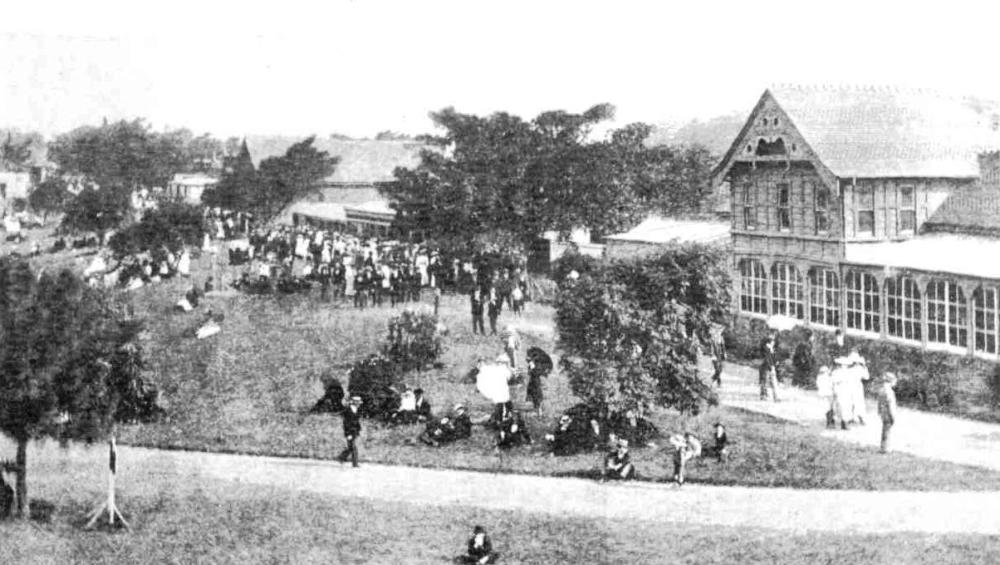
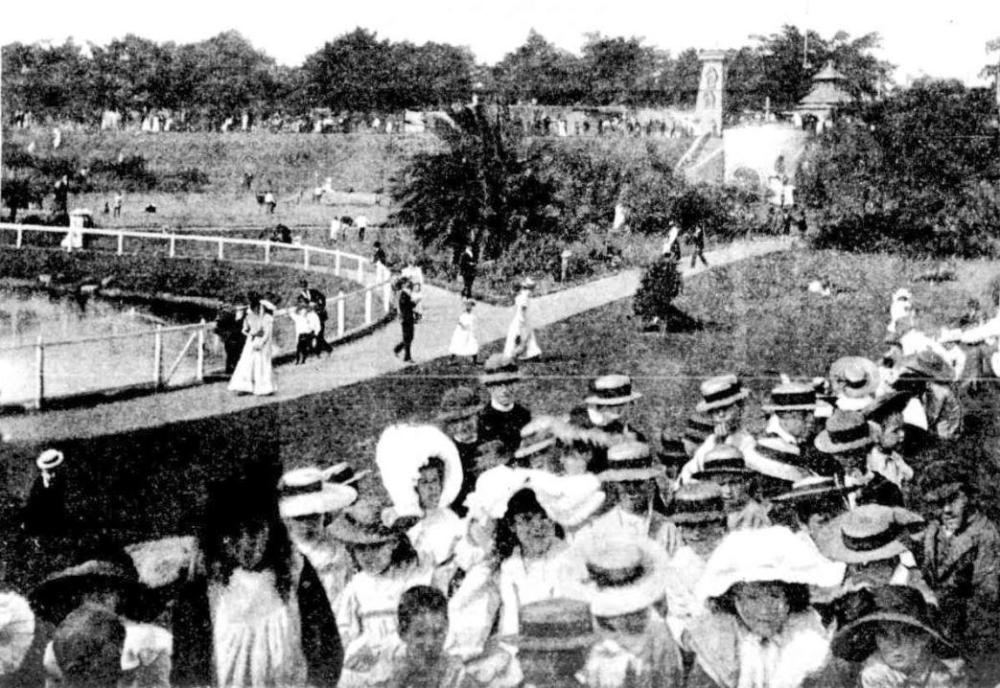
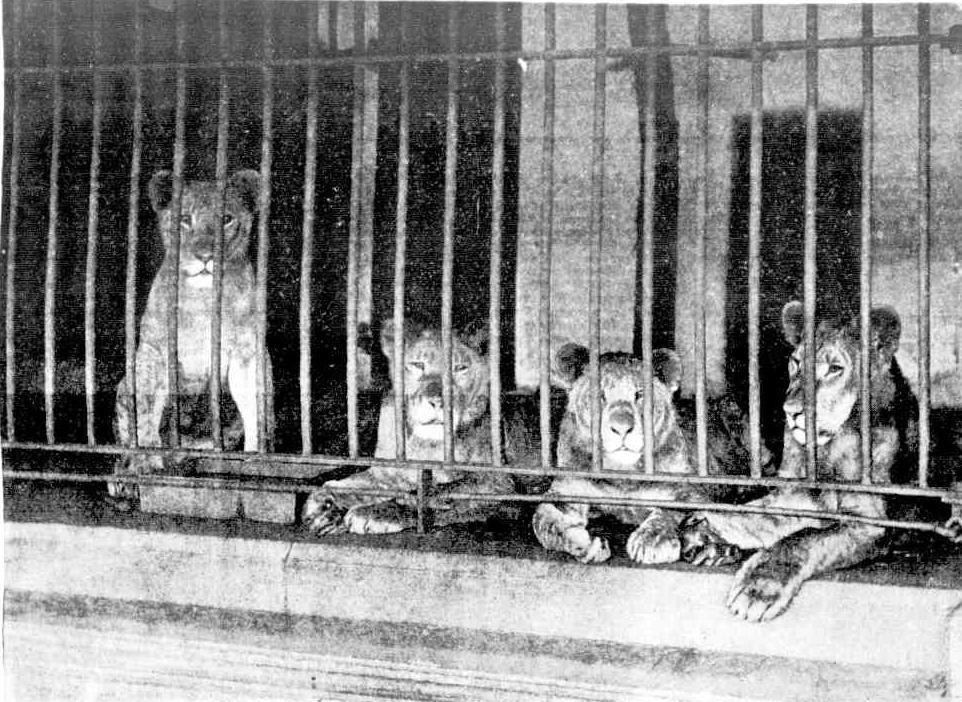
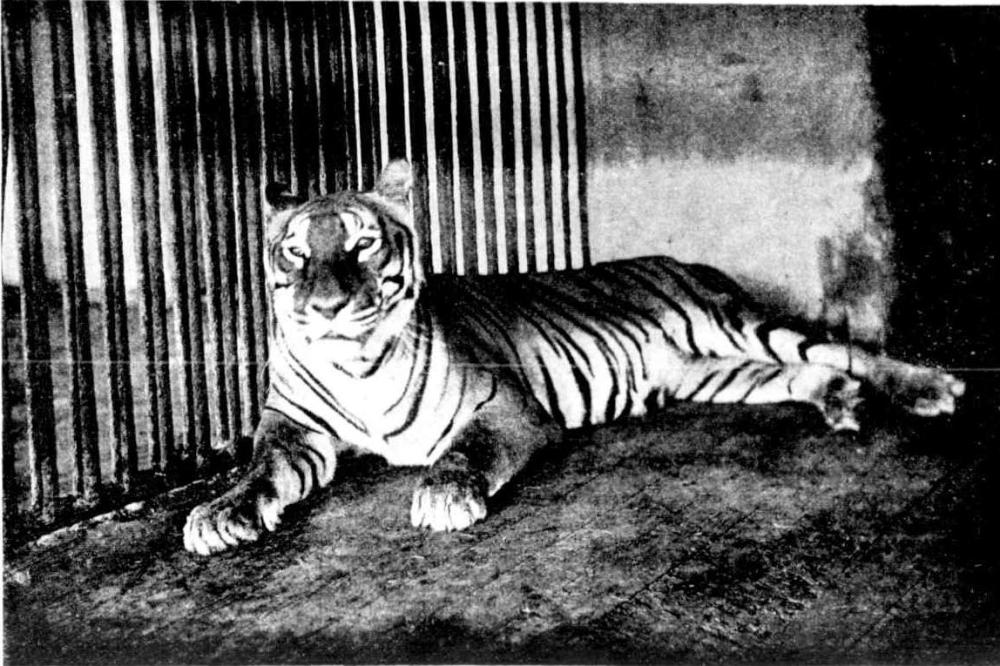
COLLAROY
Landmark Disappears
PIONEER MEMORIES
(By J.G.L.)
Collaroy's oldest landmark is disappearing. A week or two hence and the last will have gone of the long, low cottage in which Miss Jenkins, a daughter of one of the earliest residents, ended her days about 16 years ago.
That was before Narrabeen had come into its own and before the latter-day people who took up a position on the southern end of Long Reef Beach, which is the chart name for the three-mile stretch of sand and blue water that runs from Twights to the headland on the north, decided upon a name of their own, and very naturally dropped on Collaroy. There was nothing else for it. Narrabeen was not then considered to be among the nicest places on the coastline. It was somewhat wild in more than one sense. Many of the old-time folk coupled it up with Clontarf and Chowder Bay, and passed right on to Pittwater, where there, was no suspicion and very little doubt.
THE OLD TRADER.
Collaroy got its name because one of the oldest of the Newcastle traders ran ashore in the small bay, a little to the south of the present surf sheds and house. The steamer was making for Sydney with a full cargo and lots of passengers, many of whom were returning after a successful race meeting on the Hunter. There was no excuse for the mishap. The night was clear and the sea quite calm. It was within an hour of daylight when the old paddle-wheeler came to an abrupt stop in the second line of breakers.
Some of the gear, of the steamer came to light only last week-end, just at time, as it were, to be in the same picture with the broken walls and the big, unlucky Norfolk Island pine which was chopped down one day recently because it happened to stand right in the centre of one of the new roadways which are being run through the old home grounds. A big current has torn the southern end of the beach to pieces, exposing a lot of anchor-chain, a big wooden pile used for one of the straining lines in the efforts to refloat the steamer, and a fire bar or two, which would probably have been thrown overboard to lighten the vessel. The fire bar, thick with rust and barnacles, I carried away home.
THE JENKINS HOUSE.
The old Jenkins home was built on the 314 acre paddock and bush lot on the western side of the main road. That parcel of land, with the balance on the sea side of the road, was originally granted to Mr. William Cossar by the Crown. A lot of the country, especially that portion over which the Long Reef golf course now runs, was under cultivation in those early days. Sheep were kept on the hilly land behind the old homestead. Some of the old mesh wire fence which ran round the sheep paddocks can still be found. Very soon now all traces of the Jenkins' efforts will be wiped away. Mr. Ben. Tabsley was another of the early workers, round Narrabeen. He grew wheat and maize on the flats near the seashore. I have not yet been able to trace the exact location where Mr. Tabsley did his pioneering.
FRUIT-GROWING.
Mr. Cyrus E. Fuller, well known in Sydney, Bible Depot and Christmas card specialist, also was among the early workers round about Narrabeen. He planted : a big orchard under the foothills, between Collaroy and Jenkins Streets, and made quite a success of the fruit-growing. About 30 years ago Mr. Twight, still a resident, leased the Fuller orchard, and carried on the business of growing Early Newington peaches and Lord Nelson apples, passion-fruit were natives on the area. After a big blow one could shovel up the fallen fruit. Mr. Twight says that he many a time sold extra quality Newington peaches at 6d apiece. Fancy prices were easily obtainable. Travellers to and from the Hawkesbury bought eagerly.
Traffic was by coach, cart, and sulky. Mr. Black had much to do with the coaching. He carried the passengers who were doing the round trip, via Windsor and Sackville Reach. Mr. William Maddock, an old city bookseller, did the hooking for that run. Two journeys were made each way every week. The Hawkesbury trip was always recommended to visitors from far afield. I remember selling tour tickets to Mr. R. A. Proctor, and also to the much-travelled Mr. Smythe, who was his agent at the time he toured the Australian capitals with his talks on astronomy.
PLENTY OF SPORT.
In those days gillbirds were plentiful, and much shooting was done. Fishing, too, was good both in the lake and outside, on the reefs. It was the sport that attracted Mr. Gordon and Mr. Dillon, two expert linemen, who built small homes near the present "bundy" site. Mr. James Wheeler, who is now the oldest resident in the district, was familiar with Narrabeen when the place was in its infancy. His father many a time sailed a big ballast boat down to The Basin, on the north side of Long Reef, and spent a week or two on his lakeside grant, away from the worries of the city to which he belonged. His business, I understand, was In the Blue Bell Hotel, somewhere in Phillip Street.
All the old hands know that it was possible, even in years gone by, to spend a very pleasant day at Narrabeen. I am told that two well-known sportsmen resident in Manly made a remarkable return after a day on the northern beaches. They had hired one of the creamy horse- vehicles to take them out and home. All went well on the return until the driver lost his balance and tumbled off In the sand by the roadside. Neither of the sportsmen or the ponies knew of the mishap until the driverless carriage pulled up at the livery stables within a short distance of the old-time pier. How the coachman got home I do not know. More than likely he put in part of the night on the Collaroy. For a year or two the vessel was the Saturday night home of many a "tramp" and fisherman. One of Sydney's most successful booksellers told me that he had a fore-cabin "possie" on more than one occasion.
All these old-time Items and Interest are disappearing fast. Collaroy and Narrabeen will shortly be numbered among the nearer seaside suburbs. All the old-time links are being broken. Who knows when the sea will again leave the connections which helped to lift the Collaroy over the sand-bar and out into deep water; or who will raise another Norfolk Island pine to stand on the landscape with the giant which for half a century cast its welcome shadows across the lonely home threshold where Miss Jenkins spent more than half her life? COLLAROY (1925, October 3). The Daily Telegraph (Sydney, NSW : 1883 - 1930), p. 7. Retrieved from http://nla.gov.au/nla.news-article245046727
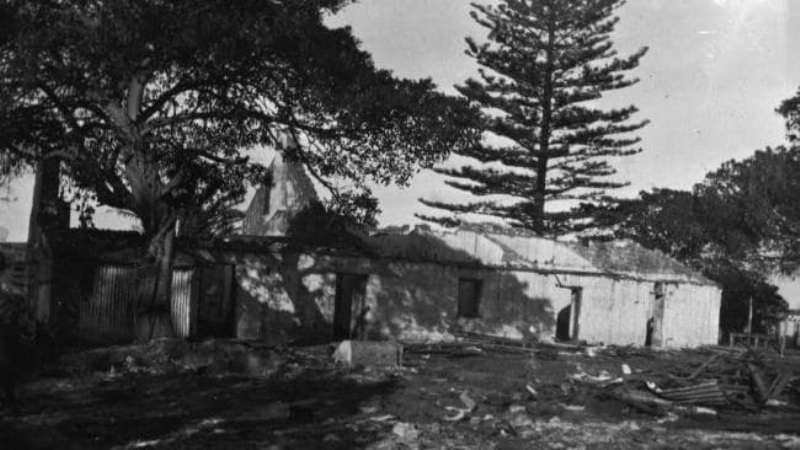
No 24. 'Ruins of Jenkin's home, Collaroy'. From album Historic pictures of Manly and Pittwater, 1856-1937 / compiled by Percy W. Gledhill, courtesy State Library of NSW
Visit: Roads To Pittwater - The Pittwater Road
Commissioner James Hay, chief officer of the Salvation Army for Australia, will open a new up-to-date home for little girls at Narrabeen on Saturday afternoon next. This is an institution of a commendable character seeing it meets the need of girls of a tender ago, for whom sole responsibility will be taken by the Army authorities In such matters as general care, training and development of character, also scholastic attainments. The home is entitled Florence House, and has been erected by the Salvation Army's own foreman, Mr. Brett, according to plans of the headquarters architect, and has accommodation for 10 inmates, while every attention has been given to fresh air and sanitation.THE CHURCHES. (1912, March 30). The Sydney Morning Herald (NSW : 1842 - 1954), p. 6. Retrieved from http://nla.gov.au/nla.news-article15321653
DEE WHY BEACH MANLY
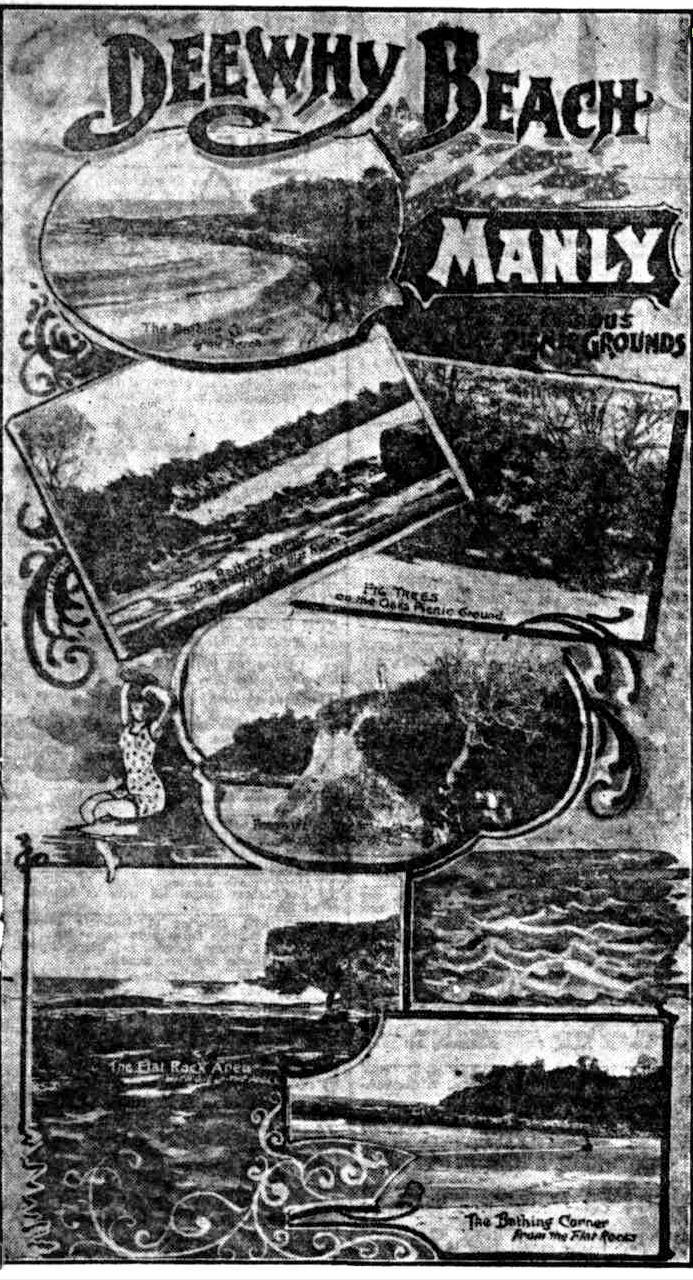
in Sydney's peerless necklace of ocean Jewels Deewhy Beach Is a brilliant gem. It Is one of the most beautiful spots between Manly and Narrabeen — about seven minutes' walk from Pacific Parade, which will shortly be connected by tram to Manly. Dee why Beach has long been' known as one of the choicest picnic resorts around Sydney, but the great .spreading movement which Is now taking place is about to cause this spot to be embraced by the builder, and to become on ideal place of residence for those who either wish to retire In peace to some scene of peace and beauty, or to those who love to spend their week-end where the water is bluest, the sand softest, the surf gentlest, and the air most invigorating.
This resort is now particularly in the public, eye because the famous Oaks Picnic Grounds, which have been known for years as one of Sydney's most attractive pleasure resorts, have been subdivided, and will on Anniversary Day be thrown open to the people for settlement. These grounds are beautifully situated. They are right on the beach front page at Deewhy Head, and command a scene where Nature reposes most gracefully. At the southern end, where the beach touches the estate, there Is fine shelter and a succession of flat rocks, amidst which are many clear crystal pools, admirable for bathing. From southerly busters or westerly gales It Is well protected, and those who make their homes here may enjoy all the pleasures of the sea side without any of its disadvantages.
For the angler this will make an Ideal site for a home, as the schnapper grounds are on the 100ft. reservation outside the eastern boundary, while Long Reef is opposite and Deewhy Lagoon lies at the back of the beach. The 100ft. reservation from the high-tide line enables one to ramble amongst the rocks to view the cliffs 100 to 120 feet high, to study the peculiar pot-holes 10 to 12 foot deep, and to enjoy in the shade the glory of the Pacific. Not only is Deewhy Beach a perfect place for the residence of the city man who, having been confined to his desk all the week, needs a week-end home by the sea, where it Is most restful, but It Is a fine spot for the squatter who would spend his summer at the seaside or the retired man who is seeking health and, peace.
Deewhy Beach Is really not a great distance from the city when one considers that the electric tram, when constructed will be able to land passengers to the Manly boat In fifteen minutes. The whole trip to and from Sydney is therefore well under the hour, but the main point Is that it Is a decidedly refreshing and enjoyable one. To the land speculator the Deewhy Beach Estate offers exceptional Inducements, for, judging by experience in regard to ocean frontages along this coastline, land values are bound to go rapidly ahead. Manly furnishes a striking example of what money can be made by In vestment In this direction. Land sold, only ten years ago from £10 to £15 per foot Is now worth from £30 to £100.. Manly's growing popularity Is bound, when the tram Is extended, to embrace Deewhy Beach, and there is little doubt that values will rise In similar proportion to those at Manly. A great crowd Is expected to attend the sale of the Deewhy Beach Estate on Anniversary Day, and Messrs. Horning and Co. have so provided that the trip may be a picnic as well as a business excursion. DEE WHY BEACH MANLY (1911, January 14). The Sun (Sydney, NSW : 1910 - 1954), p. 4 (FINAL SPORTING). Retrieved from http://nla.gov.au/nla.news-article221565666
THE PREMIER'S HAPPY FAMILY.
CHAT WITH Mrs. McGOWEN-A MESSAGE TO ' SUNDAY TIMES ' READERS.
The world knows the movements of the modern -politicise; the world reads his utterances day by day, but little, indeed, do the people hear of the family ties, the inner life of men who control our political destinies. The Premier of New South Wales is no exception to the rule. and-*t i» of interest to peep behind the scenes, to chat with the mate of his fortunes, the one who, through goad or ill, has braved the battle by his side and now tends to his material wants in the stress of the fight and the worries of State control. A 'Sunday Times' representative, found the I Premier's home in Pitt-street, Redfern, a pleasant, simple suburban, house, with no outward sign to impress the world 'that here lived James T. McGowen, Premier of New South Wales.'
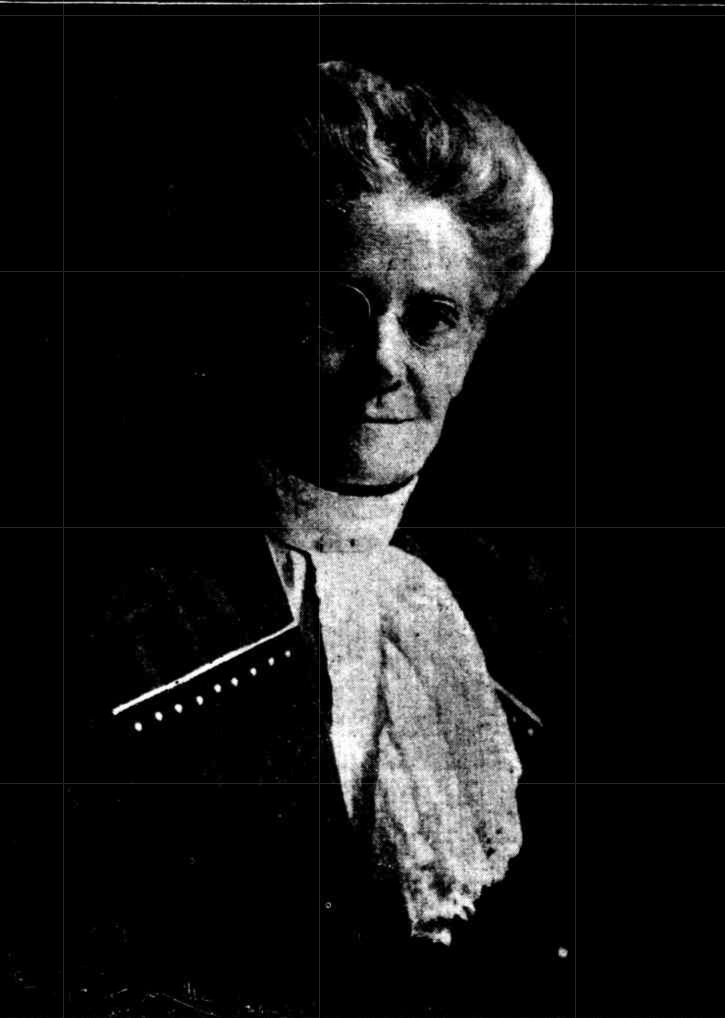
MRS. J. S. T. MCGOWEN.
If the fortunes of our Premier have gone high, he apparently has no desire to challenge ,the world with display. His house expresses hiss frugality, the rugged kindliness of the blunt champion of the people and the proud father of eight happy boys and girls. 'Sit down,' said Miss McGowen, 'and I'll fetch mother.'
In the interval the visitor had time to absorb the air of home, the sense of benevolent control, and to mark in his look THE TROPHIES OF HIGH OFFICE, spades, mallets, shovels, which told of the laying of many foundation-stones. On the walls were addresses of ''admiring and loyal' supporters. These were interspersed with photos, of the family, frank-looking, manly boys, and pleasant girls.
'Good morning,' said a pleasant-voiced little lady, entering the room and giving the visitor a hearty hand clasp. ' It was Mrs. McGowen:
Getting ready for.Christmas, Mrs. McGowen ? 'Yes; can't you hear the noise of my big, bouncing boys ? ' she said, referring to the rollicking youths who were having the time of their lives in the other rooms. And everything is ready ? 'Quite. Jim will be so happy with the boys round him. And then it's my birthday, so we shall have a jolly time. But my husband doesn't live to eat, he eats to live. Plain living and high thinking appear to be the rules of his life. And he's so easy-going. Nothing worries him. Just staid and stolid'. They say he's slow, but I think.it better to be slow arid sure don't you. I'm just the reverse, and often tell him I do the worrying. It makes me so nervey this.public life. However, I feel better after my holidays.' .
How do you like Government House functions ?' 'I've got used to them. And Lady Chelmsford is so sweet and nice. I just sit down and tell her all my troubles. We're just good friends. She was so helpful to me before I went to the Coronation in England.' Did you enjoy that ? : 'It was a dream from start to finish. I was BUBBLING WITH PLEASURE AND EXCITEMENT all the time. Before I went they frightened me with all sorts of stories about etiquette, snobbery, and having a maid, and all those silly things. Indeed, I once said I wouldn't go. But Jim wouldn't go without me.' Tell me about the Court. 'Oh,.. it was fine. Beautiful women, and such pretty dresses. And how kind they wero to me. They dressed me so nicely, and Miss Coghlan and I went together. V,'e just marched past the King and Queen and made our bows. She is' such a sweet, good woman, and so homely and motherly with her children. We all loved her. With such a Queen the nation's women .lave a fine example.' How did Mr. McGowen look in his Court dress ? '?Just splendid. He's so big and strong. I wish, he would wear it oftener. Lord Chemnsford thinks he looks so well in it.' How did the Old Country impress you ? ? 'Well, I saw little of the shade, or darker side. I was in the sun. Everything was so delightfully new, be pleasant. I left Australia with many prejudices about England and its people. I came back with such a different view. We're just one big family, and we shouldn't find time to growl. I got a fright when I was there. Mr. Holliman, the Secretary of the Treasury, came to us one day and said the Government had been knocked out, and that Jim was Premier no more. 'Don't worry,' said Jim, 'life's too short. Everything will come right.' And it did. Mr. Wade couldn't form his Ministry, and so we came back to Australia as we went.' What did your friends say after the trip ? ? ' 'You Jiaven't changed. We thought you would have been such a grand lady, and wouldn't talk to us after that.' they said to me. But I just told them that I had lived too long to become vain and silly. And there's no happiness in being snobbish. I find enough to be proud of in my big, strong boys and girls. Goodness and mercy have followed me all the days of my life. What more do we want than that. Goodbye, and a Happy New Year' to you.'.
THE PREMIER'S HAPPY FAMILY. (1912, December 29). Sunday Times (Sydney, NSW : 1895 - 1930), p. 25. Retrieved from http://nla.gov.au/nla.news-article120671267
Road Changes Within The Valley
MAIN ROADS ACT, 1924-1963
Section 264 of the Local Government Act, 1919
Shire of Warringah. Main Road No. 164—Pittwater Road. Construction between Gondola Road and Warriewood Road.
NOTICE is hereby given that the levels of Main Road No. 164—Pittwater Road, between Gondola Road and Warriewood Road and so much of any side roads thereby affected within the Shire of Warringah in accordance with and as shown on plans Registered No. 164.G2531 exhibited at the Head Office of the Department of Main Roads, 309 Castlereagh Street, Sydney, at the Department's Metropolitan Division, Milson's Point and at the Council Chambers of the Warringah Shire Council, Brookvale, and duly notified in the "Sydney Morning Herald" on Thursday, 22nd November, 1962, and in the Government Gazette on Friday, 7th December, 1962, have been approved.
The levels are now fixed and/or refixed and will take effect from the date of publication of this notice.
Signed and sealed at Sydney, this 6th day of November, one thousand nine hundred and sixty-four.
I, John Alexander Lachlan Shaw, The Commissioner for Main Roads have hereto affixed the Official Seal of the Commissioner for Main Roads In the presence of—
C. W. Mansfield, IP. (D.M.R. No. 479-1,117)
(L.S.)
J. A. L. SHAW.
DEPARTMENT OF MAIN ROADS (1964, December 11). Government Gazette of the State of New South Wales (Sydney, NSW : 1901 - 2001), p. 4021. Retrieved from http://nla.gov.au/nla.news-article220345793
NOTICE UNDER REAL PROPERTY ACT.
APPLICATIONS having been made to bring the lands hereunder described under the provisions of the Real Property Act, Certificates of Indefeasible Title will issue, unless Caveats be lodged in accordance with the Third Schedule to the said Act on or before the 31st July, 1912 :—
No. 14,499. APPLICANT:—John Thomas Collins, Narrabeen. LAND : —County Cumberland parish Narrabeen, shire Warringah, 2 acres 37 perches and 3 acres 37 perches, on Narrabeen Lagoon, and on
Manly to Pittwater road,—parts 50 acres (portion 47 of parish), granted to William Bernard Rhodes; adjoining property of J. T. Collins. NOTICE UNDER REAL PROPERTY ACT. (1912, June 12). Government Gazette of the State of New South Wales (Sydney, NSW : 1901 - 2001), p. 3668. Retrieved from http://nla.gov.au/nla.news-article221608288
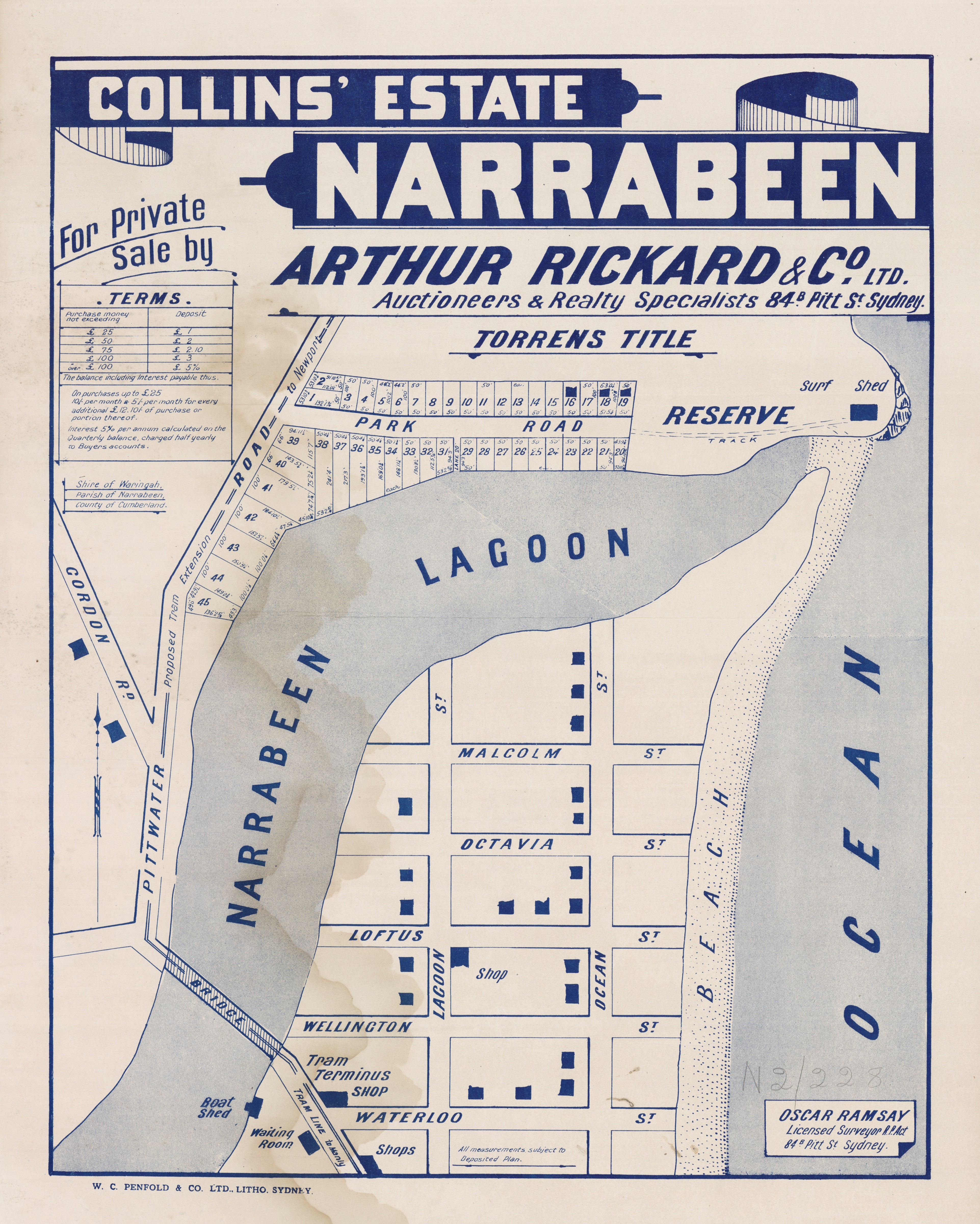
Collins' Estate - Narrabeen - Gordon Rd, Pittwater Rd, Park. Item No.: c050370235, courtesy State Library of NSW
We have seen the fields where generations of people farmed and made a living from tomatoes, cabbages and many other kinds of fruits and vegetables, and where some of us once had horses in paddocks, turn into smaller suburban lots with townhouses and even towers of flats crammed in. The industrial areas have spread and shiny new concrete and glass structures house offices.
The community is fortunate that it has individuals and organisations, such as the Warriewood Residents Association, working to ensure the Warriewood Wetlands exists still and that green areas are being set aside so those who live so close together have spaces they can get to - to exhale and play.
The development of the farms and the wonderful people who came here as part of that Warriewood to Mona Vale market garden expansion past those early 1900's land sales is a story unto itself - however, two items - one from Sheep Station Hill and one from the floor of the valley itself, are a kept record of what this place looked like for the parents of the current generation, and for their parents too.
As Green Hills still fill our eyes around Warriewood, courtesy of Elanora Heights and Ingleside, going west a little bit runs next, and the development of a great community there. From Warringah Shire Council Minutes of Meetings:
Greenhills and Collinwood Progress Assoc.16/2/27; -. Requesting (1) that the promise made some time, ago to erect street name boards in Collinwood be carried.out (2) that a footpath be constructed on the east side of Pittwater Road from Narrabeen Bridge to Walsh Street, (3) that the two bridges at Nareen Park Road and over Narrabeen Creek, be furnished with footways on the east side, (4) that the owner of the dilapidated building at the corner of Kobado and Powderworks Roads be required to repair or remove the verandah, and (5) that a better supply of fresh-water be kept in the water trough at the junction of Powderworks' and Pittwater Roads. To be informed that items (2) and )3) Will no doubt receive attention as the main road is being re constructod by the Main Roads Board.
